|
11 Mar
2020 |
Bio4Self wins techtextile innovation Award |
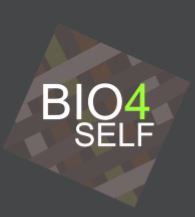 |
Our project, BIO4SELF won the prestigious techtextil innovation award in the category sustainable solution in Frankfurt on May 14, 2019.
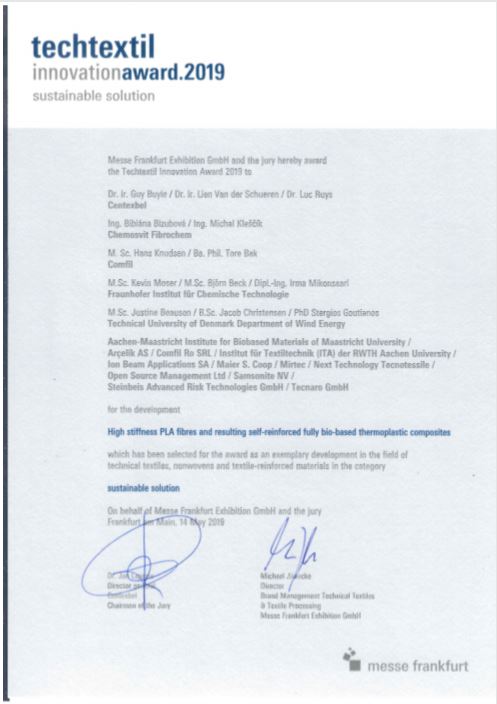
The project, consisting 16 consortiums focuses on developing biobased and easy-to-recycle self-reinforced composites based on PLA fibers. Dr. Parva Chhantyal from Steinbeis Advanced Risk Technologies (R-Tech) is responsible for the workpackage that evaluates the environmental and economic impact of the project. Congratulation to the whole team!
|
|
|
|
|
|
09 Mar
2020 |
Nano-Risk Radar considered for EU Innovation Radar |
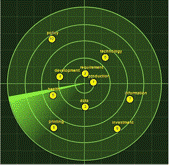 |
At the end of the EU H2020 project caLIBRAte, the technical reviewer appointed by the EC gave a "Thumbs Up" to the the Nano-Risk Radar tool, a Horizon scanning tool developed by Steinbeis R-Tech for identifying, analyzing and monitoring emerging risks in the field of nanotechnology.
The Nano-Risk Radar is an Horizon Scanning tool for identifying emerging nanosafety trends. The tool can be used for the identification and location of emerging perceived and real nano-related risks. In addition, the tool can assess the identified risks according to their criticality based on current trends within social media and also on expert judgement and scientific publications.
The Innovation Radar is a European Commission initiative to identify high potential innovations and innovators in EU-funded research and innovation projects. The Innovation Radar assessement is based on structured information captured via a questionnaire. The questionnaire is filled in by an independent innovation expert contracted by the European Commission. After a thorough analysis of the project outcomes deliverables and results, the expert identifies the innovations (technology, product, service, methodology) emerging from the project . All required information about these innovations and their market readiness is captured during an interview with consortium representatives usually during a review meeting. This structured information is then automatically analysed via a methodology developed be the Joint Research Centre of the European Commission. |
|
|
|
|
|
06 Dec
2019 |
Steinbeis R-Tech Senior Project Manager Prof. Maile publishes new book |
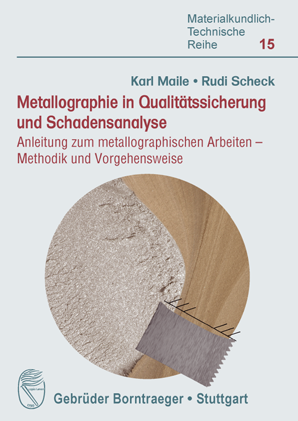 |
Steinbeis R-Tech Senior Project Manager Prof. Dr. Karl Maile, along with Herr Rudi Scheck, have recently published the book Metallographie in Qualitätssicherung und Schadensanalyse (Metallography in quality assurance and damage analysis - see the two-page flyer for more details: Metallographie in Qualitätssicherung und Schadensanalyse - Flyer).
Review the following two-page flyer for more details:
Metallographie in Qualitätssicherung
und Schadensanalyse - Flyer
Metallography in quality assurance and damage analysis
This book provides a brief introduction to materials science and describes the influence of manufacturing and processing on metal microstructure. The location and orientation of samples to produce polished sections from is a critical parameter which affects the conclusions of each and every metallographic analysis. This is where targeted action must be taken to ensure that manufacturing and operational defects in metal components are reliably detected.
Evaluating the acceptability of irregularities in a metal sample requires proper preparation, experience in macroscopic and microscopic evaluation of textures and knowledge of the relevant standards and guidelines. Numerous documentations and case studies exist to provide assistance in the practical procedure. The authors explain characteristic features of different types of defects and suggest optimized procedures or alternative preparation methods.
Assessing damage and material failures is a particularly difficult task for metallographers. The decisive factor for success is the correct analytical approach, the proper choice of the grinding position and its correct orientation. Practical instructions to tackle these task are presented and explained using practical, real life examples. A glossary of relevant terms is presented in the appendix to close gaps in knowledge in the adjacent fields of science, metallurgy and production engineering, so that the instructions for practical work presented in this book can put to use without consulting further literature.
|
|
|
|
|
|
14 Nov
2019 |
Updated ImprESS project website now available |
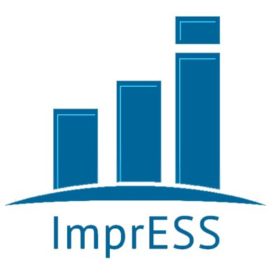 |
The project website for the EU Erasmus+ project ImprESS has recently been updated to highlight the completed and ongoing work and initiatives within the project. The updated website can be found here: http://impress.kpu.edu.rs/
ImprESS - which stands for "Improving Academic and Professional Education Capacity in Serbia in the area of Safety & Security (by means of strategic partnership with the EU)" - includes 11 partners from 6 countries: Serbia, France, Italy, Poland, Germany, and Greece. Steinbeis R-Tech participated in the project as a Transfer Institute of Steinbeis University Berlin (SHB).
The ImprESS project aims to enhance education capacity in Serbia in the field of academic and professional education, specifically in the area of Safety & Security (S&S). To this end, by means of strategic partnership, the ImprESS project is working to establish a model for improving the educational capacity in the area of ’’sector skill alliance’’ for Safety & Security. Based on this model, a sample educational infrastructure (curriculum, modules, courses, academic and para-academic educational activities) will be established and implemented in Serbia. The infrastructure will be used to improve the current educational capacity of the participating Serbian universities.
The improved capacities. together with those at the supporting EU academic education institutes, will be integrated into a Regional Center for Training & Education in area of Safety & Security (TESS). Within Serbia, the project will have broad impact beyond the educational infrastructure, which will be achieved through a) alignment with EU practices and b) including the most advanced state-of-the-art studies. In terms of impact within the EU, the participating European institutions will benefit and learn from gaining first-hand experience with safety & security education-related issues in a country beyond EU-borders.

The ImprESS project, Contract no. 586410-EPP-1-2017-1-RS-EPPKA2-CBHE-JP, has been funded with support from the European Commission within the ERASMUS + program. |
|
|
|
|
|
07 Nov
2019 |
Steinbeis R-Tech hosts visiting delegation from Beijing, China |
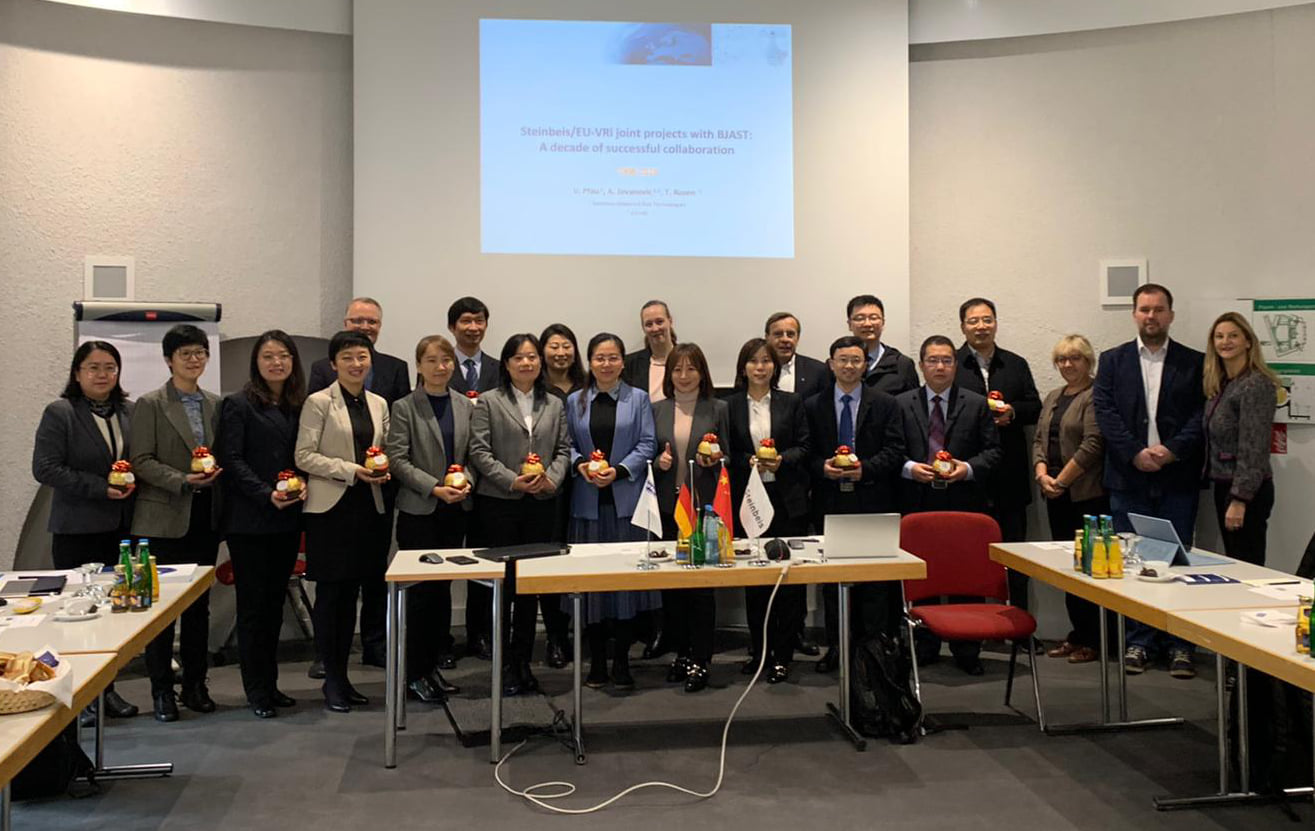 |
On Wednesday, November 6, 2019, Steinbeis Advanced Risk Technologies (R-Tech) had the pleasure of hosting a visiting delegation from Beijing, China, for a meeting in Stuttgart.
Prior to the meeting, the participants spent the preceding week in Cologne, Germany, participating in course on the topics of resilience and smart cities, which was organized by the Steinbeis R-Tech Transfer Institute as part of Steinbeis University Berlin. Over the course of 10 years, the R-Tech group led by Prof. Dr. Aleksandar Jovanovic has worked with the Beijing Academy of Science and Technology on more than 14 strategic projects; this meeting provided a valuable opportunity to reflect on and discuss past, present, and future opportunities for collaboration.

|
|
|
|
|
|
16 Oct
2019 |
A. Jovanovic teaching upcoming course on Risk Based Inspection (RBI) in Amsterdam |
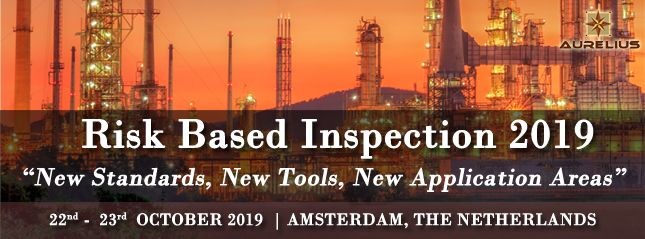 |
Prof. Dr. Aleksandar Jovanović will be leading a MasterClass on RBI from October 22-23, 2019, in Amsterdam, Netherlands.

RBI, as an approach initially developed in and for Oil and Gas Industry has changed a lot in the year 2019. New industrial and international/European standards (such as EN 16991:2018 or new ISO standards, or the less recent API and ASME standards) have been brought into the modern practice. New tools corresponding to these documents and the overall Industry 4.0 trends have been developed, and, last but least; the application area has been broadened to areas such as power and paper industry. Read more about RBI and this upcoming course in the PDF course agenda linked here: RBI 2019 Course Agenda |
|
|
|
|
|
21 Mar
2019 |
Bio4Self wins JEC Innovation Sustainability Award |
 |
Our project, BIO4SELF won the prestigious Sustainability Innovation award at JEC World fair in Paris on March 13, 2019.
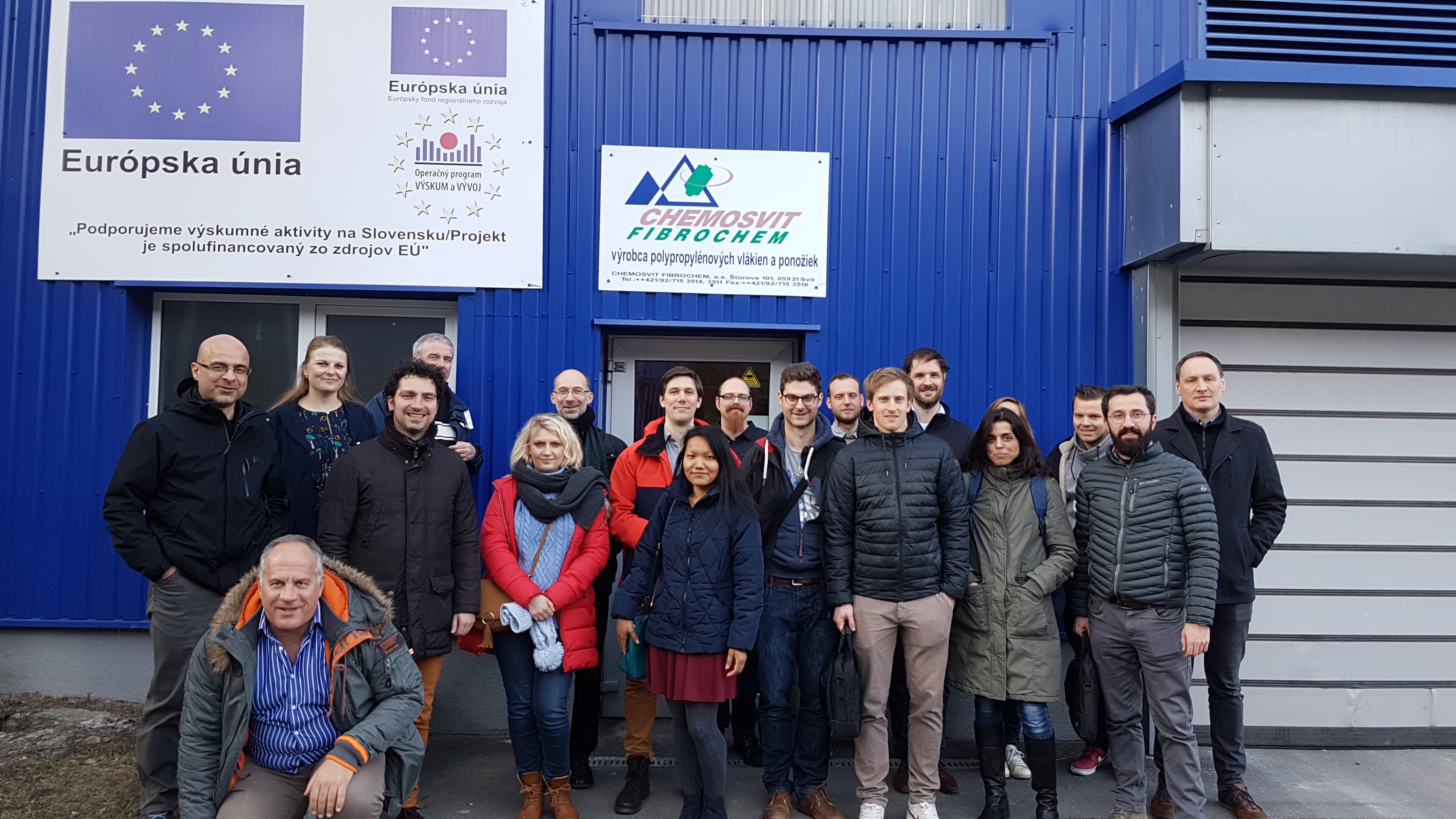
The project, consisting 16 consortiums focuses on developing biobased and easy-to-recycle self-reinforced composites based on PLA fibers. Dr. Parva Chhantyal from Steinbeis Advanced Risk Technologies (R-Tech) is responsible for the workpackage that evaluates the environmental and economic impact of the project. Congratulation to the whole team! For more information, click here. |
|
|
|
|
|
22 Feb
2019 |
Register now for the Joint Final Conference of SmartResilience and SAYSO projects! |
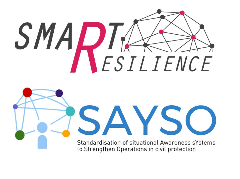 |
The SmartResilience and SAYSO H2020 projects are excited to announce their Joint Final Conference entitled "An EU Initiative Towards Advanced Situational and Enhanced Resilience." The conference will take place from April 15-17, 2019, in Budapest, Hungary.
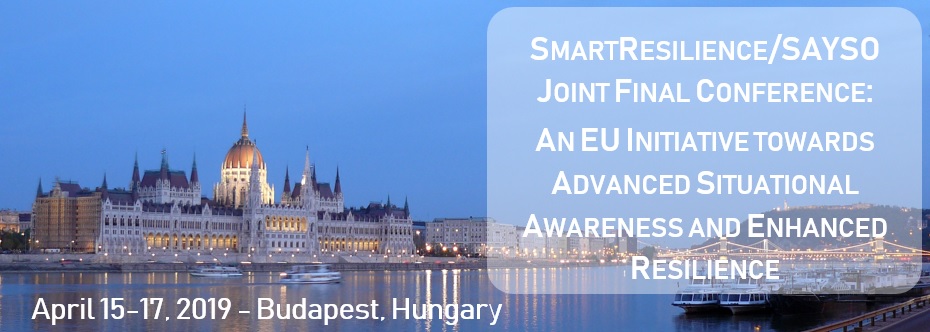
Event Details
The joint final conference of the SmartResilience and SAYSO projects will be hosted by the National University of Public Service in Budapest. The objectives of the joint conference are to present and discuss their respective outcomes as well as to discuss next steps. The conference will involve practitioners, developers, technology suppliers, and standardization and procurement specialists, as well as decision-makers, to find the best ways to harmonize, integrate, and enhance the projects’ outcomes in order to achieve tangible impact at the European level.
Registration
- Registration Fee: None (includes lunch and coffee breaks during the conference)
- Additional Costs: Conference participants are responsible for covering their own travel, lodging, and associated costs.
Call for contributions/presentations
The SmartResilience and SAYSO projects are seeking contributions/presentations related to critical infrastructure resilience and protection and to situational awareness systems in civil protection.
Proposals for contributions, including title, authors' names, and a short abstract (max. 1500 characters) should be sent to SAYSO-SmartResilience-Conference@eu-vri.eu using the application form available for download below.
Deadline: March 7, 2019
Accepted Notification: March 2019
*Please Note: Contributors/presenters should also register for the days of the conference which they will be attending!
Call for posters
Poster presentations will be displayed during a 90-minute poster session with the attendant author(s) available to discuss and present the poster (e.g. from EU or other projects). These will be scheduled on the afternoon of Monday, April 15, 2019.
Deadline: March 7, 2019
Accepted Notification: March 2019
*Please Note: Poster presenters should also register for the days of the conference which they will be attending!
Conference program
The final program is available for download here.
The projects
 The SmartResilience project provides a new indicator-based methodology for assessing and measuring the resilience level of critical infrastructures, such as energy and water supply, transportation networks and similar. The SmartResilience project provides a new indicator-based methodology for assessing and measuring the resilience level of critical infrastructures, such as energy and water supply, transportation networks and similar.
The SAYSO project aims to allow European civil protection and emergency responder organisations to procure, at a competitive price, innovative Situational Awareness systems and tools matching their needs. The production of the specifications of such solutions in SAYSO also involves suppliers, public procurement authorities and policy makers.
Access map
For information on how to reach the venue, click HERE.
Lodging
The conference organizing committee is not recommending any specific hotels for conference attendees, as we have decided this is best left to the personal tastes and preferences of each participant. However, there are many good options available near the venue, and any hotel in or near the city center should also be close to either a direct or connecting public transit line with a stop close to the conference center.
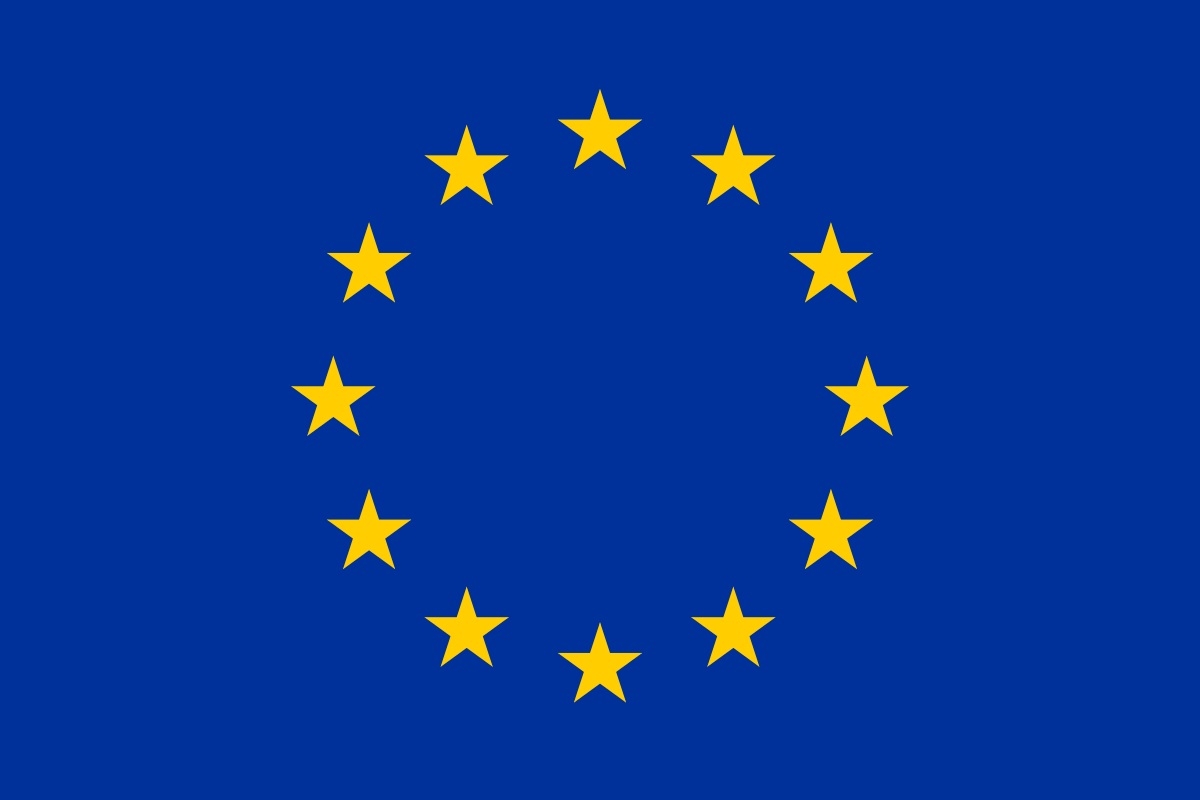 The SmartResilience and SAYSO projects have received funding from the European Union’s Horizon 2020 Research and Innovation Programme, under the Grant Agreement Numbers 700621 and 740872, respectively. The support provided by the European Commission for these projects and for their joint final conference is acknowledged and greatly appreciated. The SmartResilience and SAYSO projects have received funding from the European Union’s Horizon 2020 Research and Innovation Programme, under the Grant Agreement Numbers 700621 and 740872, respectively. The support provided by the European Commission for these projects and for their joint final conference is acknowledged and greatly appreciated.
|
|
|
|
|
|
14 Feb
2019 |
Steinbeis R-Tech and EU-VRi successfully passed the ISO 9001:2015 audit |
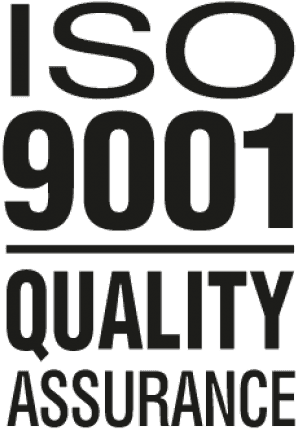 |
Steinbeis R-Tech and EU-VRi passed the ISO 9001 audit based on the 2015 revised version of the standard which is focusing on risk thinking and strategic planning.
The ZDH-ZERT audit took place on February 7-8, 2019 and showed again that the Steinbeis Advanced Risk Technology Group and EU-VRi duly improves and complies with the requirements of ISO 9001 Quality Management. The audit has covered the areas of integrated risk management and industrial safety with multidisciplinary, global and holistic approach, including education and training, information providing, innovation, professional services and consulting, products and software, project management. |
|
|
|
|
|
10 Feb
2019 |
Paper on energy indicators in Springer Journal of Thermal Science |
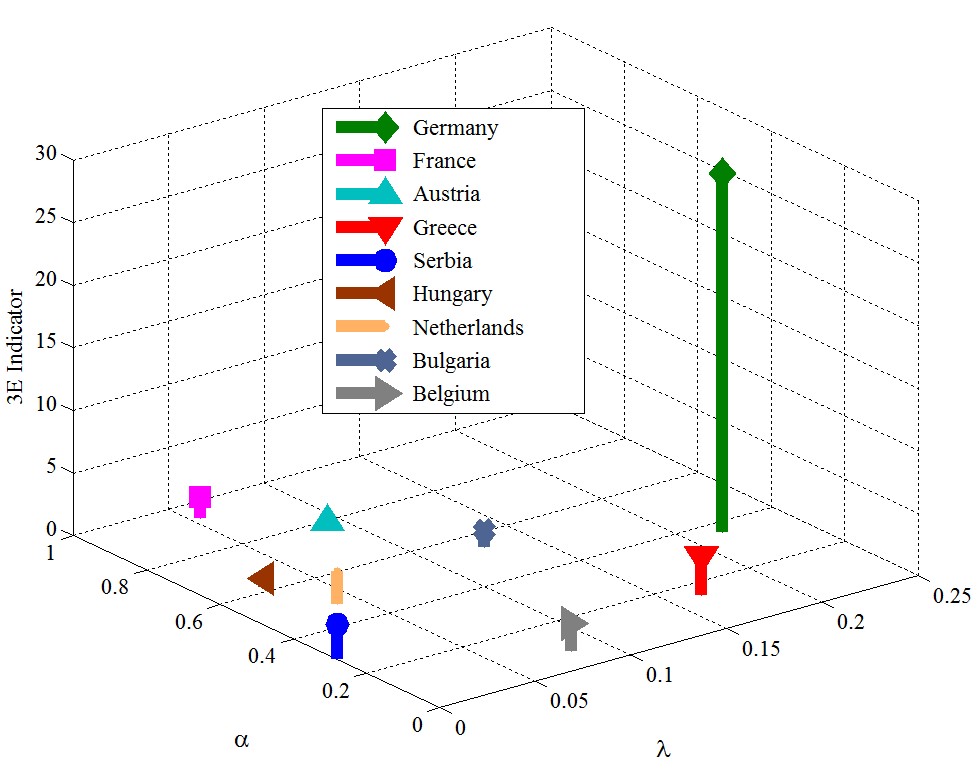 |
Steinbeis Center for Energy Technologies increased its visibility by achieving a milestone: The paper on "Evaluation of Electricity Generating System’s Technology Mix Using 3E Indicator" appeared in Journal of Thermal Science published by Springer. See more at https://rdcu.be/bjPQZ. It is also a great achievement for both Steinbeis Novi Sad and for Steinbeis Advanced Risk Technologies Group (www.risk-technologies.com). |
|
|
|
|
|
28 Jan
2019 |
SmartResilience referenced as part of the new ISO 31050 standard |
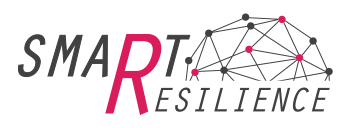 |
SmartResilience is referenced in a recent update to an International Organization for Standardization (ISO) webpage highlighting the work being done for the new standard ISO 31050 - Guidance for managing emerging risks to enhance resilience. The standard and will provide the guidance needed to deal with the "new, previously unknown or not considered, 'emerging' risks [which] can pose the greatest challenges to resilience, safety and operational and business continuity" and draws upon the work of organizations and projects including SmartResilience.
This standard is currently under development by ISO/TC (Technical Committee) 262 ‘Risk Management,’ which "develops international standards in the field of risk management to support organizations in all their activities including making decisions to manage and minimize the effects of accidents, disasters and faults in technical systems as well as response and recovery from major disruptive risks."
To learn more about the new ISO 31050 standard, visit: https://committee.iso.org/sites/tc262/home/projects/ongoing/iso-31022-guidelines-for-impl-2.html |
|
|
|
|
|
23 Jan
2019 |
Somik Chakravarty receives the Jean Bricard Prize 2019 |
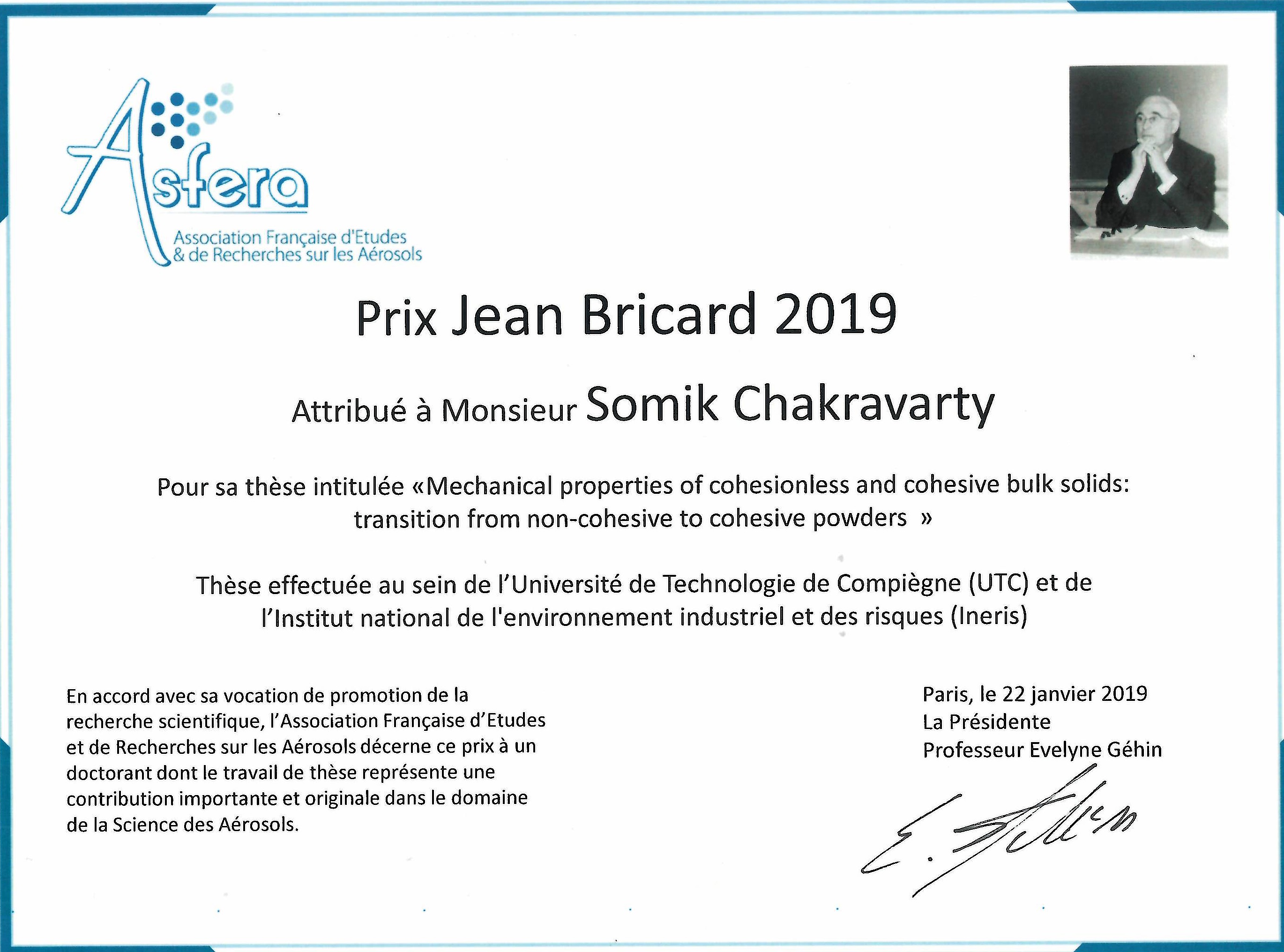 |
Somik Chakravarty (R-Tech) was awarded the Jean Bricard prize 2019 at the 32nd French Congress on Aerosols (CFA) in Paris on 22 January 2019.
Somik Chakravarty, Project Manager at Steinbeis R-Tech received the Jean Bricard Prize 2019 for his PhD thesis in Mechanical properties of cohesionless and cohesive bulk solids: transition from non-cohesive to cohesive powders. The PhD was supported by European Union Marie Curie Actions FP7 T-MAPPP and conducted at the Sorbonne Universités - UTC and INERIS, France.

Association Française d'Etudes & de Recherches sur les Aérosols (ASFERA) as a part of its mission to promote research in the field of aerosol science, awards each year the Jean Bricard Prize to a young researcher in France. More information on the prize can be found on the ASFERA website (https://www.asfera.org/fr/prixjeanbricard/presentation) |
|
|
|
|
|
09 Jan
2019 |
Participate in our stakeholder survey for the development of risk assessment tools! |
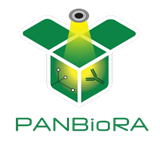 |
Within the framework of H2020 project PANBioRA, the consortium is developing new techniques and instruments for biomaterial risk assessment. In this regard, Steinbeis Advanced Risk Technologies (R-Tech) is carrying out a stakeholder survey for the development of risk assessment tools. Please take a few minutes to fill out our survey.
We would very much appreciate your input and expertise!
|
Survey for identifying the stakeholder needs and perspectives
 
"Personalised and Generalised Integrated Biomaterial Risk Assessment''
Are you an expert working in the field of "biomaterials", "implants", "medical devices", "risk analysis", "multiscale modelling", "policies & regulations" or related fields?
Help us develop an integrated risk governance framework for biomaterials and related devices/products by participating in the survey.
Participate in our survey and receive feedback!

|
|
|
|
|
|
|
07 Jan
2019 |
SmartResilience article in Safety Science journal |
 |
The SmartResilience project is highlighted in the recently released Safety Science journal article "Quantitative resilience assessment in emergency response reveals how organizations trade efficiency for redundancy." SmartResilience Project Coordinator Prof. Dr. Aleksandar Jovanović is one of the article's co-authors.
The authors note that their "results open the obvious possibilities for optimization along several lines that could be explored in future research," including comparison of "'big-data-based indicators'...This option would open up a completely new way of looking onto the monitoring of resilience in real time, which was exactly the idea promoted by the SmartResilience project."
Read the full article at: https://www.sciencedirect.com/science/article/pii/S0925753518312013
|
|
|
|
|
|
20 Dec
2018 |
SmartResilience project announces joint final conference with SAYSO H2020 Project |
 |
The SmartResilience project is excited to announce it will be hosting its final conference in joint collaboration with the SAYSO Horizon 2020 Project from April 15-17, 2019, in Budapest, Hungary. Registration will open in early 2019. More information is available in the "save the date" invitation below.
Invitation for the Joint Final Conference
of the SmartResilience and SAYSO H2020 projects
April 15-17, 2019
Budapest, Hungary
The joint final conference of the SAYSO and SmartResilience projects will be hosted by the National University of Public Service in Budapest on April 15-17, 2019. The objectives of the joint conference are to present and discuss their respective outcomes as well as to discuss next steps! The conference will involve practitioners, developers, technology suppliers, standardisation and procurement specialists, as well as decision-makers to find the best ways to harmonise, integrate, and enhance the projects’ outcomes and achieve tangible impact at the European level.
If you wish to participate as a speaker, please contact us before January 31, 2019, at SAYSO-SmartResilience-Conference@eu-vri.eu.
The e-registration for all participants will open early 2019.
To be among the first informed, follow us on Twitter!
@SmartResilience and @SAYSO
Contributors and participants from other projects and institutions are welcome to attend.
We look forward to welcoming you in Budapest!
Kind regards,
A. Jovanovic & H. Burkow
on behalf of the SmartResilience and SAYSO Consortia

|
|
|
|
|
|
11 Dec
2018 |
SmartResilience public deliverables D3.6 and D4.4 now available |
 |
The SmartResilience project recently published two more public deliverables in the Results section of its public-facing website.
These newly posted deliverables are:
|
|
|
|
|
|
27 Nov
2018 |
SmartResilience project team to participate in upcoming international events |
 |
The SmartResilience team will be attending and participating in several upcoming international events for promotion and dissemination of the project.
These events include:
 December 2-6, 2018: December 2-6, 2018:
Society for Risk Analysis (SRA) Annual Meeting, New Orleans, LA (USA) – Professor Jovanović will be sharing the following presentation related to SmartResilience:
Analyzing Interdependencies Among Infrastructures Based on Big Data and Resilience Indicators (Jovanovic AS, Klimek P)
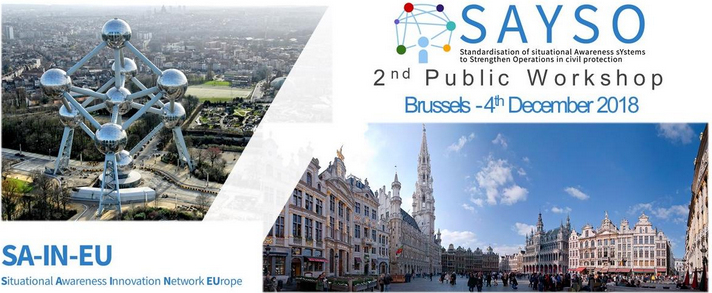
December 4, 2018:
Second Project SAYSO Public Workshop, Brussels, Belgium
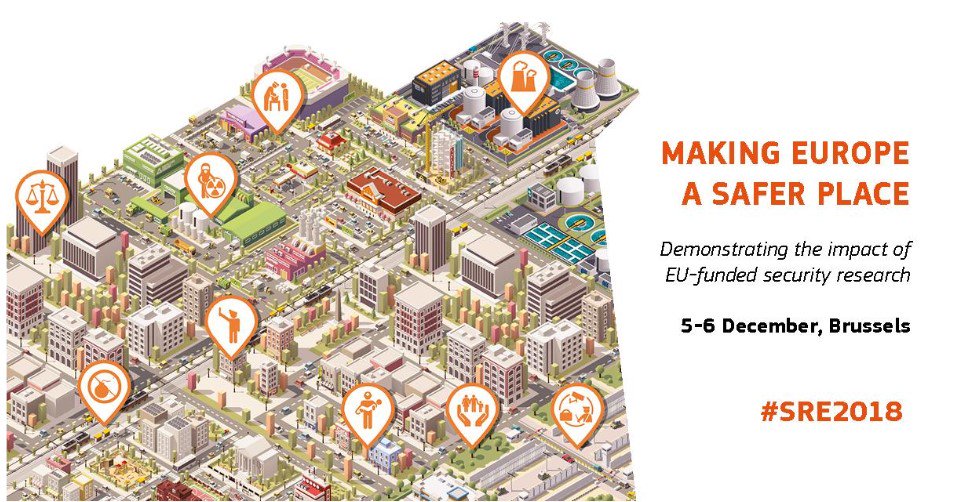
December 5-6, 2018:
Security Research Event (SRE) 2018, Brussels, Belgium |
|
|
|
|
|
26 Nov
2018 |
SmartResilience project: Web updates |
 |
The SmartResilience project is excited to share several recent updates related to its web tools, including the launch of the MySmartResilience and updates to the Welcome web page of the tool.
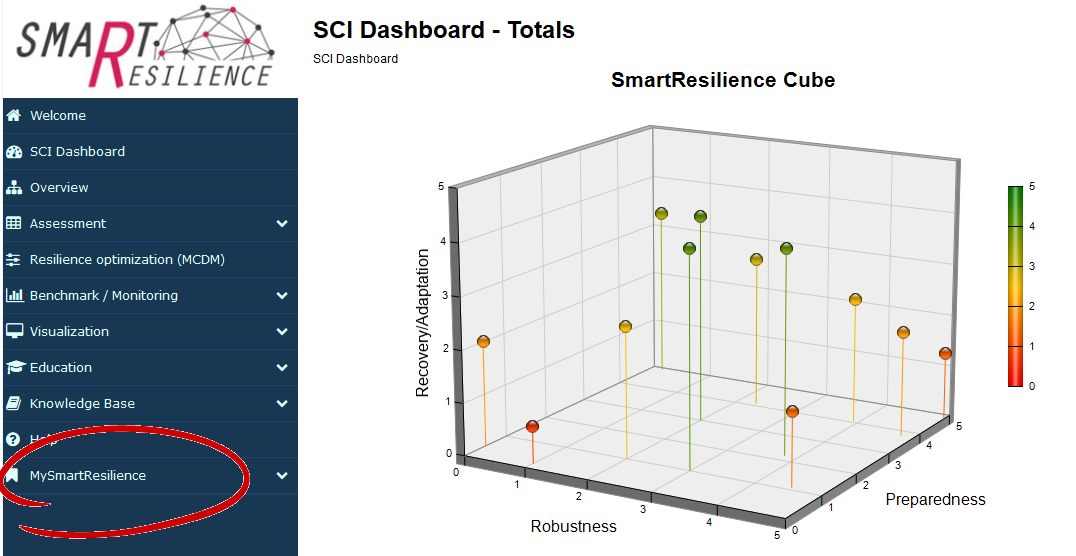
MySmartResilience Tool
A recent update to the SmartResilience web interface includes a new section of the tool called MySmartResilience that enables personalized data entry, analysis, and saving.
Project stakeholders should contact smartresilience-core@eu-vri.eu to gain access to this section of the tool.
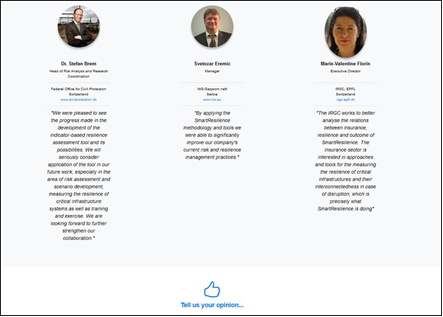
SmartResilience Welcome Web Page Updates
Two recent updates have been made to the Welcome web page of the SmartResilience tool:
1. Testimonials have been added to share end-user and project participant experiences with and impressions of SmartResilience.
2. A Feedback Survey is now available via the “Tell us your opinion” button and directly via this link: http://www.smartresilience2.eu-vri.eu/Survey_Run.aspx?ID=978. We ask that interested parties please help us by taking some time (estimated 10-15 minutes) to complete this survey to help us improve the SmartResilience tool and potential applications. This survey can be distributed to anyone who may be interested in providing feedback. There is also an opportunity included in this survey to provide a testimonial for the project.
|
|
|
|
|
|
23 Nov
2018 |
SmartResilience highlighted on WaterBriefing website |
|
|
|
|
|
|
22 Nov
2018 |
PANBioRA Stakeholder survey is online! |
 |
With this survey stakeholders needs and perspectives with respect to the development and use of an integrated risk governance framework for biomaterials and biomaterial based devices and products will be identified. The output from this survey will be used in developing a web-tool to enable horizon scanning of “hot spots” and monitoring of risks based on a web-based analysis.
We are looking forward to your contribution!
|
Survey for identifying the stakeholder needs and perspectives
 
"Personalised and Generalised Integrated Biomaterial Risk Assessment''
Are you an expert working in the field of "biomaterials", "implants", "medical devices", "risk analysis", "multiscale modelling", "policies & regulations" or related fields?
Help us develop an integrated risk governance framework for biomaterials and related devices/products by participating in the survey.
Participate in our survey and receive feedback!

|
|
|
|
|
|
|
30 Oct
2018 |
Prof. Jovanović interviewed regarding risk standardization |
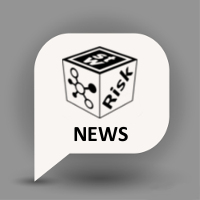 |
Prof. Aleksandar Jovanović recently gave an interview for the leading German economic newspaper Wirtschaftswoche, recognizing the importance of standardization work in the area of risks. EU-VRi, Steinbeis, and Prof. Jovanović are long-time active leaders in the area of standardization related to emerging risks, currently working on a new ISO standard, ISO 31050 Guidance for Managing Emerging Risks to Enhance Resilience.
The original article is available in German here: http://www.inpactmedia.com/wirtschaft/risikomanagement/wir-brauchen-standards-fuer-globale-risiken#2287. A translated version in English is provided below:
»We need standards for global risks«
Globalization is driving forward world networking. But with complexity also comes risks. How can you correctly assess a threat situation? Are we even worried about the "right" things?
Klaus Lüber, Editorial Staff
And how can you handle risks that have global implications? An interview with Prof. Aleksandar Jovanović, Head of the European Virtual Institute for Integrated Risk Management (EU-VRi).
KL: Mr. Jovanović: natural disasters, infrastructure damage, political imponderables, supply chain disruption, piracy, sabotage, cybercrime - the number of risks in international business seems to be growing. Is that really the case, or is it just because we know more and more about risks?
AJ: That's not so easy to answer. What does "growing" mean? What we do know is that the present has become more complex and often entails new risks. As a system becomes more complex, in general, the risks become more complex, and the number of potential and new risks increases. The problem is that in order to really assess a threat situation, we need reliable reference points. At the “regulars” table you can talk about the real dangers of climate change at length, but as long as you do not have a reliable framework to define priorities, criteria and decision-making processes (when it comes to risk assessment) all remain just a roundtable discussion.
KL: You could consult experts.
AJ: Yes, of course you could, and of course you do, but that does not really make you “pass.” For example, if every expert has a different opinion, we get a collection of responses in silos. This is a very unfavorable situation, especially when dealing with complex risks, because here [with complex risks] it is particularly important to act interdisciplinary and to see the "big picture."
KL: Do you mean [to imply] action guidelines for companies and institutions?
AJ: Right, and here comes the next challenge: the classification of responsibilities - "mandates" - has also become more complex. As a result, it is often the very institutions that are supposed to exercise these mandates globally, such as the UN or the EU, which become increasingly powerless or unfree in doing so. At the national level, it is often not much better. Although consensus on dealing with complex and systemic risks is certainly very important, as well as [achieving] the acceptance of as many people as possible, the reluctance of an institution [to act], such as a competent ministry which actually has power to act on an issue such as “coal exit,” is out of place.
KL: What is the general policy in the area of risk management?
AJ: In my opinion, there is definitely room for improvement. Many authorities and institutions have long lost much of their expertise and have many specialist personnel issues. Take the cybercrime field: since it is often impossible for authorities to engage the right IT professionals to provide the TVL-like conditions, many “cybersecurity centers” lack the right professionals or expertise.
KL: What about the situation with companies? Do they usually have more financial leeway?
AJ: That's right, but they have the problem of having to decide whether to invest long-term or short-term. For example, insurers who have been dealing with risk management issues for years often have to balance the investments they have in short or long-term risks because they cannot always afford the required research on the long-term, more complex risks. As in politics, they are simply less and less interested in long-term planning. It's worth less or even nothing at all.
KL: Let’s speak [more] concretely about the risks that we are dealing with in business and society. The sociologist and risk researcher Ortwin Renn, with whom you have worked for many years, sees the greatest danger in so-called systemic risks.
AJ: Yes, Mr. Renn means risks that can have global implications, are closely networked with many functional areas of the economy and society, and have cause-and-effect chains where we cannot get by with a classic, statistic-based approach. Here we need a fundamental change of perspective.
KL: What do you mean?
AJ: One should say goodbye to the idea that one could simply avoid or combat systemic risks like an external disturbance. The truth is that it is no longer about avoiding risks but understanding them as best as possible and preparing for them in the best possible way [in order] to ensure the resilience of the systems. That's one thing. The other is that solving complex and global problems usually has to be complex and global. Global also in the sense of "integrative" and "integrated".
KL: You have to explain that, please.
AJ: The decisive factor is the integration of various solutions into integrated risk management. That is exactly what we are doing at the EU-VRi, [the Virtual] European Institute for Integrated Risk Management. In doing so, one must try to consider all the different sources, including those, for example, that can cause or promote the misperception of risks in social networks. Nowadays, you have to be able to analyze the large amounts of data available – “Big Data” -, to be able to analyze new methods and have new analysis software. This is the only way to detect new trends in risks in good time: by observing them in real time and to derive recommendations for action from them. It is very useful to compare these results, which you can get without experts, with expert opinions.
KL: So risk analysis tools alone are not enough [to avoid risks]?
AJ: No, because even with these tools you will hardly be able to avoid them; new solutions also generate new risks. A classic example is the risk of Alzheimer's disease. That [risk] is one in a hundred at the age of 65 but one in six at the age of 85. One could say: by avoiding the risks that lead to an early death, at the same tome you increase the risk of developing [other] diseases that increase [in risk] with age. That this pattern is repeated in other fields, such as the exit from coal, autonomous driving, or Industry 4.0, is to be expected.
KL: These are topics in each of which the aspect of social acceptance plays a role. Now many of your colleagues say that we often cannot assess risks properly. Isn’t it first of all a matter of distinguishing "real" from "fake" risks?
AJ: Of course you can do that, but you should be careful not to take so-called "false" risks less seriously. For a long time, insurers have had their own term: phantom risks. Although they have no material, statistical basis, they should still play an important role in a risk analysis. To perform a full risk analysis, one must consider factors such as risk perception and social acceptance. If technology is accepted in one corner of the world and not in another, it is important to understand why.
KL: Like, for example, the Transrapid?
Exactly. A cutting-edge technology that has not found social acceptance. Not least of all because the risks associated with the Transrapid in Germany and the classic train have been considered and categorized. Then it would be, as in every train, an emergency brake would be required on the Transrapid, while nobody would think of installing one in an airplane.
KL: What recommendations do you give to politics and business?
AJ: It's all about recognizing the importance of frameworks for efficient risk management. Just as we have agreed in many countries to drive to the right or measure speed in km/h, we also need more commonly accepted risk and resilience management standards in risk research - such as the new ISO 31050. That's because we need maximum clarity and the above framework in the implementation. Only then will we have a chance to prepare efficiently for the challenges of old and new risks. |
|
|
|
|
|
16 Oct
2018 |
Workshop on Risk Based Inspections (RBI) and the new EU standard EN16991 |
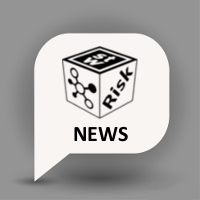 |
On October 16, 2018, Steinbeis R-Tech and EnBW organized a workshop devoted to the new EU standard on Risk-Based Inspection (RBI) EN16991:2018, published on May 1, 2018. Participation in the workshop was free of charge.
|
|
Workshop
Risk Based Inspections (RBI)
and the new EU standard EN16991
Concept and application
October 16th, 2018
EnBW City, Schelmenwasenstraße 15, 70567, Stuttgart-Fasanenhof, Germany
Main topic:
On May 1st, 2018 the new EN16991:2018 standard was approved. It establishes the basis for application of European standardization in the area of RBI in Europe and worldwide. Following the pre-standard CWA 15740:2008/2011, the new EN16991 is aligned with API RPs and supported by national documents such as VGB 506-S. Already mentioned in the legislation of several countries, the standard supports a more efficient and effective inspection and maintenance planning in the industry (power, process, other). At the same time, it improves risk management and thus, safety, of the plants and their operation, including all aspects of improved environment and business management. This workshop is designed to present detailed information about the standard and its present and future applicability in industry.
Goals of the workshop:
• Understand the basis for Risk Based Inspection methodology, in particular in power and process
industry
• Understand the new EN16991:2018 standard, its details and implications
• Show how the standard is practically used
• Insights into other RBI standardization efforts such as the German VGB 506-S
Workshop program:
| 09:00 - 09:30 |
Registration and introduction |
| 09:30 - 10:45 |
RBI Introduction
- General principals of risk assessment and management (ISO, EN, national)
- General approaches to Risk Based Inspections (world, EU, Germany andcompanies) |
| 10:45 - 11:00 |
Coffee break |
| 11:00 - 12:30 |
RBI application
- Practical assessment of Probability of Failure (PoF) and Consequence of Failure(CoF)
- Implementation of tools and systems
- Application examples in the power and process industries |
| 12:30 - 13:30 |
Lunch break |
| 13:30 - 14:00 |
Presentation of the new EN16991 standard |
| 14:00 - 15:00 |
EN16991 - Concept and requirements
|
| 15:00 - 15:15 |
Coffee break |
| 15:15 - 16:45 |
EN16991 - practical applications |
| 16:45 - 17:00 |
Final discussion and closure |
|
Register here for the workshop, free of charge:
Risk Based Inspections (RBI) and the new EU standard EN16991 Concept and application
How to reach EnBW City
Main Speakers:
A. Jovanovic, R-Tech
J. Bareiß, EnBW
K. Metzger, GKM
A. Carlebur, NEN (tbc)
Note
The event is organized back-to-back to the 44th MPA seminar - "Fit for Future":
MPA seminar - October 17-18, 2018
|
|
Participation in the workshop is free of charge and is based on limited free seats; therefore, registration is mandatory!
Contact the organizers at RBIworkshop@risk-technologies.com
|
|
|
|
|
|
|
01 Oct
2018 |
EU-VRi and Steinbeis R-Tech jointly commenced the ERRA initiative |
 |
ERRA - The European Risk & Resilience Assessment and Rating Agency
|
|
ERRA
The European Risk & Resilience Assessment and Rating Agency:
going beyond compliance
Why ERRA?
In the spirit of new policies (e.g. the EU directive on non-financial reporting), ever increasing social responsibility and awareness, and the needs of globalized economies (e.g. overcoming differences in compliance rules in different countries), the need to prove that one is investing efforts in “SAFETY BEYOND LEGAL COMPLIANCE” and “STAYING RESILIENT WHEN AFFRONTING NEW RISKS” will increase.
The ERRA Agency, proposed here and based on the outcomes of the EU project SmartResilience, intends to help prove the effectiveness of the above effort, e.g. by means of RECOGNIZED VOLUNTARY AUDITING performed by the network of partners acting through the Agency.
ERRA Agency and the SmartResilience project
Ensuring sustainability of the SmartResilience project results after the project ends in April 2019 was one of the major triggers for the ERRA initiative. ERRA would thus be one the three main sustainable and lasting results of the project after the project ends:
1. Encoding the project approach and the main results in an ISO standard (ISO 31050)
2. Leaving the 2,500+ indicators, the methodology, and the software tool (web) as an “open system,” possibly on the EU/JRC platform
3. Creating a business model based on the project and its results – both for project partners and the community: The “European Risk & Resilience Assessment and Rating Agency” (ERRA).
The ERRA concept is being elaborated (2018/19) by EU-VRi as a part of the SmartResilience project deliverables.
ERRA concept cornerstones
The concept of ERRA relies on the following main documents:
i. SmartResilience resilience-indicator-based methodology documents and checklists (project deliverables)
ii. ISO 31000/31050 and 223xx-series
iii. EU Directive on non-financial reporting
iv. Cooperation agreement with key risk and resilience institutions worldwide (e.g. EU, JRC, ANL, PSC, BJAST…)
v. Cooperation agreements with Agency service-sub-providers
and on the following main tools:
i. SmartResilience system (open/free)
ii. Optional: Agency members’ tools as options (the respective network member’s conditions)
|

ERRA Services:
Risk and resilience “Assessment-as-a-Service”
The main ERRA service (risk and resilience “Assessment-as-a-service”) will be performed by the Agency together with and subcontracting by Agency member organizations (organizational members AND individuals) having the different competencies needed to meet the specific needs of specific industry branches or application areas (e.g. critical infrastructures or new technologies). In the most general terms, ERRA would contact and negotiate with the customers, engage the experts among the Agency members, process the contracts with the customer and guarantee the quality of assessment provided by the Agency. Main service provided to the Agency clients would be:
1. SELF-ASSESSMENT – free service
The customer registers at the page, submits request for using the online ERRA (SmartResilience) tool and, request approved, get the access to the tools and supporting documents. There are no fees, but the assessment (anonymized) remains in the pool and can be analyzed (big data) or viewed by other users.
2. AUDITED SELF-ASSESSMENT – auditing fees
The self-assessment report is audited by the ERRA appointed auditors. The fee for the audit apply. ERRA issues an audit certificate.
3. ERRA-performed AUDIT – full audit fees apply
ERRA appoints assessors/auditors, they do the assessment and produce the report. ERRA issues the full audit certificate.
Supporting services of the Agency
1. Education
(e.g. including certified courses in the area of risk and resilience)
2. Certification and management of auditors
(certification scheme to be accredited)
3. Managing/facilitating ad-hoc consultancy
(e.g. the consultancy provided by the members)
4. Research coordination and facilitation, as well as other actions which may arise from the Agency client’s needs
Members, in the due course, may also offer further member-specific service through the Agency.
Basic rule of engagement for the Agency members
The Agency itself is envisaged to be registered in Germany as a service-oriented company. EU-VRi, its members and the SmartResilience project partners will be offered the first “say” in the process of establishing the Agency. After that, the access to Agency membership should be open to all interested parties, signing the agreement) with the Agency. Agency members can be both institutions/organizations/companies and individuals. The possibilities for obtaining the start-up support of the EU-ESA will be explored.
|
|
Contact: : A. Jovanović, EU-VRi and B. Caillard, EU-VRi at erra@eu-vri.eu
|
The ERRA initiative for creating the European Risk & Resilience Assessment and Rating Agency is supported by the following potential stakeholders (The “support’’ means the stakeholders have explicitly confirmed interest being in favor of the effort to explore the needs and opportunities for creation of the European Risk and Resilience Assessment and Rating Agency in the framework of the WP9 of the SmartResilience project; this implies that the stakeholder will be regularly informed about the progress of the initiative and be given a possibility to contribute to the definition of its outcome.):
|
International Organizations
- EPFL IRGC, Switzerland
- ESA-NTTI, Hungary
- ESA-BIC, Hungary
- EU-VRi, Germany
- …
Industry
- NIS, Serbia
- Steinbeis StC, Germany
- Technologica Group, Belgium
- …
National Organizations
- City of Edinburg, Scotland
- VTT, Finland
- …
Research
- IBM, Israel
- SINTEF, Norway
- Steinbeis R-Tech, Germany
- …
Academics
- BUW, Germany
- KU Leuven, Belgium
- Medical Uiniversity Vienna (MUW), Austria
- …
|
|
|
|
|
|
|
|
|
13 Sep
2018 |
SmartResilience Selection of CORE DCL ISSUES & INDIA Workshop in Brussels |
 |
SmartResilience Project Partners met in Brussels on September 11-12, 2018, in order to discuss the CORE list of issues and the INDIA case study. On the first day, Prof. Jovanović introduced the concept of the CORE dynamic checklist (DCL) and presented the SmartResilience tool. During this day, the workshop participants also reviewed the issues and finalized the CORE DCL. On the second day, a tabletop exercise was conducted to simulate cascading and ripple effects on combined scenarios (CASE STUDY INDIA). |
|
|
|
|
|
16 Aug
2018 |
Beijing Academy of Science and Technology, Steinbeis, R-Tech, and EU-VRi sign a collaboration agreement in the area of Risk Management. |
|
|
|
|
|
|
01 Aug
2018 |
The work on the new ISO 31050 Standard started |
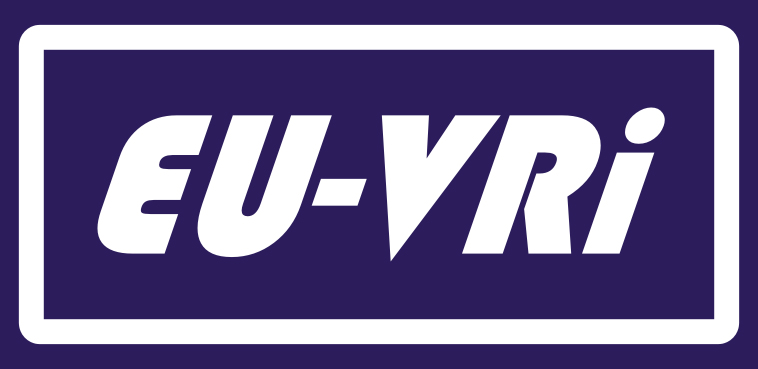 |
On July 27, 2018, the ISO Technical Committee TC26 approved work starting on the development of the new standard ISO 31050 Guidance for Managing Emerging Risks to Enhance Resilience, under the convenership of EU-VRi.
Download the leaflet at https://www.eu-vri.eu/filehandler.ashx?file=16526.
|
|
ISO31050
Guidance for Managing Emerging Risks to Enhance Resilience: Thriving in a World Growing in Uncertainty
Why ISO31050?
At the current pace of change, the world in the 21st century will experience 20,000 years of advancements, in just one 100 years (WEF, 2016). This is changing the risk landscape and bringing in an avalanche of new uncertainties and new emerging risks the management of which is essential for the society.
The new ISO31050 standard will provide the much needed foresight and insight to deal with these risks. It will also provide new ways for enhancement of organizational resilience and new capabilities to deal with new challenges, helping, at the same time, to increase the level of trust in management of risk.
ISO31000:2018 as a “generic standard”
The newly revised and published International Standard on Risk Management ISO31000:2018 is created, monitored and supplemented (with supporting documents) by ISO Technical Committee TC262. ISO31000 standard is one of the few ISO Standards (of the several thousand promulgated by top experts in their fields) that is qualified as a "generic ISO standard" – this means that all other standards must accommodate and align to its provisions.
Therefore, it is mission critical for every entity utilizing ISO Standards, to address and strategically approach risk management and, when doing so, to follow ISO31000.
New (“emerging”) risks
New, previously unknown or not considered, “emerging” risks can pose the greatest challenges to resilience, safety and operational and business continuity. These “new and/or increasing” risks can be related to different areas of activities, such as new processes, new technologies, new types of workplace, or social or organizational change.
They can also be some long-standing issue, newly considered as a risk due to a change in social or public perceptions or due to new scientific knowledge. The increasing behavior of these risks means that the number of hazards leading to the risk may be growing, or that the exposure to the hazard leading to the risk is increasing, or that the effects/impacts of the hazards are getting worse (e.g. seriousness of effects and/or the number of people affected). These risks will interrelate with the processes like globalization, digitalization, innovation, cross boundary operations and many others, inextricably, directly or indirectly influencing each other, being interconnected, systemic and/or interdependent.
|

ISO31050:
A new member of ISO31000 family
Starting from the ISO31000 definition of risk (“effect of uncertainty on objectives”) and understanding risk management as significant contributor to value creation and preservation, the new
"ISO31050 Guidance for Managing Emerging Risks to Enhance Resilience"
will contribute to the further development of integrated management processes that provide insight into how risk may affect the achievement of organization objectives. The development of the standard is assigned to the Work Group 8 (WG8) of the Technical Committee TC262. The work started in June 2018, taking DIN SPEC 91299 (CWA 1664), the work of the ISO TC292 (ISO 223xx standards) and the works of organizations such as OECD, SRA, WEF and EU (projectsiNTeg-Risk and SmartResilience project, ResiStand) as its main reference.
The main calling is to provide universal, yet meaningful guidance on developing new competencies and business models to create relevant and realistic recommendations in an ever-changing uncertain world, to facilitate best practices, enhance resilience, promote agility, assist transformation, deliver insight, insure foresight, establish value and integrate resources.
With ISO31050, the decision makers in organizations will be better equipped to manage both known (ISO31000) and emerging risks (ISO31050) with confidence. To this aim, ISO31050 will, deliver:
- Structured context (e.g. definitions, drivers, metrics, …) for dealing with emerging risks
- Emerging risk management framework
- Process
- Guidance for
o Common format(s) for interoperability
o Common/agreed indicators
o Considerations related to emerging risks in resilience assessment
- Emerging Risk application examples
(informative annexes, exact list yet to be defined)
The work plan foresees to:
- deliver the 1st WD (working draft) on Sept 30, 2018
- prepare the CD (committee draft) by January 2019 for the ballot in February – March 2019
- finalize DIS (draft international standard) by March 2020 and
- publish the standard in June 2021.
|
|
Contact: A. Jovanović, EU-VRi (convener) jovanovic@eu-vri.eu; R. Civet, AFNOR (secretariat) rodolphe.civet@afnor.org
ISO31050
Guidance for Managing Emerging Risks to Enhance Resilience
TC262 Risk Management – WG8: Members (as of July 27, 2018)
|
Countries, Liaisons, NSBs
|
Number of persons
|
|
1. Argentina
|
1
|
|
2. Canada
|
1
|
|
3. Colombia
|
1
|
|
4. Finland
|
1
|
|
5. France
|
4
|
|
6. India
|
1
|
|
7. Indonesia
|
1
|
|
8. Ireland
|
3
|
|
9. Italy
|
1
|
|
10. Japan
|
3
|
|
11. Malaysia
|
1
|
|
12. Mexico
|
1
|
|
13. Portugal
|
1
|
|
14. Spain
|
1
|
|
15. Switzerland
|
1
|
|
16. United Kingdom
|
2
|
|
17. United States
|
2
|
|
Liaison: TC251 Asset Mgmt.
|
1
|
|
Liaison: EU-VRi (Convener)
|
1
|
|
NSB: AFNOR
|
1
|
|
Total
|
29
|
|
|
|
|
|
|
|
|
14 Jun
2018 |
SILICOFCM Kick-off meeting, Kragujevac, Serbia 14-15 June 2018 |
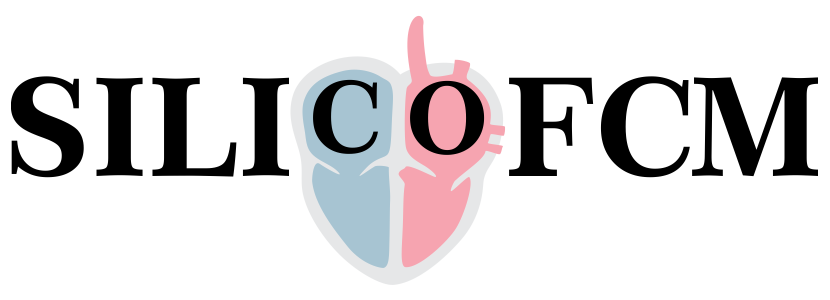 |
|
|
|
|
|
|
04 Jun
2018 |
€100 billion for FP9 "Horizon Europe" |
 |
The EC announced the proposed budget of €100 billion and the name of the next EU Research & Innovation Framework Programme: Horizon Europe (2021-2027)
|
|
|
|
|
|
30 May
2018 |
SmartResilience Open Workshop and CIRAB Meeting |
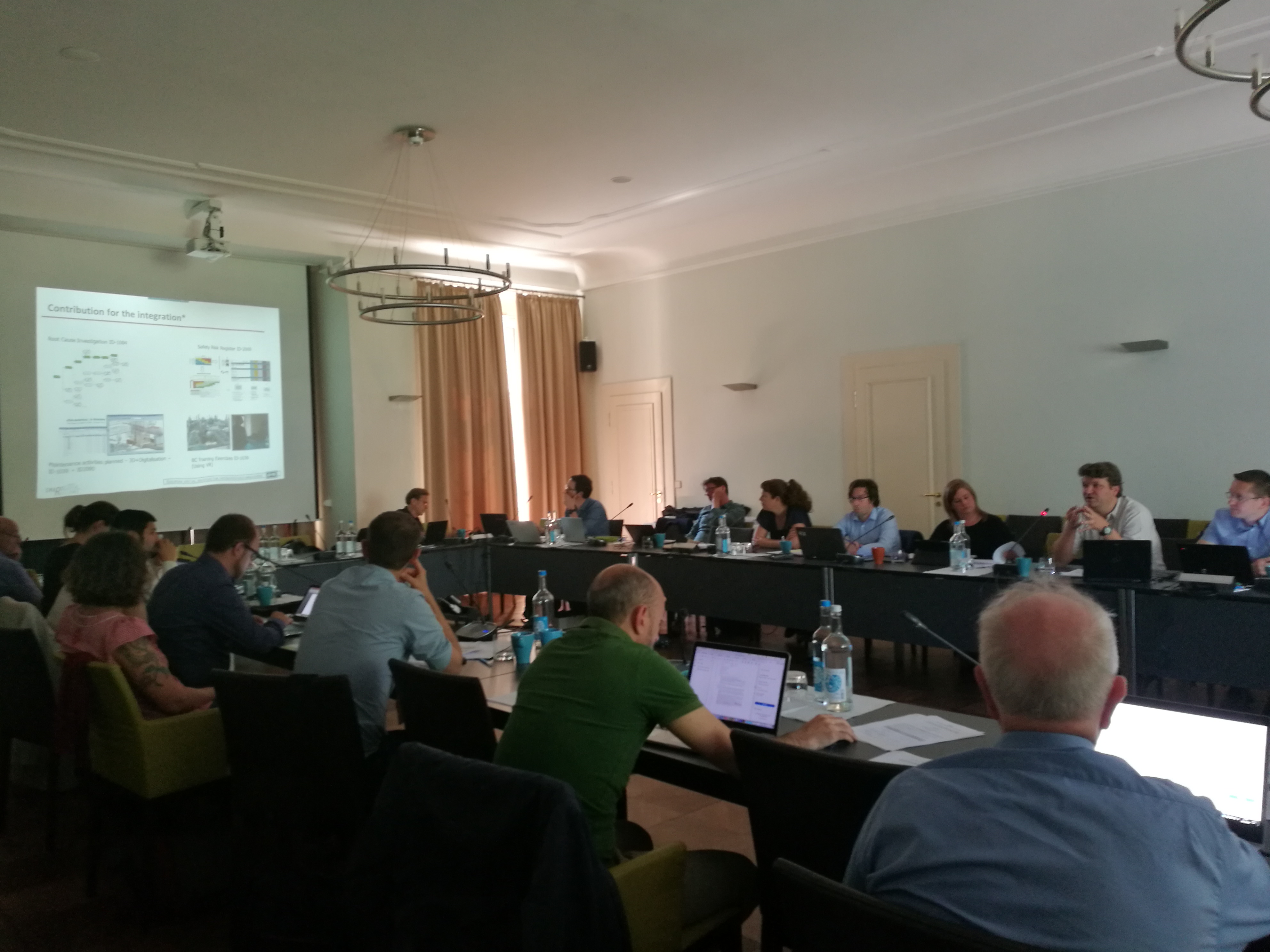 |
SmartResilience Project partners, members of Critical Infrastructure Resilience Advisory Board, insurance experts, and representatives of different research institutes, as well as end-users, met in Potsdam on May 29, 2018, in order to discuss the progress of the work done in the project and align the further actions needed for the remaining 11 months of the project.
Around 40 participants from all over the world (China, USA, France, etc.) gathered together in the premises of Institute for Advanced Sustainability Studies in Potsdam. During the 1-day workshop, the most tangible results of the work done in the project were presented. Project partners higlighted the specific issues tackled by their case studies, showing the indicators which they have selected for the assessment as well as their contribution to the integrated network/tool developed within SmartResilience. Furthermore, application of SR Tool on other EU DRS project has been presented by dr Emanuelle Bellini, coordinator of RESOLUTE.
In the second part of the meeting, Frederic Petit from Argonne National Laboratory presented the need to promote a global approach to resilience.
At the end, the Chair of Critical Infrastructure Resilience Advisory Board, Prof. Claudio Rolandi, and coordinator of the project, Prof. Aleksandar Jovanović led a fruitful panel discussion about the challenges related to resilience management, perspectives on enterprise resilience, and engagement of relevant politicians.
|
|
|
|
|
|
05 Apr
2018 |
SmartResilience Newsletter - 3rd issue |
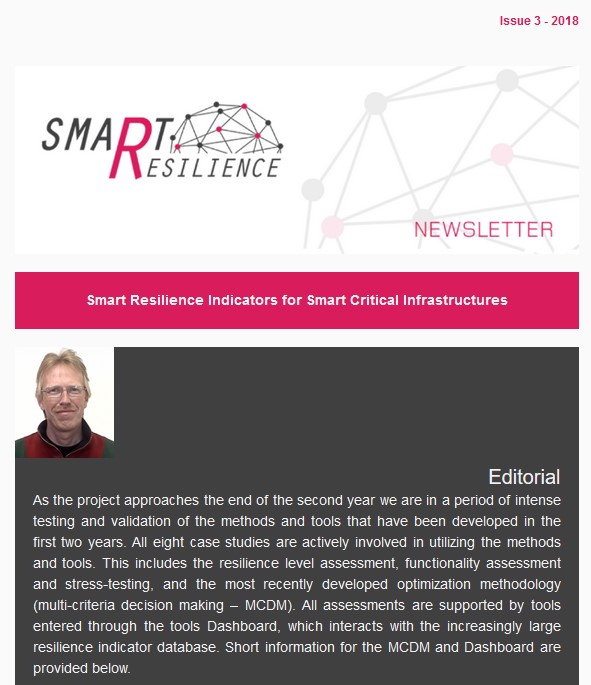 |
Approaching the end of its second year, SmartResilience has released its 3rd newsletter!
Approaching the end of its second year, SmartResilience has released its 3rd newsletter!
| This newsletter gives some hints about the project progress and results
as well as information about the use of big data in the project, and the
short information for MCDM & Dashboard. |
|
 |
|
|
|
|
|
|
24 Jan
2018 |
Prof. Dr. A. Jovanovic presented the lecture: “Fooled by (past) resilience: Why do we overestimate resilience of our critical infrastructures” at University of Wuppertal (BUW). |
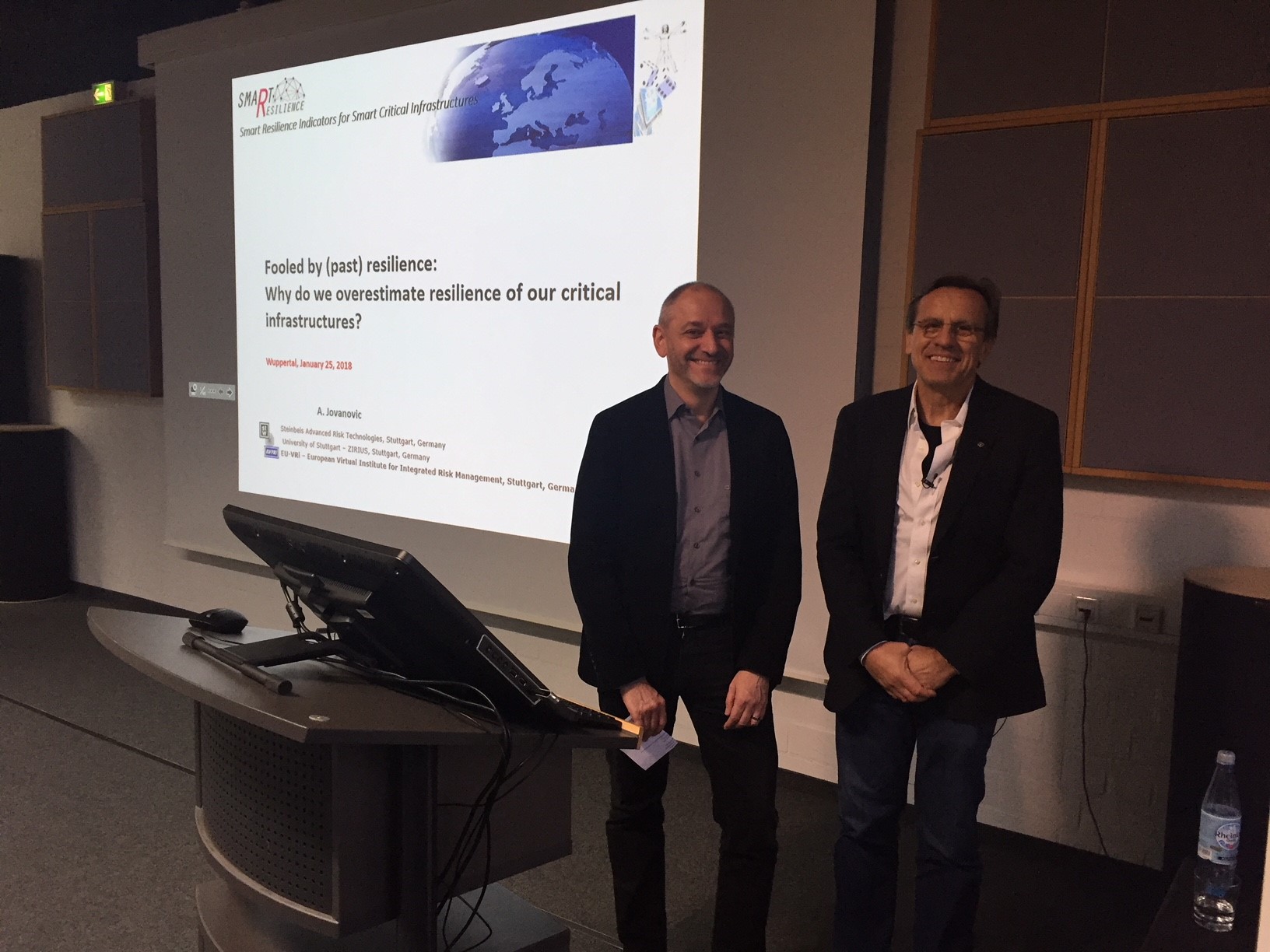 |
Mr. Jovanovic was invited as guest lecturer for the public safety lecture series at BUW. His presentation focused on the state of the art knowledge about resilience quantification developed within the SmartResilience project. The Horizon 2020 research project is elaborating a new advanced resilience assessment methodology in order to measure and increase resilience of smart critical infrastructures (SCIs) within Europe and around the world. The lecture is available on Youtube (for the BUW channel see Here) and Facebook. |
|
|
|
|
|
13 Apr
2017 |
The R-Tech has participated to successfully complete the caLIBRAte critical Milestone |
 |
The R-Tech is responsible to deliver the caLIBRAte specific critical milestone namely "Stakeholder Workshops". The purpose of this milestone is to identify the Stakeholders’ requirements and expectations regarding the future of caLIBRAte “Risk Governance Framework and System of Systems”. In this regard the 1st workshop has been completed where Stakeholders from Industry, regulators, Insurance and End-user were invited. A very active 2-way communication among Stakeholders and with the caLIBRAte project has helped all the Stakeholders to expresses their challenges and expectations.
This workshop has been conducted in collaboration with SUN project and with other caLIBRAte project partners, alongside SRA Policy Forum: Risk Governance for Key Enabling Technologies, 1-2 March 2017, Venice (Italy).
For further information please contact:
Prof. Aleksandar Jovanovic Jovanovic@risk-technologies.com
Ms. Flor Angela Qunitero fq@risk-technologies.com
Mr. Mehmood Ahmad mahmad@risk-technologies.com
Project website
http://www.nanocalibrate.eu |
|
|
|
|
|
13 Apr
2017 |
The first phase in the Implemetation of the Process Safety Management System is NIS Gazprom Neft has been successfully completed! |
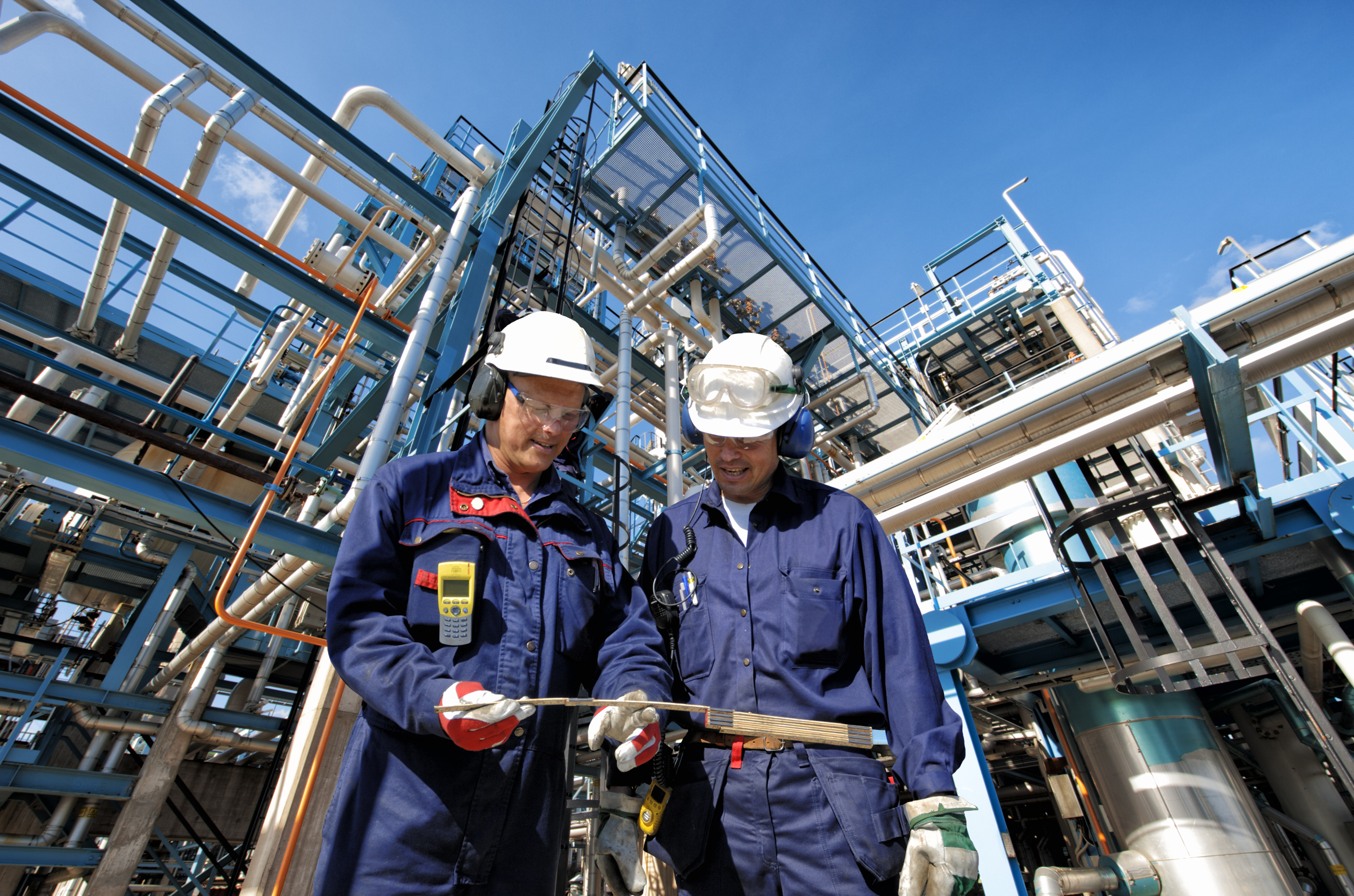 |
The project aims at the implementation of a customized, sustainable and future-oriented process safety management solution into NIS Gazprom Neft. The project is developed in two phases, the gap analysis phase and the implementation phase at three selected sites: Pančevo Refinery, Elemir Gas Refinery and Ovča gas storage. The Gap analysis phase was carried out in 2016 and implementation phase is currently at early stages.
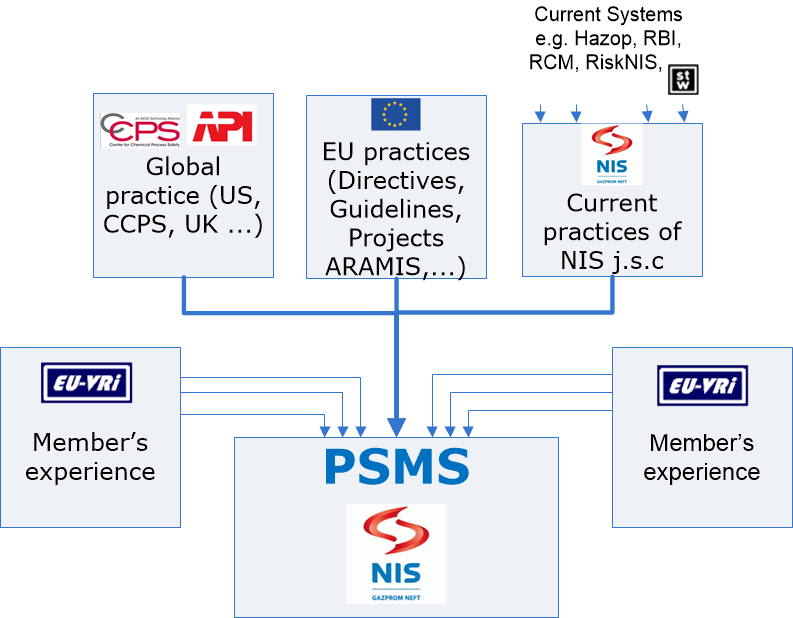 |
The solution provides the best possible terms and conditions for improving further the corporate safety culture and aligning it with the stat-of-the-art solutions and worldwide practices, such as: EU directives (Seveso), US standards and guidelines (CCPS and API), ensuring thus compatibility with the global market requirements and efficiency in the long – year industrially prove solutions. The CCPS will provide the guidance with the 20 Elements of Risk Based Process Safety (RBPS). API will be used complementary to the CCPS for metrics and indicators, and, last but not least, full inclusion of all good existing NIS practices (i.e. all the elements already developed in NIS j.s.c.).
The concept of ˝doing the right thing every time˝ will be developed with NIS j.s.c by assessing and improving operating procedures, personal behaviors, disciplines and trainings.
|
|
|
|
|
|
|
12 Apr
2017 |
Successful results from the Bio4Self project continue to come |
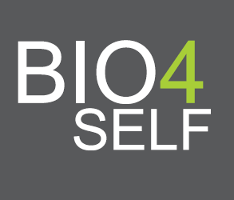 |
The Bio4Self project has published some new results about the development of polylactic acid (PLA) self-reinforced composite materials with high mechanical performance. In that manner, the results concerns hydrolytic stabilization of PLA, odour control, extrusion of PLA filaments with low and high melting point and also preliminary life cycle assessment (LCA).
In order to get more information, please click here.
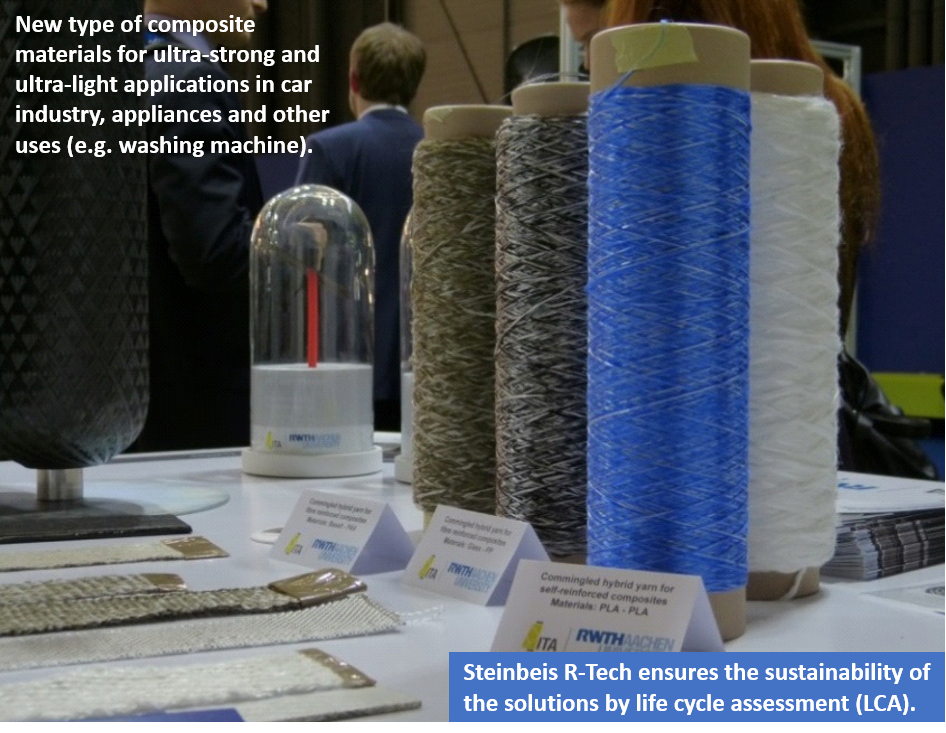 |
|
|
|
|
|
01 Feb
2017 |
ELSEVIER - Special Issue: societal safety, critical infrastructure reliability and related intersectoral governance |
 |
Submissions of full papers are due via Safety Science’s submission portal on February 1, 2017.

Special Issue: societal safety, critical infrastructure reliability and related intersectoral governance
Societal safety refers to the consolidation of society’s robust “normal” functioning and includes the prevention and absence of major disruptions within and across key sectors. When failures occur, societal safety incorporates the ability to respond to and cope with external or internal stresses, such as natural hazards, terrorism and major industrial accidents. Critical infrastructures are the lifelines of modern societies and their reliability is essential for societal safety. Sectors, organizations and populations are organized around the expectation that infrastructures function, typically with near 100 per cent reliability. Their success—their usefulness and high reliability —produces societal vulnerability and challenges in terms of governance, as dependence on them is engrained in the fabric of society. Joint and coordinated efforts from different disciplines are required to maintain societal safety in general and critical infrastructure reliability in particular as both the vulnerabilities and the resources for resilience straddle organizational, sectoral, jurisdictional and national boundaries.
This Special Issue invites studies that advance our understanding of societal safety and our capability for preventive and responsive action. We seek to elaborate societal safety around two particular foci: as societal issues (matters concerning policy and regulation) and as operational issues (the operation and emergency management in infrastructure sectors along with their other key functions) and, importantly, how the two foci are intertwined. At least two important trends challenge both:
1) Neoliberal forms of governance have led to more fragmented organizations while sectors of society have become more tightly coupled.
2) Digitalization has introduced new, often intractable, interdependencies and couplings, increasing complexity and the potential for domino- or cascade effects. It opens up new vulnerabilities related to intentional and accidental events but also new means for risk monitoring and coordination in emergencies.
While the dependency on highly reliable critical infrastructures and digital technologies may invite models of societal safety based on strict rules and regulation, the last decades of safety and reliability theory has increasingly been concerned with how system variability is handled in dynamic ways and how situational adaptations and adjustments can be resources for resilience. Our Special Issue specifically encourages reflection on the boundaries of this adaptability, the managing of adaptability, and its regulation.
The special issue invites papers discussing societal safety as operational and societal issues. We are particularly, but not exclusively, interested in papers discussing the inter-organizational/inter-sectoral management of societal safety, case studies of critical infrastructures and organizations/agencies responsible for societal safety, resilience based perspectives on societal safety, perspectives on the management on the societal interconnectedness of risk and on the relationship between safety and security. We are also interested in theoretical and empirical contributions addressing the implications of digitalization and neoliberal governance (New Public Management, managerialism, public-private partnerships etc) for these topics.
Submission Method
The length of submitted papers will be between 7,000 and 10,000 words. Submitted papers must be unpublished and not currently under review by other journals. Papers using previously published conference papers should not exceed 20% similarity.
All Full length papers should be submitted via the Safety Science submission system. While submitting a paper to the special issue, please choose the article type “Societal Safety” otherwise your submission will be handled as a regular manuscript. All submissions will go through the journal’s standard peer review process. Criteria for acceptance include originality, contribution, scientific merit and relevance to the theme of the Special Issue. For author guidelines, please visit the website of the journal at http://www.journals.elsevier.com/safety-science
Deadlines:
Submissions of full papers are due via Safety Science’s submission portal on February 1, 2017. Papers must be in accordance with the ordinary format requirements of Safety Science.
We also invite interested authors to submit abstracts or extended abstracts (by email, max 1000 words) to the editors by October 15, 2016. This is not mandatory for full paper submission.
Managing guest editor:
Dr. Emery Roe, Center for Catastrophic Risk Management, University of California, Berkeley, US, emery.roe@berkeley.edu
Guest editors:
Dr. Petter G. Almklov, NTNU Social Research, Norwegian University of Science and Technology (NTNU), Norway, pettera@svt.ntnu.no
Kristine V. Størkersen, NTNU Social Research, Norwegian University of Science and Technology (NTNU), Norway, kristine.vedal.storkersen@apertura.ntnu.no
Dr. Stian Antonsen, Department of Safety Research, SINTEF Technology and Society, Norway, Stian.Antonsen@sintef.no |
|
|
|
|
|
22 Dec
2016 |
Society for Risk Analysis (SRA) Annual Meeting 2016, San Diego, USA |
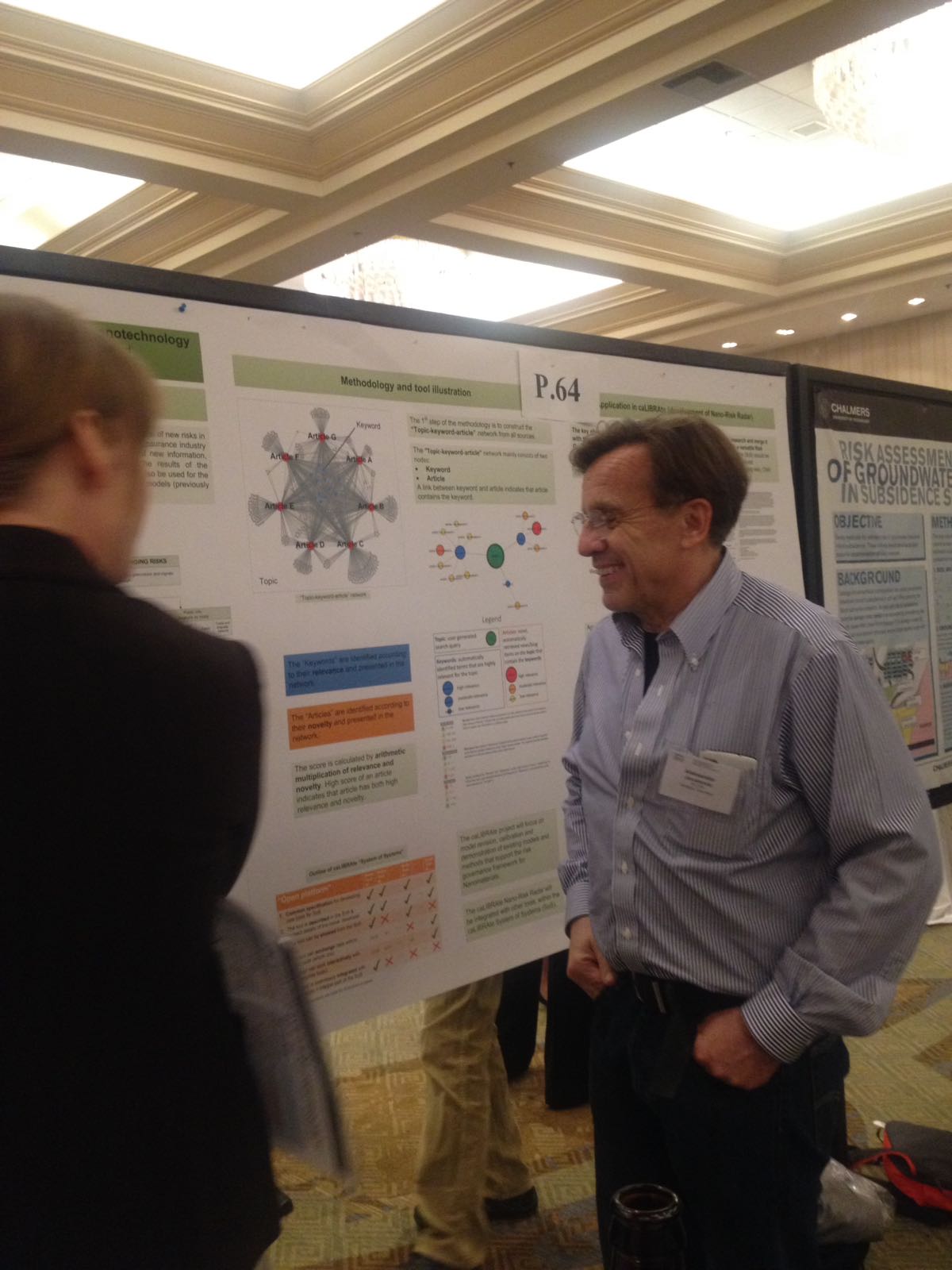 |
Steinbeis Advanced Risk Technologies (R-Tech) GmbH has participated and successfully presented the work related to the development of Nano-Risk Radar. The development of Nano-Risk Radar horizon scanning tool is being carried out in a large EU Horizon 2020 project, caLIBRAte (Performance testing, calibration and implementation of a next generation system-of-systems Risk Governance Framework for nanomaterials).
Steinbeis Advanced Risk Technologies (R-Tech) GmbH is actively contributing to an EU project caLIBRAte and leading respective work packages. One of the main tasks of R-Tech is to develop a web-based caLIBRAte specific horizon scanning tool called "Nano-Risk Radar" for emerging technologies /risks (e.g. Nanotechnology & nano-enabled products).
The basic concept, methodology and on-going development of Nano Risk-Radar had been presented during the Society for Risk Analysis (SRA) Annual Meeting. The SRA Meeting was held during 11-15 December 2016 in San Diego, USA.
Nano-Risk Radar
The Nano-Risk Radar helps to identify and to monitor the emerging risks in the area of nanotechnology by considering the environmental, health/safety, socio-political, economic/financial, regulatory/legal and technological aspects. The indications about the potential risks are being collected from the different sources, such as Expert level: Platform for including experts, opinions / warnings; Scientific publications level, Public and stakeholders’ perception level (conventional sources; reports on surveys, focus groups and similar) as well as the social media/ networks. The Nano-Risk Radar uses the "topic-keyword-articles" network in order to scan and to extract the available information from user-defined sources.
The Nano-Risk Radar will be one of the tool to be integrated with other relevant tools for nanotechnology risks leading to the development of caLIBRAte System-of-Systems Risk Goverance Framework. The Risk Goverance Framework will be based on Cooper Stage-Gate model. Furthermore, the Nano-Risk Radar is applicable to other emerging domains/ technologies/ risks. A copy of the poster can be found here
 |
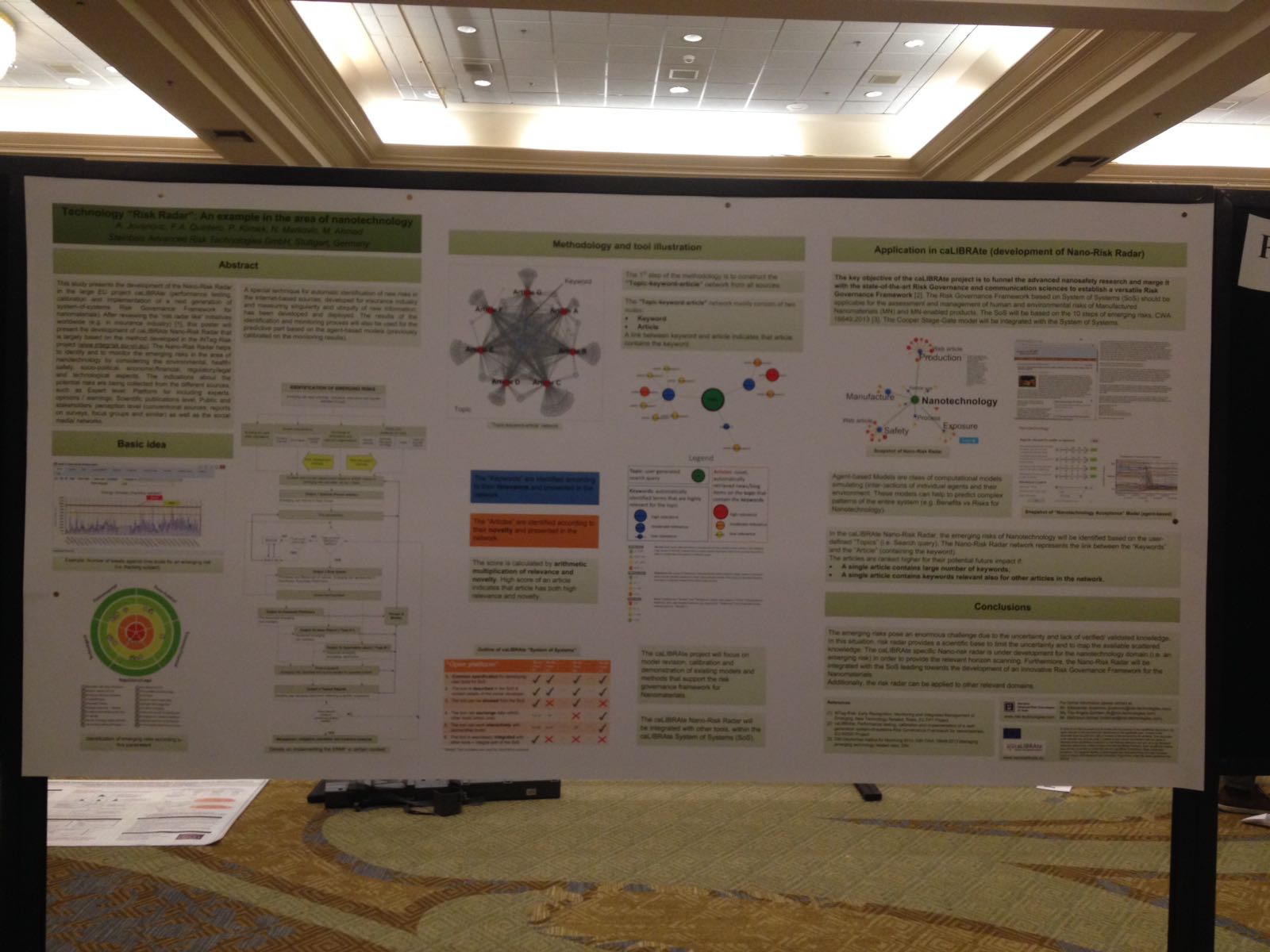 |
Further contact
Prof. Aleksandar Jovanovic jovanovic@risk-technologies.com
Ms. Flor Angela Quintero fq@risk-technologies.com
Mr. Mehmood Ahmad mahmad@risk-technologies.com
Project Website
http://www.nanocalibrate.eu

|
|
|
|
|
|
11 Oct
2016 |
CBRNE innovation fair 2016 & EDEN final conference |
 |
The CBRNE INNOVATION FAIR 2016 and the EDEN final conference will take place 11-12 October 2016 in Brussels.

The CBRNE INNOVATION FAIR 2016 will take place 11-12 October 2016 in Brussels and will bring together decision-makers, from government, operational units, industry, science and research in CBRNE and crisis management.
The industry’s top performing companies and organisations will present their products and innovations. Among the products presented a special focus will be on EDEN Store, tools developed by the EDEN project and constructive dialogue and collaboration on topics relevant to disaster risk management and crisis management.
The EDEN Consortium invites decision makers, operators and donors of CBRNE technologies to join its Final Conference on 11 October 2016 organised jointly with the CBRNE INNOVATION FAIR 2016 in Brussels.
During the event, EDEN partners will present their results and achievements obtained in the last years of work in terms of technology, procedures and methods for the management of CBRN accidents. The EDEN Store will be presented and the movies from the validation exercises displayed.
EDEN Final Conference | Tuesday 11 October 2016, 11:00–16:30
- Project Results
- EDEN Store
- EDEN Demonstrations Results (food, chemical, radiological)
- EDEN Trainings
- End-users Assessment of EDEN Solutions
- The Future
|

www.eden-security-fp7.eu
|
Registration at www.cbrne-fair2016.eu
Attendance is free of charge, but registration is required (number of visitors is limited).
EU-VRi (Operating Agent of ETPIS) is coordinating the project’s Supplier Platform that is reaching out for innovative solutions throughout the CBRNe security cycle. In addition, the institute is in charge of standardization aspects, acting as organization in liaison with CEN TC 391 on Societal and Citizen Security on behalf of the consortium |
|
|
|
|
|
27 Sep
2016 |
First results of the Bio4Self project were published |
 |
Biobased self-functionalised self-reinforced composite materials

The new Horizon2020 project, Bio4Self, starts to get its first results regarding the development of Polylactic acid (PLA) self-reinforced composite materials with high mechanical performance. In the project, fully biobased self-reinforced polymer composites (SRPC) and the self-functionalisation of the materials are aimed.
In order to get more information, please click here.
|
|
|
|
|
|
29 Jun
2016 |
Resilience and Technological Risk: comparative experiences 40 years after the disaster in Seveso |
 |
The conference Resilience and Technological Risk: comparative experiences 40 years after the disaster in Seveso will take place June 29th, 2016 at Committee of the Regions in Bruxelles.
 
In the occasion of the "40 years anniversary of the disaster of Seveso*", The European Commission would like to invite you to the conference Resilience and Technological Risk: comparative experiences after the 40 years of disaster of Seveso to analyse in-depth the effectiveness of the adoption of the European Directives and by local governments and debate how “resilience actions” have been lasting uninterrupted for forty years.
Experts of the European Commission and EU regional authorities will discuss how risk management and prevention have been improved thanks to the synergy between Institutional and socio-economics regional and local structures as well as the new perspectives: ranging from environmental restoration, scientific research and safety regulations.
Confirmation to the participation is required by June 20th, 2016 to silvia.dognini@flanet.org (specifing surname, first name, date of birth, type and number of document, organization).
*The accident of Seveso (July 1976) marked the start of a series of “resilience actions” which has been lasting uninterrupted for forty years thanks to an active participation of the civil society.
Informations:
40° Anniversary after Seveso:
Resilience and Technological Risk: comparative experiences 40 years after the disaster in Seveso
29/06 at Committee of the Regions
Bâtiment Jacques Delors, Rue Belliard 99-101 - Bruxelles
Room JDE53 (5th floor of the JDE building) |
|
|
|
|
|
28 Jun
2016 |
A Large Steinbeis R-Tech EU Project Finished: Developing Novel Fire-Resistant High Performance Composites |
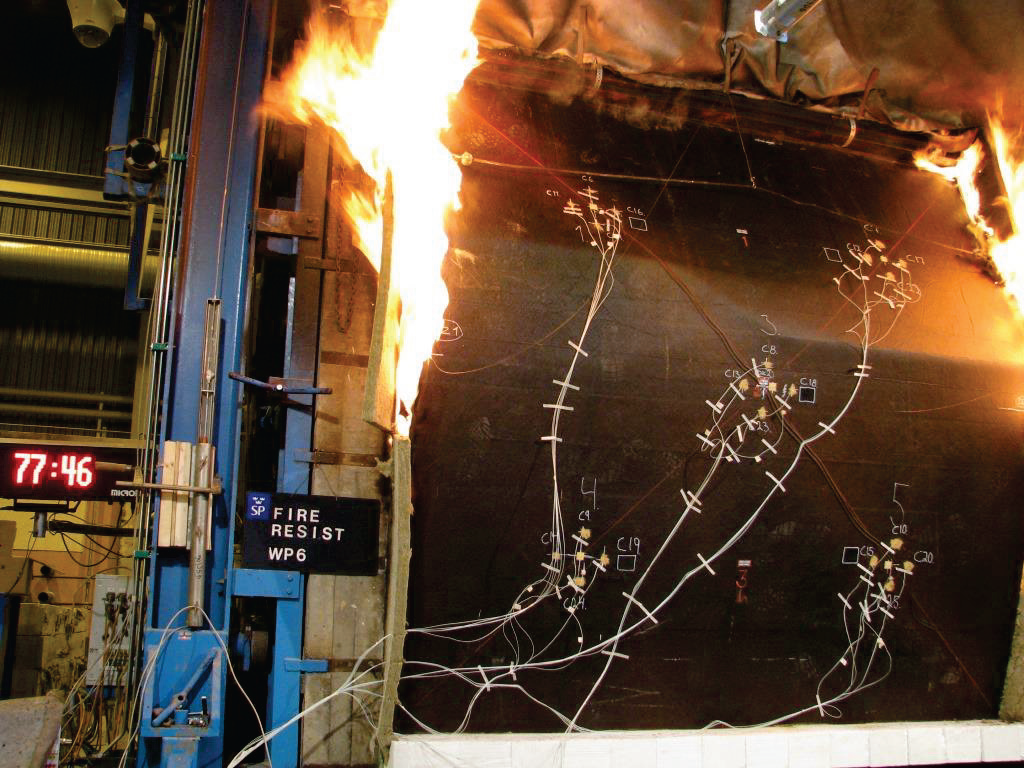 |
An article about Steinbeis R-Tech project, FIRE-RESIST, published in Research EU Results Magazine May 2016 issue.

FIRE-RESIST (Developing novel fire-resistant high performance composites), a €7.8 million EU FP7 funded initiative, was aimed to improve the fire capacity of high performance polymer matrix composite materials for the transport sectors. Under the leadership of NewRail from Newcastle University, the project consortium of 18 partners brought together experiences to fulfill the requirements from the aerospace, railway and maritime industries. During the period from 2011 to 2015, R-Tech took the role of scenario development, analyzing the possible development of the innovative FIRE-RESIST material technologies in the different phases of the product development and also a multi-criteria decision support tool which helps to prioritize and optimize the portfolio of development alternatives.
With the aim of improving the fire resistance of composite materials without compromising their structural performance, FIRE-RESIST has made a valuable contribution to greater passenger safety. The new technology is also expected to lower fuel consumption and carbon dioxide emissions while enhancing the European industry’s competitiveness.
For more information please visit the following link.
http://cordis.europa.eu/news/rcn/125420_en.html |
|
|
|
|
|
01 Mar
2016 |
New Horizon 2020 innovation project launched on ultrastrong, fully biobased composite materials |
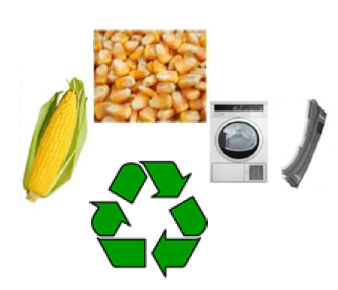 |
The BIO4SELF project, aimed at the development of fully bio-based self-reinforced composite (SRPC) materials, approved as a new Horizon 2020 project of R-Tech. Our developments will enable to use biobased composites for high end applications, thus contributing to using sustainable and renewable raw materials. Being able to produce, process and sell these novel SRPCs and related composite intermediates will be a clear competitive advantage.
Steinbeis Advanced Risk Technologies (R-Tech), is part of the newly approved Horizon 2020 project BIO4SELF. Within this innovation project, R-Tech will, as part of a European consortium, contribute to the development of novel PLA materials for composites.
The worldwide demand for replacing fossil-based raw materials for the production of polymers leads to a significant growth of bioplastics in terms of technological developments.
An assessment done by the European Commission has indicated that bio-based products and biofuels represent approximately € 57 billion in annual revenue and involve 300,000 jobs. According to the forecasts, the bio-based share of all chemical sales will rise to 22 % by 2020, with a compounded annual growth rate of close to 20 %.
 
Left: Expected Biotech Sales (Source: McKinsey). Right: graph showing the expected “biobased” employment growth (Source: Nova Institute).
However, there still exist drawbacks that prevent the wider use and commercialisation of biobased material. Two important ones:
- Lower mechanical performance: although PLA can already replace conventional materials (like polyester) for quite some applications, its limited mechanical strength is still hampering commercial application.
- Limited durability: for application with long lifetime, PLA is not optimal yet due to its limited hydrolytic stability.
Enhancement of these properties remains an important challenge for biobased polymers. There is a need to develop biobased, sustainable polymeric materials with high stiffness, high impact and high durability without impairing recyclability.
The BIO4SELF project will tackle these drawbacks and aims for unprecedented stiffness by combining PLA (the largest used biopolymer) with a bio-LCP (Liquid Crystalline Polymer) to create an extra reinforcement level. Furthermore, the temperature resistance of PLA and its durability will be improved. The latter via adding well-chosen anti-hydrolysis agents. Further, inherent self-functionalization via photocatalytic polymers (self-cleaning properties), tailored microcapsules (self-healing) and deformation detection fibres (self-sensing) will be added.
The potential of the biobased materials will be proven in advanced prototypes for automotive and home appliances. Cost-efficient production of fully biobased composites meeting the demand for high technical performances and sustainability will be pursuit by investigating the performances of new biobased materials in plastic manufacturing. To reach this goal, the whole value chain will be considered within BIO4SELF (see figure below).

From PLA raw material to actual products – an overview of the BIO4SELF project scope.
R-Tech will contribute this by tackling the aspects related to sustainability of the materials and products developed within BIO4SELF. This implies the environmental and cost assessment, end-of-life scenarios and safety analysis. In the environmental assessment, a cradle-to-grave approach will be used to assess the investigated system (biobased composite structure and conventional fossil fuel based materials). The cumulative environmental impact resulting from all stages in the product development, includes raw materials’extraction (using secondary and tertiary data for the evaluation of specific impact) and the ultimate product disposal by investigating the benefits/constraints related with different scenarios defined by the compositions and characteristic of final products.
Furthermore, risk management studies in the project will be carried out by R-Tech. The risk management will follow the principles established at ISO 31000 and consider the main steps of risk assessment (risk identification, risk analysis, risk evaluation) together with monitoring and communication.
The BIO4SELF consortium is strongly industry driven, including 5 large enterprises and 5 SMEs. These are completed with 3 universities and 3 research centres. This way BIO4SELF covers all required expertise and infrastructure from academic, applied research and industry from 10 different EU countries (for a detailed overview of the consortium, see next page).
BIO4SELF is an H2020 project, meaning that it is co-funded by the European Union (grant of 6.8 million €). It will last 40 months and started on March 1st, 2016. It is coordinated by Centexbel, the Belgian research centre for textiles and plastics.
Further contact:
Gözde Kara gkara@risk-technologies.com
Prof. Dr. Aleksandar Jovanovic jovanovic@risk-technologies.com
Project website:
www.bio4self.eu
BIO4SELF Consortium
|
Beneficiary
|
Roles
|
|

|
Coordinator of the project and responsible for the melt spinning of PLA filaments and their testing
|
|

|
Based on their unique expertise regarding composite and materials mechanics, they will produce composite and they will test them on semi-industrial scale combined with multiscale modelling
|
|

|
Responsible for the melt spinning of PLA filaments and the structuring into hybrid yarns and textile fabrics, based on their competences in textile technology.
|
|

|
Development of new compound formulations (additives, stabilizers) and of the new material compositions and processing and the use of sensitive compounding. Process parameter optimisation.
|
|

|
Being specialised in biobased materials, they will be responsible for the combination of PLA with bio-LCP and the modelling of the structure-processing-property relations
|
|

|
The role in the project will be both the self cleaning functionalization of the biobased materials, pilot scale optimisation of irradiation process as well the environmental assessment of the new products via Life Cycle Analysis.
|
|

|
Definition of specification and requirements for the production of a prototype for the automotive sectors.
|
|

|
Production and evaluation of a household appliance part from the novel biobased materials.
|
|

|
As SME focused on thermoplastic composites, it will produce composite intermediates (UD-tapes, fabrics, pellets and consolidated plates) by replacing current products by biobased alternatives.
|
|

|
It will apply its expertise in biobased compounding for the production of functionalised pellets
|
|

|
Production and further drawing of PLA filaments at an industrial scale, leading to high stiffness filaments.
|
|

|
Their role is focused in the improvement of the PLA durability and the realisation of the self healing functionality
|
|

|
Responsible for the electron beam treatment of PLA to improve the thermal stability and the stiffness of the developed materials
|
|

|
R-Tech role is to perform the environmental and economic evaluation of the new biobased materials. Special attention will be given to end-of-life scenarios and the safe-handling and safe-use of any type of nanomaterials.
|
|

|
Responsible for the exploitation and dissemination, including business planning, intellectual property and technology transfer.
|
|
|
|
|
|
|
18 Dec
2015 |
R-Tech to help mapping and calibrating nanorisks in the EU! |
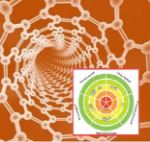 |
In the new Horizon 2000 project caLIBRATe of Steinbeis R-Tech will play a key role in the development of the next generation EU tools for risk governance of nanomaterials. The main objective of caLIBRAte is to funnel the state-of-the-art in Nano safety research and merge it with state-of-the-art risk governance and communication. It will provide versatile risk governance tools and the framework for assessment and management of human and environmental risks of micronano and micronano-enabled products.
R-Tech is going to take a leading role in the project by developing the Nano-Risk for the identification and monitoring of nanotechnology emerging risks. In addition, R-Tech will consolidate the caLIBRAte Nano-Risk Governance framework by developing the System of Systems (SoS) platforms. The framework models will be linked to the 10 steps of the ERMF framework developed within the iNTeg-Risk project and support the Cooper-style stage gate innovation model as a special interface for different stakeholders.

The web-based “system-of-systems” will link different models and methods for: 1) screening of apparent and perceived risks and trends in nanotechnology, 2) control banding, qualitative and fully integrated predictive quantitative risk assessment operational at different information levels, 3) safety-by-design and multi-criteria decision support methods, 4) risk surveillance, - management and -guidance documents. Control banding tools and quantitative models will be subject to sensitivity analysis and performance testing followed by a revision as needed. After revision the models will again be analyzed by sensitivity testing, calibration, performance tested to establish the uncertainties. After calibration, the models will be part of the framework, which will be demonstrated by case studies. Stakeholders will be involved for defining the user requirements of the framework and will receive training in the framework at the end. The caLIBRAte project answers to the call of NMP30-2015: Next generation tools for risk governance of Micronanotechnologies. The project is specifically designed to address the key challenges defined in the scope of the call text. There is particular focus on model revision, calibration and demonstration of existing models and methods that support the risk governance framework in regards to safe innovation and already implemented nanomaterials. Next generation computational exposure assessment and -toxicology is anticipated in the framework. |
|
|
|
|
|
28 Oct
2015 |
Lethabo Power Station "RBI- certified" |
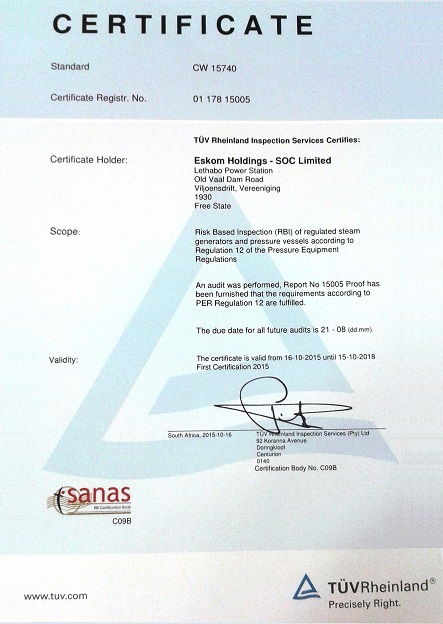 |
The Steinbeis Advanced Risk Technologies RBI system implemented in Eskom, Lethabo Power Station, in South Africa, was successfully certified by TÜV Rheinland South Africa.

|
"Thanks to the Lethabo Assessment team, especially Hari, for the dedication and commitment in assisting Lethabo throughout the RBI Certification process.
The risk assessment schedule was extremely tight to redo all the assessments, however with the commitment and dedication of the team we succeeded.
Thanks again for your support!
Anisha Ulassi
Lead Risk Engineer
Lethabo Power Station"
|
|
|
|
|
|
|
11 Oct
2015 |
ISO 9001 Recertification Audit |
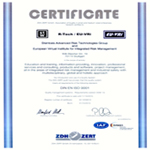 |
In connection that we obtained ISO 9001 certification, the re-certification audit on October 8-9, 2015, showed again that The Steinbeis Advanced Risk Technology Group duly improves the Quality Management System.
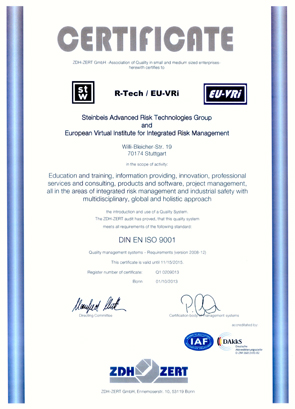 |
|
Steinbeis Advanced Risk Technology Group is one of over one million companies and organizations in over 170 countries where this standard was implemented.
Due to owning this certification, our company stepped to next level of activity with maintaining the highest quality of services which are provided.
|
|
|
|
|
|
|
25 Sep
2015 |
6th International Symposium on Industrial Engineering |
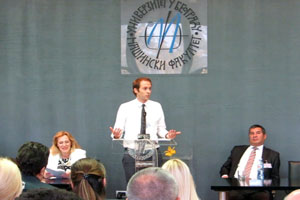 |
Steinbeis Advanced Risk Technologies Group was co-organizer of the 6th International Symposium on Industrial Engineering which took place on September 24-25, 2015 in Belgrade, Serbia.
|
The regular event was hosted by the Mechanical Faculty of the University of Belgrade and co-organized by the Steinbeis Advanced Risk Technologies Group.
The presentation and discussions during and between the different sessions at the SIE 2015 contributed to a better understanding of the important role of Industrial Engineering for an economic and environmental sustainable future of Serbia and other countries. The symposium provided insights into the scientific work and achievements of international researchers as well as interesting trends with respect to the challenges practitioners of the future will have to face.
From the side of Steinbeis Risk Technologies Group, Michael Löscher was invited to give a welcome speech for the opening of the event as well as a keynote on “Safe and Sustainable Innovation in Germany – The Steinbeis Approach”.
|
 |
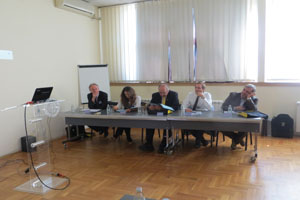 |
|
|
|
|
|
|
18 Sep
2015 |
5th China Europe Risk Forum |
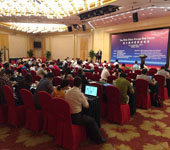 |
On Sept. 16-19, 2015, Beijing Academy of Sciences, European Virtual Institute for Integrated Risk Management (EU-VRi) and Steinbeis Advanced Risk Technologies Group have organized the 5th China Europe Risk Forum. The Forum was devoted to: "Emerging risks and resilience of critical systems and infrastructures".
|
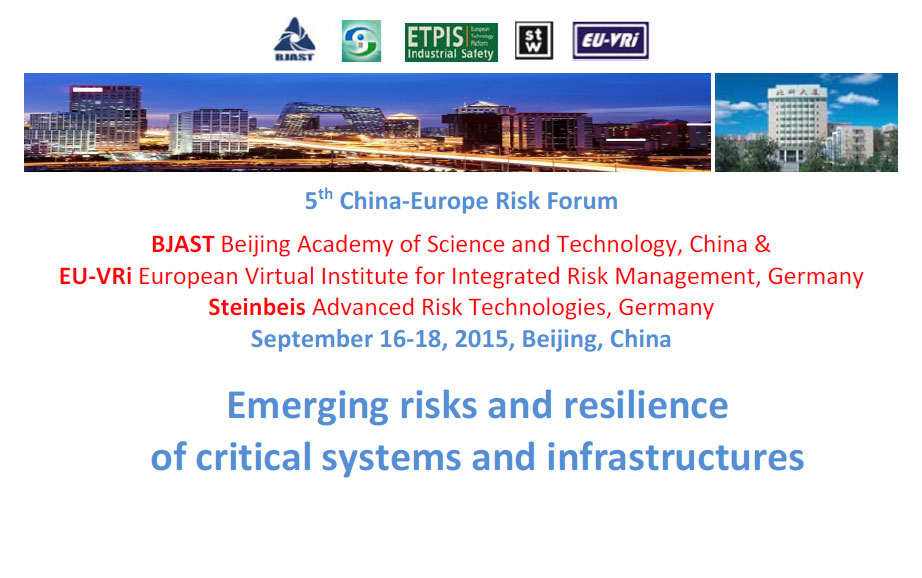
|
| The Forum brought together the specialists in risk fields from different areas and countries from all over the World. The topics were presented by experts, not only from Europe or China, but also by representatives from United States, Singapore and Japan. Thanks to this, it was a very good opportunity to exchange experiences and knowledge, how to deal with hazards which threaten the critical systems and infrastructures. |
|
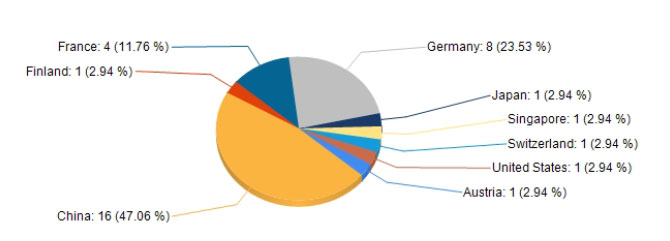
|
|
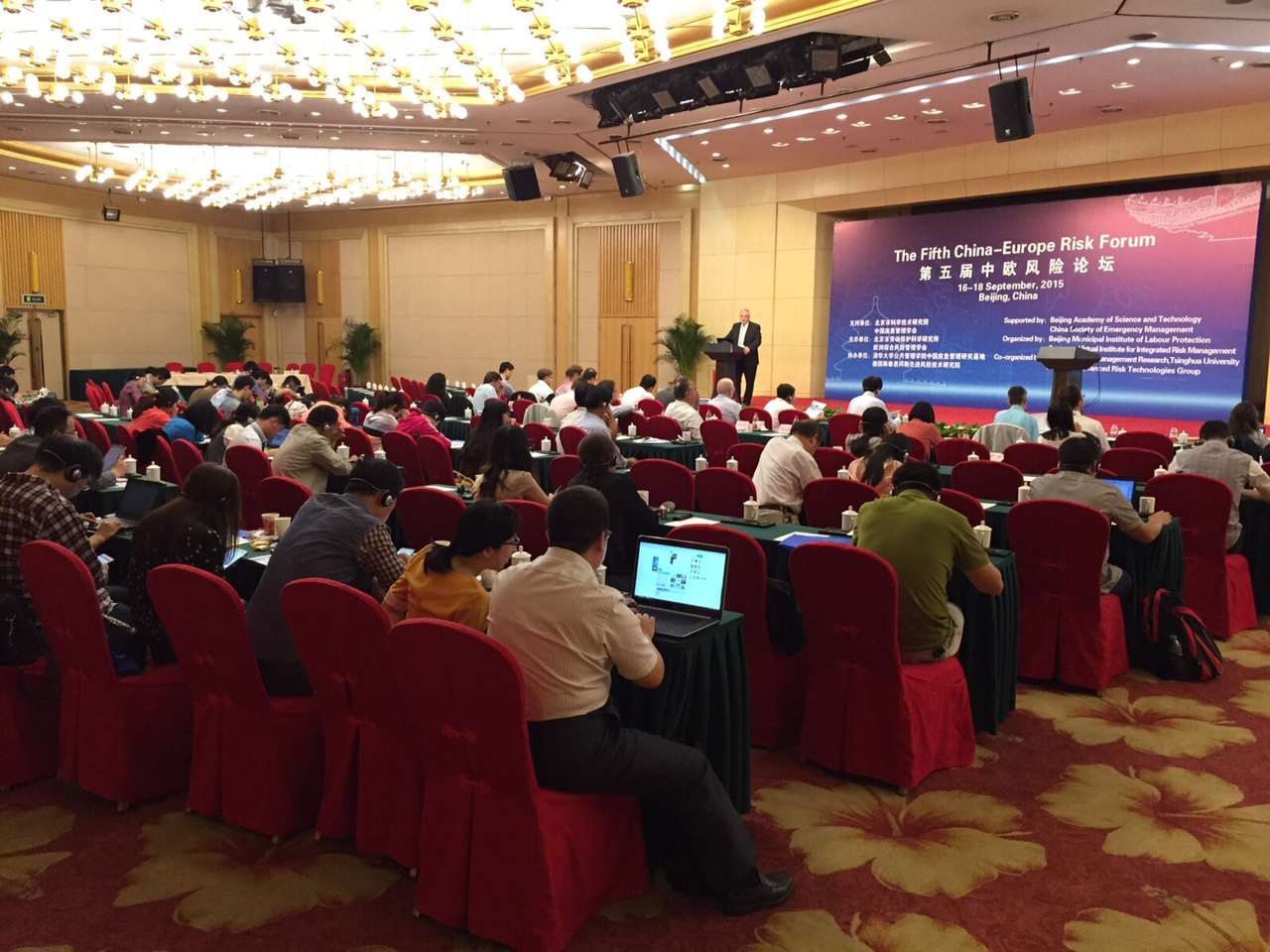
|
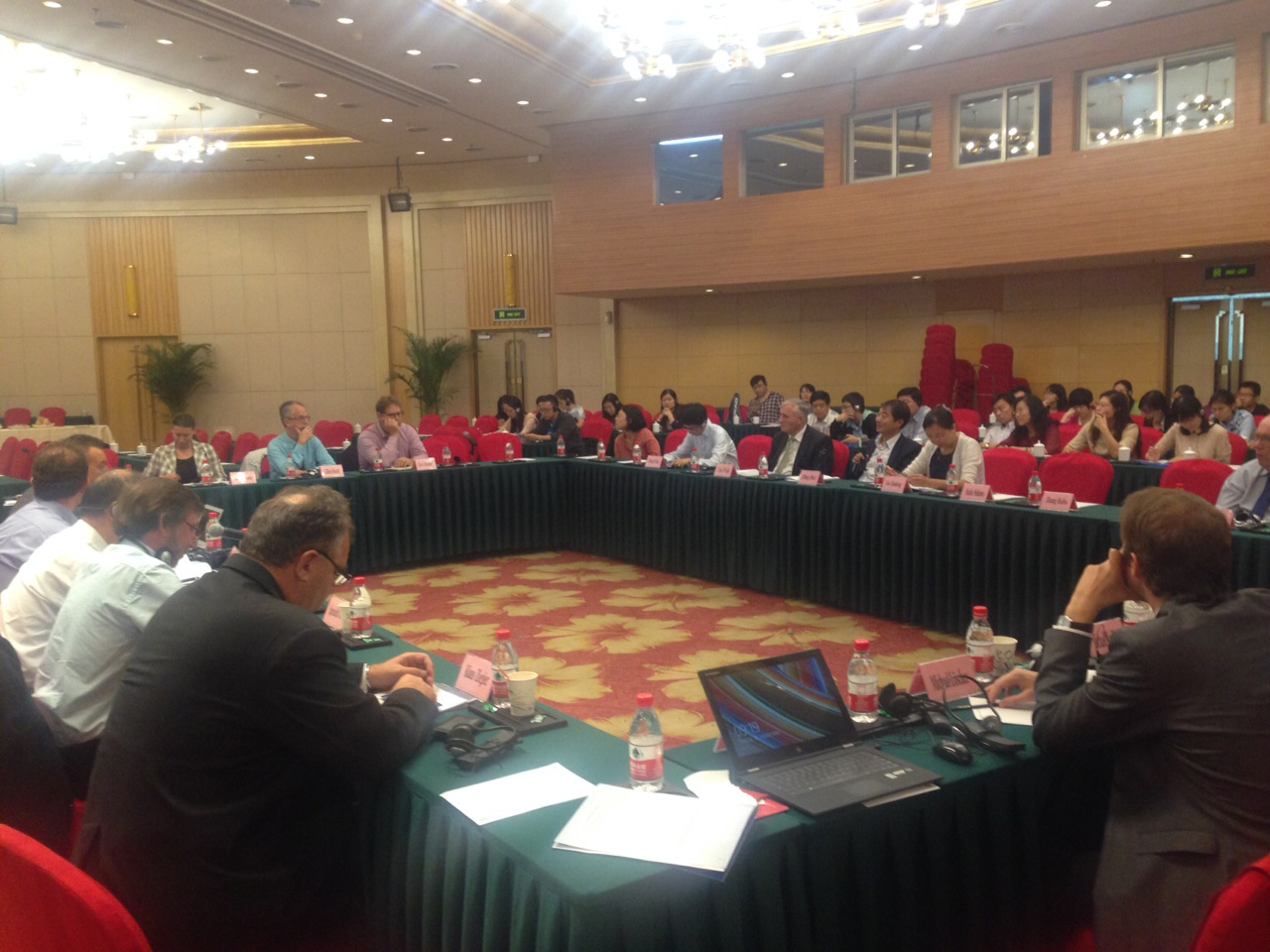
|
|
|
|
|
|
|
24 Jul
2015 |
Risks of Industry 4.0 |
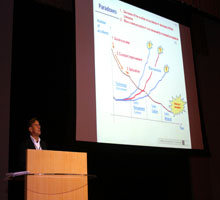 |
Prof. Jovanovic explains the Steinbeis vision and approach in his keynote at The World Congress of Risk in Singapore (July 19-23, 2015)
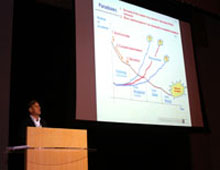
"The overall theme of the 2015 World Congress was Risk Analysis for Sustainable Innovation, highlighting sessions that identified ways that risk analysis can assist private and public policy makers facing complex and uncertain challenges while maintaining innovation and development. Special emphasis was placed on the role of risk analysis as a tool for policy making and tradeoffs in situation of limited resources and extreme challenges that are characteristic of developing countries."*
Among speakers, who represented topics from fields of health, environment, agriculture, engineering, economics, decision-making, psychology, social & political sciences, communication, law & policy, Prof. Jovanovic "(…) explaining his concept of "Industrial Revolution 4.0". He particularly highlighted the difficulties laypeople have in grasping fundamental understandings of where technology is heading today, stating that with the advent of automation, "humans could go the way of the horse", and that the practice of human skills may be lost”**.
The congress is finished, but all new ideas which have arisen during that time will be expanded in the future.
Photos
Read more about The World Congress on Risk 2015
* http://www.sra.org/worldcongress2015
** http://www.sra.org/news/sra-world-congress-risk-2015
|
|
|
|
|
|
14 Aug
2014 |
Final Assessment Report flags iNTeg-Risk as Success Story |
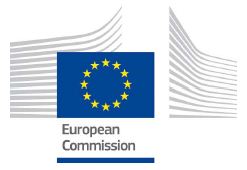 |
In its Final Assessment Report of iNTeg-Risk Project (www.integ-risk.eu) the European Commission flagged the project and the work of the consortium made up of 60 beneficiaries and 29 Third Parties as a "success story".
 |
In its Final Assessment Report of iNTeg-Risk (www.integ-risk.eu) the European Commission flagged the project and the work of the consortium made up of 60 beneficiaries and 29 Third Parties as a "success story" (the Report is available for Project Partners at http://www.integrisk.eu-vri.eu/home.aspx?lan=230&tab=533&itm=534&pag=594).
The EC explicitly highlights EU-VRi's project management ("outstandingly effective and efficient") for this complex large collaborative project which has received more than 12.5 Million EUR funding from 2008 to 2013.
The follow-up initiatives, such as the European Emerging Risk Radar (E2R2) or the European Common House Safety are underway and we are looking forward to build up on the results that have been achieved in iNTeg-Risk.
|
|
|
|
|
|
|
05 Mar
2014 |
Our Rada... IN MEMORIAM |
 |
Radmila Guntrum, Rada
1951 - 2014
Rada's great, generous and brave heart stopped beating the late afternoon of March 3, 2014. But we are sure that all who knew Rada can still hear the echo of that beat. Just be silent, think about Rada and you will hear. Just as we, her friends and colleagues from Steinbeis Advanced Risk Technologies and EU-VRi, will do.
Stuttgart, March 2014 |
|
|
|
|
|
04 Nov
2013 |
Prof. Jovanovic was awarded the "Steinbeis Medal" |
 |
During a ceremony on November 4, 2013, Prof. Dr. Michael Auer, chairman of the Steinbeis Foundation, and Mr. Manfred Mattulat, member of the executive board of Steinbeis Foundation awarded Prof. Jovanovic the "Steinbeis Medal".

|
Together with the medal also a certificate with the following text was presented:
„Steinbeis ehrt Professor Dr.-Ing. Aleksandar Jovanovic mit der Steinbeis-Medaille. Sie zeichnet Steinbeiser aus, die sich durch besondere Projekterfolge, eine besondere Persönlichkeit, Grundhaltung oder Vorbildfunktion herausragende Verdienste um Steinbeis erworben haben.“
(Steinbeis honors Professor Dr.-Ing. Aleksandar Jovanovic with the Steinbeis Medal. It distinguishes “Steinbeiser” who have, through their extraordinary project successes, their excelling personality, their attitude or model role function, provided outstanding contributions to Steinbeis.)
More details about the medal and the ceremony can be found at www.stw.de. |
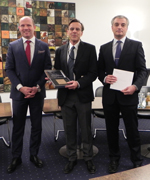 |
|
As decided by the awardee and the Steinbeis team, the financial part of the prize will be invested into “Steinbeis Risk Research Fund”.
|
|
|
|
|
|
|
20 May
2013 |
Accompanying course to the 5th iNTeg-Risk Conference on the topic of ISO 31000 |
 |
The course 'ISO 31000 Principles and Management' was held just before the 5th iNTeg-Risk Conference 2013 on May 20, 2013. This course touched on the key elements in the International Standard of ISO 31000:2009; the complex relationship between risk management principles, frameworks and processes and the applications in industry and in general.
V-R32 ISO31000: 'ISO 31000 Principles and Management'
on May 20, 2013 in Stuttgart, Germany hosted and organized by R-Tech
Lecturer: Prof. Aleksandar S. Jovanovic, STI R-Tech
Venue: Steinbeis Transfer Institute Advanced Risk Technologies, Haus der Wirtschaft, Willi-Bleicher-Str. 19,
70174 Stuttgart, Germany
At the end of the course, students are expected to have basic knowledge about:
- main principles of the ISO 31000 standard
- ISO 31000 framework for managing risk
- implementation principles of the ISO 31000 standard
- related standards
- open issues in ISO 31000
- further development of ISO 31000 (ISO 31004, new revisions)
Course content by Units
|
Unit 1: Introduction to the ISO 31000 philosophy and principles
|
Duration
(minutes)
|
|
Explanation on the philosophy and basic principles of ISO 31000
|
60
|
|
Review and conclusions of the Unit 1. Questions and answers.
|
15
|
|
Unit 2: ISO 31000 Framework
|
Duration
|
|
Overview of the ISO 31000 framework for risk management
|
60
|
|
Review and conclusions of the Unit 2. Questions and answers.
|
15
|
|
Unit 3: Implementation principles of ISO 31000
|
Duration
|
|
Explanation on implementing the ISO 31000 risk management framework
|
60
|
|
Review and conclusions of the Unit 3: Questions and answers
|
15
|
|
Unit 4: Practical aspects of implementation
|
Duration
|
|
Elaboration on the practical aspects of implementing ISO 31000
|
60
|
|
Review and conclusions of the Unit 4: Questions and answers
|
15
|
|
Unit 5: Review and final discussion
|
Duration
|
|
Review of main course issues and final discussion
|
30
|
|
Closing the course
|
-
|
Announcement / Course Profile / Registration
Register before April 15, 2013 and you will receive a 10% discount from the registration fee! Final application deadline: May 6, 2013.
The course is intended for:
- professionals responsible for developing risk management policy within their organization
- professionals accountable for ensuring that risk is effectively managed within the organization as a whole or within a specific area, project or activity
- developers of standards / guides / procedures / codes of practice that, in whole or in part, set out how risk is to be managed within specific context(s)
- other professionals (engineers, managers, inspectors, legislators, etc.) who wish to deepen their knowledge in the field of risk management standardization
- individuals with no previous experience in the field of risk management standardization, but willing to extend their knowledge and take up new roles in this field within their companies
- university student
Direct contact: sti889@risk-technologies.com
Mr. Andras Veres
Tel: +49 711 1839 647
av@risk-technologies.com
Ms. Roswitha Kokejl
Tel: +49 711 1839 616
rk@risk-technologies.com |
|
|
|
|
|
22 Apr
2013 |
Learn about robust decision making in risk management |
 |
The SHB/iNTeg-Risk course 'Decision Aid Approaches for Risk Management' is organized on April 22 - 26, 2013 in Stuttgart, Germany. The participants benefit from the course by acquiring the basic knowledge about 1) main concepts related to decision making in risk management; 2) key decision making moments of risk management frameworks; and 3) tools available to improve the way managers are dealing with decision making.
VF-R39 DAA: 'Decision Aid Approaches for Risk Management'
on April 22-26, 2013 in Stuttgart, Germany hosted by the International Center for Culture and Technology Research at the University of Stuttgart and organized by R-Tech
Lecturer: Dr. Chabane Mazri, INERIS - Institut National de l'Environnement Industriel et des Risques (France)
Venue: Internationales Zentrum für Kultur- und Technikforschung (IZKT), Geschwister-Scholl-Straße 24, 70174 Stuttgart, Germany
Decision making is a process where multiple factors interact to shape the final outcome. Those factors can be technical, informational, emotional/psychological, cultural… Nevertheless, the limited rationality of economic operators makes the decision exercise more and more difficult in a more and more complex world. Safety management requires short, mid and long term decisions that may highly influence the ability of the organization to cope with its risks.
Course content by Units
|
Unit
|
Title & contents in brief
|
|
1.
|
Introduction to decision making in risk management
- Present how decision making may shape the way organization deals with risk. Through the study of various risk management frameworks (IRGC, ISO31000).
- Stakes and challenges associated to those critical phases will be highlighted.
|
|
2.
|
Reference models
A global presentation of the way decision making is considered through different disciplines and theoretical frameworks. At the end of this second phase, the students will develop a good overview of the reference models and theories related to decision making.
|
|
3.
|
Methods and tools
The scope of decision support tools is large. This section will introduce the most frequently used tools and methods within organizations dealing with risks.
Highlights will be given to:
- Multicriteria approaches like ELECTRE and Multi Attribute Utility Theory.
- Methods to elaborate and choose Key Performance Indicators for risk management.
- Uncertainties management in decision making.
|
Announcement / Course Profile / Registration
The registration is free of charge, anyone interested in the topic are welcome on the course. Please note, however, that the course is intended for 20-25 participants. The registrations will be processed on the first-applied-first-served basis. Final application deadline: April 15, 2013.
The course targets attendees with inimum mathematical background and openness to psychological and behavioral approaches of decision makin.
Direct contact: sti889@risk-technologies.com
Mr. Andras Veres
Tel: +49 711 1839 647
av@risk-technologies.com
Ms. Roswitha Kokejl
Tel: +49 711 1839 616
rk@risk-technologies.com |
|
|
|
|
|
17 Apr
2013 |
SHB/PromisLINGUA course on Intercultural Management & Communication |
 |
The course 'Business Communication and Management of Intercultural Differences' has taken place on April 17, 2013 in Stuttgart, Germany. The course stressed the importance of cultural differences and multilingual issues for the success of collaboration with partners from other cultural background, particularly in international projects. The course was organized to promote the results of the PROMISLingua project among SMEs.
IVC-R19 BC&M: 'Business Communication and Management of Intercultural Differences'
on April 17, 2013 in Stuttgart, Germany hosted and organized by R-Tech
Lecturer: Prof. Aleksandar S. Jovanovic, STI R-Tech
Venue: Stuttgart Institute of Management and Technology (SIMT), Filderhauptstraße 142, 70599 Stuttgart (Plieningen), Germany
The purpose of this course is exactly to assure that engineers, managers and IT experts can understand the importance of these aspects for the success of their collaboration with partners from other cultural background. It will address issues such as
- Intercultural value systems
- Differences in cultural practices
- Cross-cultural project management
- Individualism vs. Teamwork
- Successful management of cultural differences as a factor of success in international projects
- What one should know, do or not do in an EU project
- Case studies: US, Japan, India, China ...
Course content by Units
Unit 1: Successful management of cultural differences as factor of success of IT and other projects
Unit 2: Multicultural contexts – what you should know, what you should do, what you should not do…
Unit 3: Multilingual environments in international projects
Unit 4: Essentials of Business communication & Elements of Human Resources Management in multinational projects
Announcement / Course Profile / Registration
Among others, the course is intended to promote the results of PROMISLingua project among SMEs. Due to these promotional purposes, the registration for PROMISLingua members and for SMEs is free of charge. For any other individuals and organizations (not SMEs), the registration fee is EUR 500.
Register before March 27, 2013 and you will receive a 10% discount from the registration fee! Final application deadline: April 14, 2013.
The course targets attendees such as:
- Engineers
- Managers of IT and other companies
- Project managers
Direct contact: sti889@risk-technologies.com
Mr. Andras Veres
Tel: +49 711 1839 647
av@risk-technologies.com
Ms. Roswitha Kokejl
Tel: +49 711 1839 616
rk@risk-technologies.com |
|
|
|
|
|
08 Apr
2013 |
SHB/iNTeg-Risk: 'Quantitative- and Transportation Risk Assessment' courses in April |
 |
Two courses have been held in the first half of April on the topics of Risk Assessment techniques, frequency and consequence assessment, risk index calculations and advanced applications by case studies. The courses were lectured by recognized professors of chemical and safety issues from the CONPRICI group of Italian universities. For detailed description, click on
VD-R26 QRA&A: 'Quantitative Risk Assessment and Advanced Applications'
on April 8-12, 2013 in Stuttgart, Germany hosted and organized by STI R-Tech.
Lecturers: Prof. Valerio Cozzani, University of Bologna; Dr. Ernesto Salzano, CNR - Combustion Research Institute; Dr. Alessandro Tugnoli, University of Bologna
Venue: Stuttgart Institute of Management and Technology (SIMT), Filderhauptstraße 142, 70599 Stuttgart (Plieningen), Germany
The course presents an introduction to Quantitative Risk Analysis, thus illustrating the necessary steps for the calculation of risk indexes. Practical approach to frequency calculation and consequence assessment, including vulnerability models, will be discussed. A specific focus on domino effect and accidents triggered by Natural-Technological (Na-Tech) events will be presented.
Course content by Units
|
Unit
|
Title & contents in brief
|
Duration (minutes)
|
|
1.
|
Definitions and risk metric
- Risk indexes: definition and use
- Risk tolerability and acceptability criteria
|
180
|
|
2.
|
Basic elements for risk calculation: scenario selection, frequency and consequence assessment
- Scenario selection from hazard identification. Parameters needed for the quantitative assessment of a scenario. Assumptions needed for the analysis of a scenario.
- Frequency calculation: use of results from fault tree analysis; parts count.
- Consequence assessment: use of models for consequence assessment.
|
240
|
|
3.
|
Risk calculation
- Vulnerability models. Vulnerability maps and influence of meteorological conditions.
- Simplified examples of risk calculation: individual risk, IRPA, societal risk, example of risk-based decision making;
|
120
|
|
4.
|
Quantitative assessment of domino effect
- Examples of approach to quantitative assessment (threshold models, probabilistic models, advanced deterministic models)
- Analysis of domino effect in complex industrial layouts
- Simplified examples of risk calculation
|
300
|
|
5.
|
Assessment of the industrial risk induced by natural events (Na-Tech)
The main steps of the procedure developed for the assessment of Na-Tech accidents will be presented:
- Characterization of the natural event
- Identification of target equipment, damage states and reference scenarios
- Estimation of the damage probability, detailed fragility models
- Consequence evaluation of the reference scenario, identification of credible combinations of events
- Frequency/probability and consequence calculation for each combination
- Calculation of risk indexes, Early warnings
|
420
|
|
6.
|
Case-studies and use of risk results
- Simplified assessment of an Oil&Gas installation: simplified calculation of risk indexes and risk-based decision making;
- Example of domino effect and Na-Tech implementation in risk assessment
|
420
|
Announcement / Course Profile / Registration
Register before March 22, 2013 and you will receive a 10% discount from the registration fee! Final application deadline: April 1, 2013.
VD-R35 TRA: 'Transportation Risk Assessment'
on April 15-19, 2013 in Stuttgart, Germany hosted and organized by STI R-Tech.
Lecturers: Prof. Giuseppe Maschio, University of Padova; Dr. Giacomo Antonioni, University of Bologna; Dr. Gabriele Landucci, University of Pisa
Venue: Stuttgart Institute of Management and Technology (SIMT), Filderhauptstraße 142, 70599 Stuttgart (Plieningen),
Germany
The aim of the course is the introduction to transportation risk analysis. The risk assessment of road, rail and pipeline transportation of hazardous substances will be illustrated. The approaches to frequency calculation, consequence assessment and risk assessment will be discussed. Case-studies will be analyzed to illustrate the calculation and the use of individual, societal and other advanced risk indexes.
Course content by Units
|
Day
|
Title & contents in brief
|
Duration
|
Lecturer
|
|
1.
|
(UNIT 1) Hazards in the land transportation of hazardous substances
- Relevant past accidents in road, rail and pipeline transportation of hazardous substances. Statistical data and relevance of the problem.
- Characterization of risk sources.
- Applicable standards and legislation (ADR, RID, voluntary agreements, etc.)
|
5 h
|
Prof. Maschio
|
|
(UNIT 2) Basic elements for risk calculation: scenario selection, frequency and consequence assessment
- Scenario selection from hazard identification. Parameters needed for the quantitative assessment of a scenario. Assumptions needed for the analysis of a scenario.
|
2 h
|
|
2.
|
(UNIT 2 - continued)
- Frequency calculation: accident statistics, failure data.
- Consequence assessment: use of models for consequence assessment.
(UNIT 3 – part 1) Risk for the environment and tunnel fires
- Tunnel fires. Analysis of past accidents. Complicating phenomena. Modeling tools.
|
3.5 h
|
Prof. Maschio
|
|
(UNIT 3 – part 2 continued ) Risk for the environment and tunnel fires
- Scenarios causing environmental damage. Modeling tools and approach to risk assessment. Magnitude of environmental damage. Parameters needed for the quantitative assessment of a scenario.
|
3.5 h
|
Dr. Antonioni |
|
3.
|
(UNIT 4 - introduction)
- Frequency calculation: accident statistics, failure data
- Representation of linear risk sources
- Calculation of damage and risk. Simplified and detailed approaches.
|
3.5 h
|
Dr. Antonioni
|
|
(UNIT 4 – continued) Basic elements for risk calculation: scenario selection, frequency and consequence assessment
- Examples of risk calculation
|
3.5 h
|
|
4.
|
(Unit 4 – continued)
- Examples of risk calculation
|
3.5 h
|
Dr. Antonioni
|
|
(Unit 5) Use of risk results
- Examples of risk-based decision making. Direct calculation of risk for different routes.
- Cost benefits Analysis of passive protections.
|
3.5 h
|
Dr. Landucci |
|
5.
|
- Tutor day - Self learning
|
5.5 h
1.5 h
|
Dr. Landucci
|
Announcement / Course Profile / Registration
Register before April 1, 2013 and you will receive a 10% discount from the registration fee! Final application deadline: April 8, 2013.
Both courses are dedicated to participants interested in advanced applications of risk assessment:
- Professionals dealing with risk issues on management and operational level
- Individuals with experience in industrial safety and risk assessment
- Students of mater courses in Process, Industrial, Risk engineering or similar courses
Direct contact: sti889@risk-technologies.com
Mr. Andras Veres
Tel: +49 711 1839 647
av@risk-technologies.com
Ms. Roswitha Kokejl
Tel: +49 711 1839 616
rk@risk-technologies.com |
|
|
|
|
|
14 Dec
2012 |
SafeChina project: Commencement ceremony on Jan. 12, 2013 |
 |
The SafeChina commencement ceremony and the company promotion event for 'Steinbeis Advanced Risk Technologies China' took place on Jan. 12, 2013, at BMILP in Beijing.
SafeChina project:
Commencement ceremony Jan. 12, 2013
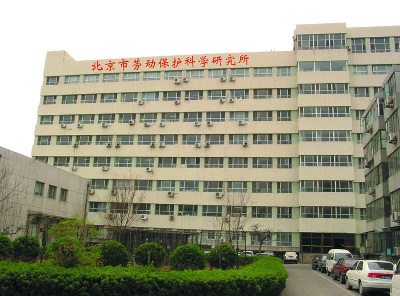
Beijing Municipal Institute of Labour Protection
No. 55 Taoranting Road, Beijing, 100054
The SafeChina project (http://www.safechina.risk-technologies.com) approaches its planned end in February 2013. The project main aim has been to build a sustainable education service in China offering the engineers and relevant professions the possibility to learn about the EU safety practices and regulation, and qualify as Environmental- and Safety engineers according to EU criteria, guidelines and practice. The project has been financed by DEG - Deutsche Investitions- und Entwicklungsgesellschaft mbH (German Investment and Development Agency) and realized by Steinbeis University Berlin (SHB) represented by Steinbeis Transfer Institute Advanced Risk Technologies and Beijing Municipal Institute of Labor Protection BMILP (www.bmilp.com), as the main strategic partner of Steinbeis in China.
The SafeChina project has created:
a) a curriculum of courses in Risk Engineering and Management adapted to the needs of Chinese beneficiaries,
b) a pattern for on-the-job training in EU/Germany and
c) a certifications scheme for Chinese professionals.
So far, the project has already achieved most of its goals, so far namely:
- performed a large-scale survey of Chinese needs in the area of industrial safety
- signed cooperation agreements with 17 Chinese partners
- signed cooperation agreements with INERIS, France and DEKRA, Germany
- prepared the curriculum of 12 full courses, fully translated in Chinese
- organized 14 instances of the above courses, attended by almost 500 participants
- certified over 400 professionals (passed various levels of exams)
- had already 14 short and 3 long on-the-job-trainings for Chinese professionals in Germany
- qualified 18 Chinese trainers in the framework of the train-the-trainer measures
- incorporated courses from the project in the curricula of one of the Chinese top-class universities, CUEB
- negotiates incorporation of the courses into one of the Chinese top universities, Tsinghua
- negotiates incorporation of the courses into the professional education in Chinese companies (Sinopec, Ping An, etc.)
- prepares an independent German-Chinese joint venture ("Steinbeis Advanced Risk Technologies Beijing") which will continue project activities after the official DEG-project end, i.e. after February 2013.
The project activities performed so far have been evaluated as "excellent" or "very good" by approx. 90% of all the Chinese stakeholders/participants in the project.
The event of January 12, 2013 was the occasion to award certificates to the Chinese professionals who have earned them as Risk Examiners and Risk Assessors, as well as Chinese trainers for the Safe-China courses (certified in the train-the-trainer program).
Draft Agenda
|
9:00 – 9:40
|
Welcome
|
|
9:00 – 9:20
|
Brief introduction of the speakers attending the ceremony and welcome address (Prof. Zhang Bin, General director of BMILP)
|
|
9:20 – 9:30
|
Welcome DEG officer (Ms. Veth [ytbc])
|
|
9:30 – 9:40
|
Welcome Steinbeis (Prof. Johann Löhn, President of Steinbeis University Berlin and former Government Commissioner for Technology Transfer in the State of Baden-Württemberg / Prof. Aleksandar Jovanovic, SafeChina Project Coordinator)
|
|
9:40 – 11:00
|
Presentations / Guest and keynote speeches
|
|
9:40 – 10:00
|
Presentation of the SafeChina project and its results / Presentation of the joint venture “Steinbeis Advanced Risk Technologies Beijing” (A. Jovanovic)
|
|
10:00 – 10:15
|
Keynote speech (Officer of Beijing Administration of Work Safety)
|
|
10:15 – 10:30
|
Keynote speech (Officer of State Administration of Foreign Experts Affairs)
|
|
10:30 – 11:00
|
Guest speech: Globalized Innovation and the Role of BRIC Countries (Prof. Manuel Heitor, former Secretary of State for Science, Technology and Higher Education in the Government of Portugal)
|
|
11:00 – 11:15
|
Short break
|
|
11:15 – 12:30
|
Guest and keynote speeches
|
|
11:15 – 11:30
|
Keynote speech (Officer from one department of State of Administration of Work Safety)
|
|
11:30 – 11:45
|
Keynote speech (Officer from another department of State of Administration of Work Safety)
|
|
11:45 – 12:15
|
Guest speech: Global education for global risks (Prof. Ortwin Renn, Member of the German Federal Government Ethics Committee on Energy Future)
|
|
12:15 – 12:30
|
Keynote speech (Mr. Ding Hui, President of Beijing Academy of Science and Technology)
|
|
12:35 – 13:00
|
Awarding the certificates
|
|
|
In two tracks (A-M and N-Z, handed out by Prof. Ding Hui, Prof. A. Jovanovic, DEG officer and Mrs. M. V. Florin [IRGC])
|
|
13:00
|
Closing announcement (Prof. Zhang Bin)
|
NOTES:
1. The event will be take place in conjunction with the IRGC International Conference in Beijing, on the topic of “From crisis management to risk governance” on 9-11 January 2013.
2. Possibility of establishing a cross-link to the EU project 2011/S 112-183587 will be explored.
About the hosting institution:
The Beijing Municipal Institute of Labor Protection was established in 1956 and is one of the first research institutes in China to carry out scientific research on security and environment. The institute has built many research institutes of professional techniques and test centers in the following three fields: urban security hygiene, work safety and labor protection and human living environment, which have laid solid foundation for a basic, applied and foresighted research. In the latest 50 years, it has achieved more than 500 scientific and technological results and won more than 200 awards for scientific and technological achievements and progress. It has stipulated more than 100 standards in labor protection and environment protection.
|
|
|
|
|
|
04 Dec
2012 |
5 Years of Steinbeis Advanced Risk Technologies GmbH |
 |
Prof. Dr. Michael Auer, Chairman of the Steinbeis Foundation, and Mr. Manfred Mattulat, Member of the executive board of Steinbeis Foundation, have congratulated the executives of the Steinbeis Advanced Risk Technologies GmbH on the fifth anniversary.
|
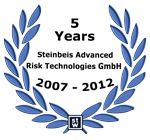
|
Prof. Dr. Michael Auer and Mr. Manfred Mattulat pointed out the
importance of the R-Tech activities and appreciated the previous
engagement and look forward to the future cooperation: "With your
Steinbeis Unit you contribute to the implementation of the Steinbeis
thoughts: current research results, scientific findings and professional
expertise in all fields of technology and management are made
accessible to the economy in a practical way."
|
|
|
|
|
|
|
25 Nov
2012 |
Certification activities in China |
 |
Certification tracks and the SafeChina train-the-trainer exams were organized on November 15-24, 2012 in Beijing.

Certification for Risk Examiners and for Senior Risk Assessor both on the tracks Plant/Asset/Equipment and HSSE, as well as train-the-trainer oral exams have been organized between November 15 and 24, 2012 in the Beijing Municipal Institute of Labour Protection.
|
The certification process, per candidate, went as the following:
- Presentation of a project done relevant for the title Risk Examiner/Risk Assessor (the candidate has to prepare a presentation in MS Power Point, 15 minutes/candidate)
- Discussion about the project presented (15 minutes/candidate)
- Conclusion related to the presented work
In addition to the certification, oral exams were organized for the candidates who have passed the written exams in order to become a SafeChina trainer. The oral part of the train-the-trainer exam consisted of:
- Presentation of a selected part of the training material for the SafeChina course (the candidate has to prepare a presentation in MS Power Point, 15 minutes/candidate)
- Questions and answers related to the course topics (15 minutes/candidate)
- Conclusion related to the presented work
|
|
|
|
|
|
12 Nov
2012 |
SHB/SafeChina course 'Emerging Risks' concluded in Beijing |
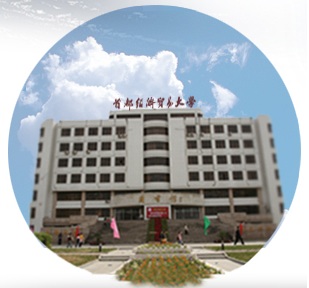 |
The Steinbeis University Berlin/SafeChina course Emerging Risks was held on November 10 - 11, 2012 in Beijing.
The course IV-R17 EmRISK: Emerging Risks has been taken place on November 10 - 11, 2012 at the Capital University of Economics and Business in Beijing.
The main objective of the course was to introduce the concept of "emerging risks" and explain to the students the issues of early recognition, classification and monitoring of emerging risks. In addition, the course presented frameworks, procedure and factors of emerging risks. 
Emerging Risks was dedicated to professionals and students in the field of risk engineering and management. The structure of the course units and tutoring style allowed to understand and adopt the main topics even to beginners in this field.
The participants of the course have particularly benefited from the lecturing done by Prof. Aleksandar Jovanovic from STI Advanced Risk Technologies/EU-VRi, who is leader of some of the most important research and development projects in the EU dedicated to emerging risks (e.g. iNTeg-Risk).
For further information, see the announcement of the course. |
|
|
|
|
|
07 Nov
2012 |
STOA Workshop on E2R2 Initiative gained very positive support from the industry, academia and public sector |
 |
EU-VRi (www.eu-vri.eu) and iNTeg-Risk Consortium (www.integrisk.eu-vri.eu) prepared this workshop together with Science and Technology Option Assessment Committee of the European Parliament (STOA, http://europarl.europa.eu/stoa). Read more about the results of this workshop by clicking here to access the summary report!
|
STOA Workshop on E2R2
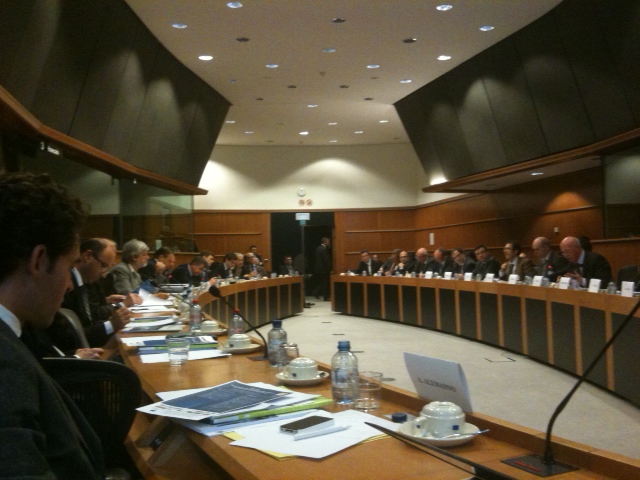
Click on the image to view enlarged version
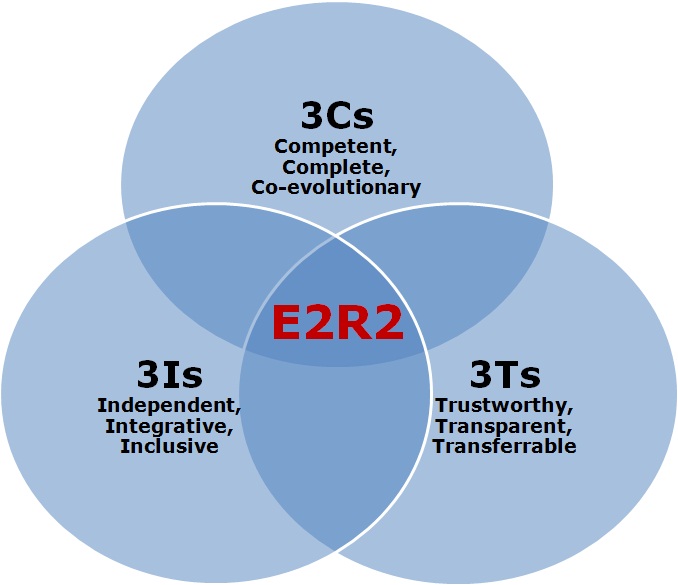
Click on the image to view enlarged version
|
|
Results of STOA Workshop*
|
The STOA workshop on European Emerging Risk Radar (E2R2) Initiative, which took place on November 6, 2012 at the European Parliament in Brussels, successfully concluded with very positive support from the industry, academia and public sector. EU-VRi (www.eu-vri.eu) and the iNTeg-Risk Consortium (www.integrisk.eu-vri.eu) prepared this workshop together with Science and Technology Option Assessment Committee of the European Parliament (STOA, http://europarl.europa.eu/stoa) as an important follow-up to ensure the sustainability of the iNTeg-Risk results. Below are some of the key results from this workshop:
- Notable representatives from the industry, academia and public sector (see short profiles of the speakers and panelists) each presented and/or shared their perspectives regarding their support for the E2R2 Initiative. In summary,
- the Industry is in favor of E2R2 because the initiative could serve as a European reference source for emerging risk information and this will be of huge benefit for the EU industry as well as enhance its competitiveness;
- the Academia is in favor of E2R2 because, in view of the challenges for risk management in a fragmented environment with respect to European risk activities, the initiative poses as a strategic global advantage as well as a way to increase credibility and popularity for Europe; and
- the Public sector is in favor of E2R2 because the initiative promotes efficient use of available resources, enlarge the scope as well as increase the quality of results for governments, in particular, those which are already carrying out similar activities.
- Inspiring discussions across the various sectors during this workshop can be considered as an endorsement of the E2R2 Initiative and that all comments received at this workshop pertaining to this initiative will certainly be taken into account for future developments.
- Drawing from all important suggestions on the E2R2 Initiative made during the presentations and discussions of this workshop, the following “3Cs, 3Ts, 3Is” approach was proposed whereby E2R2 should be:
- Competent, Complete and Co-evolutionary;
- Trustworthy, Transparent and Transferrable; and
- Independent, Integrative and Inclusive.
In view of the above, E2R2 could thus serve very well as a decision aid tool.
* Full summary report comprising results of this workshop can be downloaded on the STOA website at: http://europarl.europa.eu/stoa/cms/home/events/workshops/integ.
|
|
|
|
|
|
|
|
31 Aug
2012 |
Register for ENISFER & reap the benefits of this network! |
 |
ENISFER is the European Network of Industrial Systems and Facilities for Exploration of Emerging Risks within the EU-VRi organization and tools. This network is in operation since the beginning of 2012, with large industrial companies and renown research organizations among its elite pool of partners. Hence, you are cordially invited to register yourself as an individual (Risk Expert) and/or your Organization/Company and/or Department/Facility and/or other entities. Click here to register for ENISFER now!
|
EU-VRI ENISFER
|
ENISFER is the European Network of Industrial Systems and Facilities for Exploration of Emerging Risks within the EU-VRi organization and tools.
The aim of ENISFER is to have a network of relevant and representative organizations/companies, departments/facilities or persons to continuously innovate and improve management of emerging risks. Therefore, this network will have a structuring effect for all the stakeholders concerned by technology related emerging risks at a regional, national, European or international scale (read more about ENISFER).
In view of the above, you are thus cordially invited to register:
- yourself as an individual (Risk Expert); and/or
- your Organization/Company; and/or
- your Department/Facility; and/or
- other entities.
Follow this link for ENISFER registration*: http://www.eu-vri.eu/fwlink/?LinkID=381
By means of this online registration, all (prospective) ENISFER partners will make available their contact and information to others who are looking for solutions to specific issues related to (emerging) risks. Furthermore, the benefits for joining this network are the ease of:
- finding experts in various areas of (emerging) risk management and engineering;
- finding companies/organizations and their research facilities relevant for your work;
- contacting other ENISFER partners for partnership opportunities.
* Please note that registration to ENISFER is not a membership and at this stage there are no obligations and/or financial contribution foreseen. In addition, the main benefits at this stage are as described above.
|
|
|
|
|
|
|
30 Jul
2012 |
Course on LCA |
 |
The course on Life Cycle Analysis and Assessment was successfully concluded in Stuttgart, Germany.
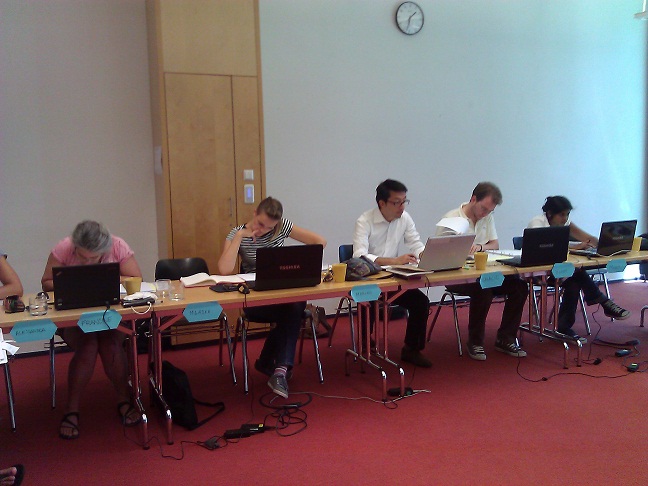
The course was open both for students of the universities participating in the project and for the external participants.
In the course the participants gained a comprehensive overview of the Life Cycle Assessment (LCA), Life Cycle Costing (LCC), International Reference Life Cycle Data System (ILCD) and European Reference Life Cycle Data System (ELCD).
The course is part of the European Master and Certification Program in Risk Engineering and Management, therefore as such, it enabled the participants to earn European ECTS credit points (see http://ec.europa.eu/education/lifelong-learning-policy/ects_en.htm).
|
Read more about the course! |
|
|
|
|
|
17 Jul
2012 |
iNTeg-Risk was presented at World Congress on Risk in Sydney |
 |
The European project iNTeg-Risk was presented at World Congress on Risk (WCR) in Sydney, Australia organized by Society for Risk Analysis (SRA).
|

at
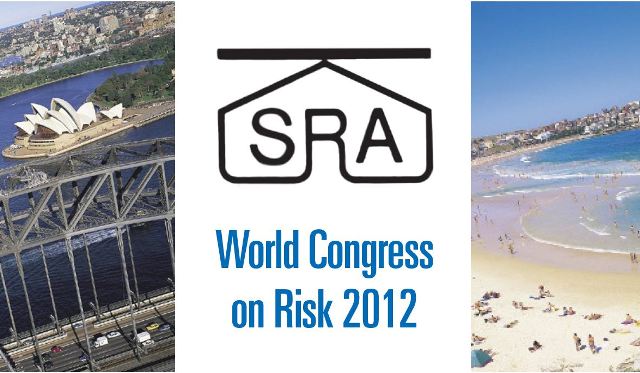
|
The coordinator of iNTeg-Risk project, Aleksandar (Sasa) Jovanovic, gave a presentation on iNTeg-Risk project at WCR in Sydney Australia. The presentation informed participants from all over the world about the main results achieved thus far before the project ends in May 2013. Furthermore, the presentation addresses follow-up initiatives, in particular, the "European Emerging Risk Radar (E2R2)" (click here for more information about E2R2).
Details of the SRA event:
World Congress on Risk (WCR)
Sydney Convention and Exhibition Centre
Sydney, Australia
July 18-20, 2012
The overall theme of the WCR 2012 was Risk and Development in a Changing World, and the three daily sub-themes were:
1. Disasters and Resilience;
2. Global and Emerging Risks; and
3. Risk and Sustainable Development.
Alternatively, visit the SRA WCR webpage at http://sra.org/worldcongress2012 for more information.
|
|
|
|
|
|
|
23 May
2012 |
OECD Workshop on Natech Risk Management, May 23-25, 2012 in Dresden (Germany) |
|
|
|
|
|
|
07 May
2012 |
Second event of Introduction to Risk Management |
 |
The second instance of the iNTeg-Risk course Introduction to Risk Management took place at the Stuttgart Institute of Management and Technology.
|
The course is part of the series of courses which all belong to joint effort of iNTeg-Risk project (represented by EU-VRi and other partners), University of Stuttgart (ZIRN) and Steinbeis University Berlin (STI Advanced Risk Technologies) to set a modern, modular and distributed model of education and certification in the area of Risk Engineering and Management with particular emphasis on the issue of emerging risks, in particular those related to new technologies.
The event took place on May 2-5, 2012 at the Stuttgart Institute of Management and Technology (SIMT). This specialist course was organized in conjunction with the 4th iNTeg-Risk Conference 2012.
Participants of the course had opportunity to extend their knowledge in the area of industrial safety, starting with different aspects of risks and terminology used in the field, with special focus on major accident prevention and related process safety risk assessment methodology. The participants came from different countries (Spain, Serbia, Germany, China, France, etc.) possessing different profiles (PhD, MSc and BSc students, professionals), thus allowing them to enjoy and profit from a real international environment during the course.
|
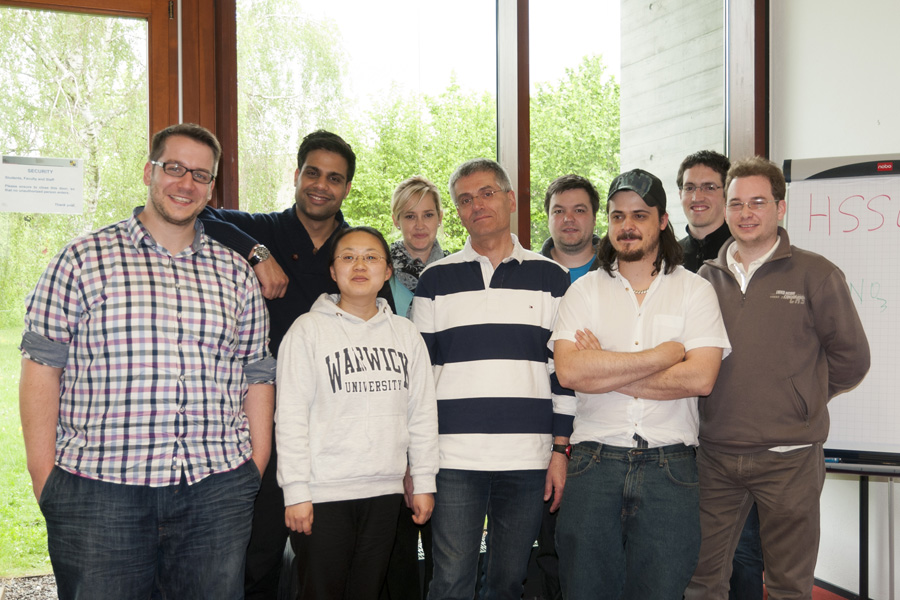
|
|
|
|
|
|
|
25 Apr
2012 |
IATA made positive comments on EU-VRi's economic modeling in the Alfa-Bird project |
 |
Following a successful meeting held on April 3, 2012 in Geneva, important observations and positive comments were received from the International Air Transport Association (IATA) regarding EU-VRi's economic modeling developed within the ALFA-BIRD project.
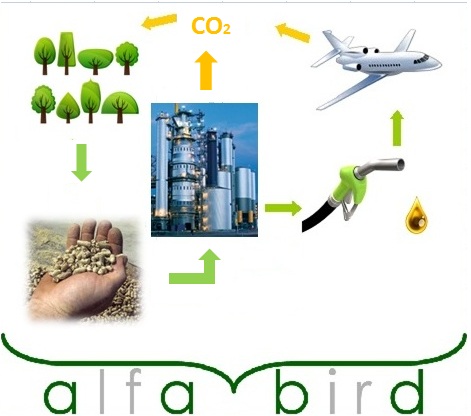
|
The EU-VRi team presented its economic model for the implementation of alternative fuel in the aviation sector to the International Air Transport Association (IATA) at a meeting held on April 3, 2012 in Geneva. Positive comments made by IATA during the presentation support the work developed and encourage further extension of the economic modeling within the ALFA-BIRD project.
“This model is flexible enough to include modules describing the behavior of relevant stakeholders. The team has the skills needed to create realistic models of relevant human behavior. The model development is still in progress and would need the inclusion of further modules, mainly for the description of other production pathways as well as different variants of incentivizing policy instruments. Also the inclusion of exogenous factors such as the influence of other industry sectors competing for resources would be needed. The current stage of development appears appropriate for a decision on such model enhancements, and IATA is happy to support this process further and also to provide relevant data.”
Thomas Rötger, Brian Pearce and Julie Perovic - IATA |
|
|
|
|
|
|
02 Apr
2012 |
RBI-PETRO was successfully concluded in Rotterdam |
 |
Risk Based Inspection - Petro was part of a course series organized through the joint effort of iNTeg-Risk project, University of Stuttgart and STI Advanced Risk Technologies.
 |
|
The iNTeg-Risk Course II-R4a "RBI-PETRO: Risk Based Inspection - Petro", which is part of the announced series of SHB/iNTeg-Risk courses, took place on March 27-30, 2012 in Rotterdam, the Netherlands.
During the 4-day course, 12 participants from Germany, Romania, China, Italy, Slovakia, the United Kingdom and Serbia had opportunity to learn more about Risk-Based Inspection (RBI) in general, its application in industry using different tools as well as to understand RBI technologies, procedures, and working processes in compliance with the main reference documents.
This series of courses is proudly organized through the joint effort of iNTeg-Risk project, University of Stuttgart (ZIRN) and Steinbeis University Berlin (STI Advanced Risk Technologies) to set a modern, modular and distributed model of education and certification in the area of Risk Engineering and Management with particular emphasis on the issue of emerging risks, especially those related to new technologies.
Furthermore, the course is a part of the European Master and Certification Program in Risk Engineering and Management.
|
|
|
|
|
|
|
23 Feb
2012 |
ESF-STOA Conference 'The Science of Innovation' was held on February 28, 2012 at the European Parliament, Brussels |
 |
The European Science Foundation (ESF) and the Science and Technology Options Assessment (STOA) office jointly organised a conference on 'The Science of Innovation', whereby it contributed to the debate on EU innovation policy at a crucial time by presenting a range of thought-provoking insights.
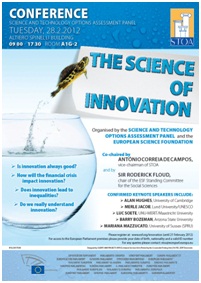 |
|
The Science of Innovation is an important, growing field of research and this ESF-STOA joint conference presented state-of-the-art insights from the cutting edge of 'the science of innovation' on crucial issues for today's policy makers.
Among other questions addressed were: Is innovation always good? How will the financial crisis impact innovation? Does innovation lead to inequalities? Do we really understand innovation?
Keynote speakers included:
- Alan Hughes, Professor of Enterprise Studies at the University of Cambridge, and Director of the Centre for Business Research (CBR)
- Merle Jacob, Professor in Research Policy at Lund University and UNESCO Chair in Research Management and Innovation Systems
- Luc Soete, Director of UNU-MERIT and Professor of International Economic Relations at Maastricht University
- Barry Bozeman, Professor of Public Policy at Arizona State University, Consortium for Science Policy and Outcomes
- Mariana Mazzucato, R.M. Phillips Professor of Science and Technology at the University of Sussex (SPRU)
For more information on the conference including brochure, programme, etc., click here.
|
|
|
|
|
|
|
16 Jan
2012 |
iNTeg-Risk in INERIS "Rapport Scientifique 2010/2011" |
 |
INERIS scientific report devoted attention to the results of iNTeg-Risk project. See more details in INERIS "Rapport Scientifique 2010/2011".
|
|
|
|
|
|
14 Jan
2012 |
Media coverage on World Economic Forum's "Global Risks Report 2012" |
 |
The World Economic Forum's (WEF) "Global Risks Report 2012" which was presented by the Wharton Risk Center, an academic partner of the WEF since 2005, has garnered significant media coverage. Click here to watch the video (WEF).
In the video which is produced by WEF, Erwann Michel-Kerjan, Managing Director of the Wharton Risk Center, examines the main findings of the Global Risks 2012 report and discusses its relevance to the private and public sectors. Click here to watch this video.
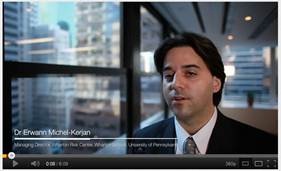
Other relevant media coverage can be accessed below:
- Pfanner, E. (January 11, 2012) Economic Troubles Cited As the Top Risks in 2012. The New York Times.
- Video: Howard Kunreuther, Co-Director of the Wharton Risk Center, addresses globalization and the results of interconnectedness in this interview for CBC Toronto. Click here to watch this video.

- Handley, M. (January 17, 2012) Top 5 Global Risks for 2012. U.S. News and World Reports.
- Video: Erwann Michel-Kerjan discusses some of the report’s findings with Erik Schatzker in Bloomberg Television's "Inside Track" on January 20, 2012. Click here to watch this video.
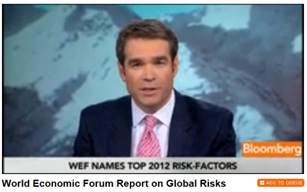
- Lu, K., & Michel-Kerjan, E. (January 21, 2012) Is Income Disparity Slowly Fueling the Next Global Crisis?. The Wall Street Journal (Asia).
|
|
|
|
|
|
14 Jan
2012 |
Global Risks Report 2012 - Wharton partnership with the World Economic Forum |
 |
The Wharton Risk Center, an academic partner of the World Economic Forum (WEF) since 2005, is pleased to present the WEF’s Global Risks Report 2012, Seventh Edition. Click here to download this report.
|
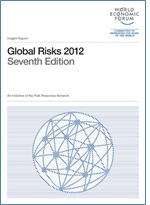
|
The WEF’s Global Risks Report 2012 has identified chronic fiscal imbalances and severe income disparity as the most prevalent risks over the next 10 years. These risks in tandem threaten global growth as they are drivers of nationalism, populism and protectionism at a time when the world remains vulnerable to systemic financial shocks, as well as possible food and water crises. These are the findings of a survey of 469 experts and industry leaders, indicating a shift of concern from environmental risks to socioeconomic risks, compared to a year ago.
Read more about the Global Risks Report here.
* For nearly three decades, the Wharton Risk Center has been at the forefront of basic and applied research in promoting effective corporate and public policies for low-probability events with potentially catastrophic consequences. Listed below are some of the media coverage on the Risk Center's research:
|
|
|
|
|
|
|
30 Dec
2011 |
Risk - we care! - New brochure of EU-VRi and Steinbeis Advanced Risk Technologies |
 |
EU-VRi and Steinbeis Advanced Risk Technologies have published a new brochure "Risk - we care®!" containing interesting information, events and projects about the past 10 years of R-Tech and the past 5 years of EU-VRi.
Link for download
 |
EU-VRi and Steinbeis Advanced Risk Technologies have published a new brochure "Risk - we care®!" containing interesting information, events and projects about the past 10 years of R-Tech and the past 5 years of EU-VRi.
For downloading the brochure please use the following link: http://www.eu-vri.eu/filehandler.ashx?file=9243
|
|
|
|
|
|
|
21 Dec
2011 |
CFS Audit closed |
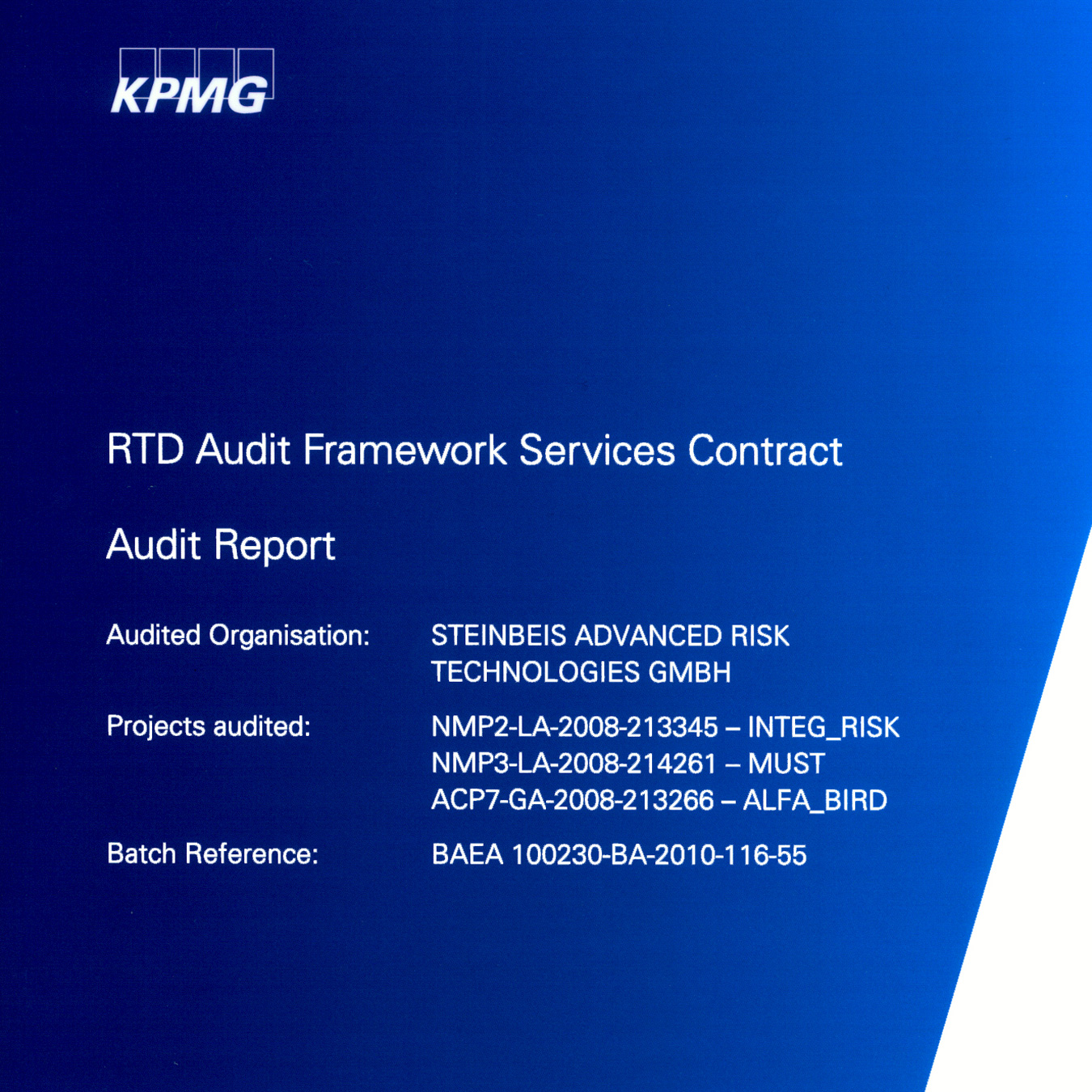 |
Audit reports for projects:
* iNTeg-Risk - Early Recognition, Monitoring and Integrated Management of Emerging, New Technology related Risks)
* MUST - MULTI-LEVEL PROTECTION OF MATERIALS FOR VEHICLES BY “SMART” NANOCONTAINERS
* Alfa-Bird - Alternative Fuels and Biofuels for Aircraft Development
formally accepted and approved by the European Commission (with less than 0.05 % adjustment needed!).

|
Audit reports for projects
- iNTeg-Risk - Early Recognition, Monitoring and Integrated Management of Emerging, New Technology related Risks)
- MUST - MULTI-LEVEL PROTECTION OF MATERIALS FOR VEHICLES BY “SMART” NANOCONTAINERS
- Alfa-Bird - Alternative Fuels and Biofuels for Aircraft Development
formally accepted and approved by the European Commission (with less than 0.05 % adjustment needed!) |
|
|
|
|
|
|
17 Dec
2011 |
The course Introduction to Risk Management took place in Stuttgart |
 |
The course opened a series of courses to set a modern, modular and distributed model of education and certification in the area of Risk Engineering and Management.
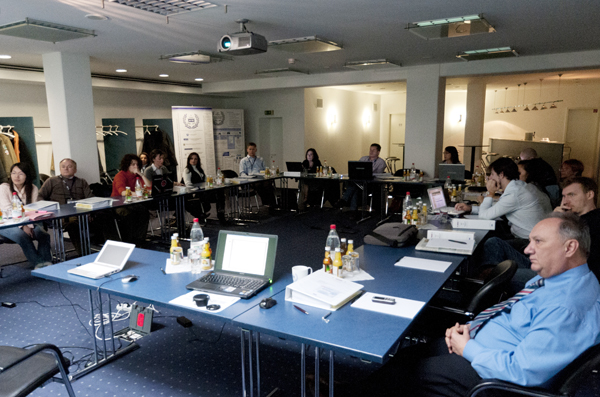 |
|
The course Introduction to Risk Management has taken place between December 12 and 16, 2011 in Stuttgart. It opened a series of courses which all belong to joint effort of iNTeg-Risk project (represented by EU-VRi and other partners), University of Stuttgart (ZIRN) and Steinbeis University Berlin (STI Advanced Risk Technologies) to set a modern, modular and distributed model of education and certification in the area of Risk Engineering and Management with particular emphasis on the issue of emerging risks, in particular those related to new technologies.
The course is also a part of SHB's European Master and Certification Program in Risk Engineering and Management.
During five days of the course, 20 participants from Germany, Italy, France, Greece, Serbia and United Arab Emirates had opportunity to learn and extended their knowledge on the main topics of risks related to the general use of the chemicals by a modern society and related industrial sectors (hazards, related risks, and due legislative safety measures considering accidental and chronic risks within life cycle of hazardous materials, major accidents prevention and
related process safety risk assessment methodology).
|
|
|
|
|
|
|
13 Dec
2011 |
Bayer Technology Services GmbH has certified iRiS-Petro System |
 |
Bayer Technology Services GmbH has certified to Steinbeis Advanced Risk Technologies (group) that in the scope of activities: RBI (Risk-Based Inspection), RCM (Reliability Centered Maintenance), RCFA (Root-Cause Failure Analysis) and HSE (Health Safety, Environment) as well as the relevant consulting, professional services, training and education, the iRiS-Petro System meets all requirements of: CWA 15740:2008 and API-RP 580/581 (RBI).

|
Bayer Technology Services GmbH has certified to Steinbeis Advanced Risk Technologies (group) that in the scope of activities: RBI (Risk-Based Inspection), RCM (Reliability Centered Maintenance), RCFA (Root-Cause Failure Analysis) and HSE (Health Safety, Environment) as well as the relevant consulting, professional services, training and education, the iRiS-Petro System meets all requirements of: CWA 15740:2008 and API-RP 580/581 (RBI). |
|
|
|
|
|
|
30 Nov
2011 |
Involvement of the EU-VRi/iNTeg-Risk partners into the first global survey of ISO 31000–Risk Management Principle and Guidelines |
 |
Following the approved liaison between ISO 31000 and EU-VRi/iNTeg-Risk (see news entry), a discussion between the iNTeg-Risk Project Coordinator and the CEO of EU-VRi, A. Jovanovic, and the Moderator of the LinkedIn ISO 31000 Risk Management Standard Group, A. Dali, took place. One of the main results, so far, would be the involvement of the EU-VRi/iNTeg-Risk partners into the first global survey of ISO 31000–Risk Management Principle and Guidelines set to kick off on the 17th of October this year.
Following the approved liaison between ISO 31000 and EU-VRi/iNTeg-Risk (see news entry), a discussion between the iNTeg-Risk Project Coordinator and the CEO of EU-VRi, A. Jovanovic, and the Moderator of the LinkedIn ISO 31000 Risk Management Standard Group, A. Dali, took place.
One of the main results, so far, would be the involvement of the EU-VRi/iNTeg-Risk partners into the first global survey of ISO 31000–Risk Management Principle and Guidelines set to kick off on the 17th of October this year. The aim of the survey is to gauge how ISO 31000 is perceived by risk practitioners across all sectors and to provide input for the preparation of the ISO 31004 guide, due out in 2013.
Members of more than 70 risk management associations around the world are invited to participate in the study which is being run through an initiative by the LinkedIn discussion group on ISO 31000. Issued in November 2009, ISO 31000 provides principles and generic guidelines on risk management. It can be used by any public, private or community enterprise, association, group or individual and is not specific to any industry or sector. "This is the first time the global risk management community active across all fields, sectors, industries and services is being invited to participate in an international survey on ISO 31000. It is a great opportunity to share your thoughts and concerns about the ISO standard on risk management" said Alex Dali.
The survey will run from
Oct. 17, 2011 to Nov. 30, 2011. (extended deadline)
You will be encouraged to participate through EU-VRi/iNTeg-Risk sites or the LinkedIn group. You can join the discussion forum preparing the survey at: http://www.linkedin.com/groups?mostPopular=&gid=1834592.
We encourage your participation and will gladly support it. |
|
|
|
|
|
27 Nov
2011 |
Interim report on SafeChina project accepted |
 |
(excerpt from the e-mail of the project officer)
Dear R-Tech PPP-China-Project-Team,
(...)
The interim report is excellent. It is very well structured, contains all necessary information and nicely sum up all relevant activities / findings or the project up to today.
|
(excerpt from the e-mail of the project officer)
Dear R-Tech PPP-China-Project-Team,
(...) The interim report is excellent. It is very well structured, contains all necessary information and nicely sum up all relevant activities / findings or the project up to today. (...)
For me, the interim report shows that the project now is on a very good way and it looks like you are on a good way to surpass the overall number of participants. It is very good to see that we have already 138 participants successfully passing a final examination. (...)
In any case, i can already confirm the acceptance of the interim report which also contains all necessary documentation to "approve" the achievement of the relevant indicators. Supplemented by the excellent data bases in the internet the project process is perfectly documented. (...)
Thank you very much for the really good work! (...)
Best regards from Cologne
Volker Schwab,
DEG - Special Programs - Cologne
|
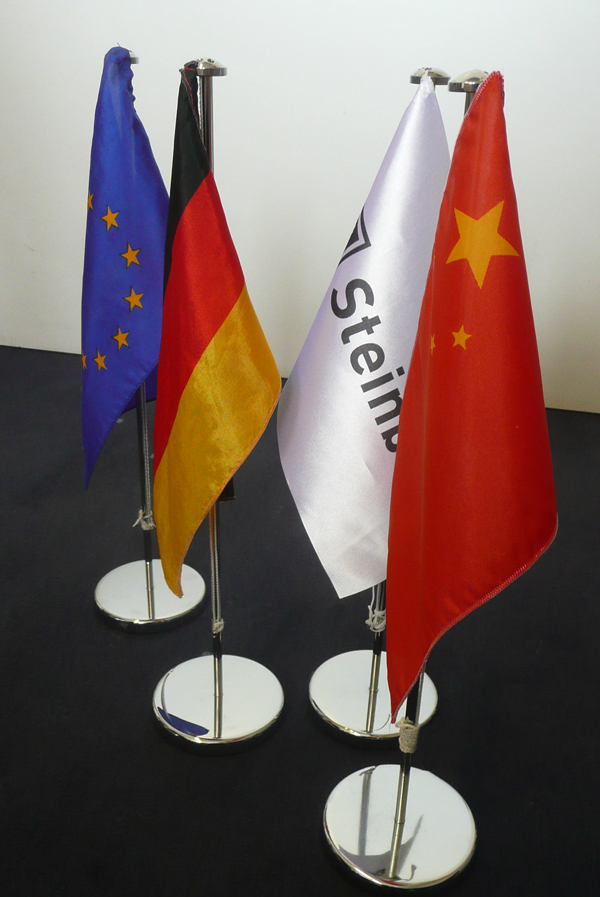
|
|
|
|
|
|
|
18 Oct
2011 |
EUROPEAN COMMISSION - PRESS RELEASE - What is a nanomaterial? |
 |
What is a nanomaterial? European Commission brings a common definition of a nanomaterial, the definition will be now applied in all EU-VRi/R-tech projects dealing with nanotechnology (iNTeg-Risk, MUST, PARTICOAT, Nanodevice…)
 |
EUROPEAN COMMISSION - PRESS RELEASE
What is a "nanomaterial"? European Commission breaks new ground with a common definition
Brussels, 18 October 2011 – "Nanomaterials" are materials whose main constituents have a dimension of between 1 and 100 billionth of a metre, according to a recommendation adopted by the European Commission today. The announcement marks an important step towards greater protection for citizens, clearly defining which materials need special treatment in specific legislation.
European Environment Commissioner Janez Potočnik said: "I am happy to say that the EU is the first to come forward with a cross-cutting designation of nanomaterials to be used for all regulatory purposes. We have come up with a solid definition based on scientific input and a broad consultation. Industry needs a clear coherent regulatory framework in this important economic sector, and consumers deserve accurate information about these substances. It is an important step towards addressing any possible risks for the environment and human health, while ensuring that this new technology can live up to its potential."
Nanomaterials are already being used in hundreds of applications and consumer products ranging from toothpaste to batteries, paints and clothing. Developing these innovative substances is an important driver for European competitiveness, and they have significant potential for progress in areas like medicine, environmental protection and energy efficiency. But as uncertainties remain about the risks they pose, a clear definition is needed to ensure that the appropriate chemical safety rules apply. The definition will help all stakeholders including industry associations, as it brings coherence to the variety of definitions that are currently in use in different sectors. The definition will be reviewed in 2014 in the light of technical and scientific progress.
The recommendation also delivers on a commitment made in 2009 to the European Parliament to issue a single definition that is broadly applicable to all EU legislation concerned by nanomaterials.
The definition adopted today is based on an approach considering the size of the constituent particles of a material, rather than hazard or risk. The wording describes a nanomaterial as "a natural, incidental or manufactured material containing particles, in an unbound state or as an aggregate or as an agglomerate and where, for 50% or more of the particles in the number size distribution, one or more external dimensions is in the size range 1 nm – 100 nm."
The definition is based on scientific advice from the Scientific Committee on Emerging and Newly Identified Health Risks (SCENIHR) and the Joint Research Centre (JRC). A draft version of the definition was subject to a public consultation.
Background
Nanomaterials are currently governed by a variety of legislative instruments at EU and national level. However, definitions have been developed on a case-by-case basis and vary across sectors, creating unnecessary burdens for industry and hampering public debate about risks and benefits of these substances. This recommendation gives EU legislators a legal reference for nanomaterials, when adopting new or implementing existing legislation.
The experience of the first registration deadline (30 November 2010) under REACH, the EU's overarching chemicals policy, showed that companies needed more clarity about their obligations with regard to nanomaterials. REACH has a key role to play in generating information about the properties of nanomaterials as chemical substances. With the adopted definition it will be easier for companies to assess their registration dossiers and determine exactly when they should consider their products as nanomaterials.
Further information:
http://ec.europa.eu/environment/chemicals/nanotech/index.htm
MEMO/11/704
|
|
|
|
|
|
|
23 Sep
2011 |
ISO confirmed the liaison between ISO/PC 262 and EU-VRi |
 |
We are proud to inform that the International Organization for Standardization (ISO) has officially confirmed the liaison between ISO/PC 262 (Project Committee: Risk Management) and EU-VRi.
TC 262 - Project committee: Risk management
|
The International Organization for Standardization (ISO) has officially confirmed the liaison between ISO/PC 262 (Project Committee: Risk Management) and EU-VRi. The ISO/PC 262 members, comprising 31 participating countries and 6 observing countries, have kindly accepted the liaison application of EU-VRi.
EU-VRi and its members are looking forward to a fruitful collaboration and exchange on standardization activities in the field of ISO 31000 family of standards, and ISO 31004 in particular.
Find out more about ISO/PC 262 by following this link. |
|
|
|
|
|
|
01 Sep
2011 |
New CEN Workshop announced at CEN websites |
 |
The CEN workshop "General Framework and Guidelines for Early Recognition, Monitoring and Integrated Management of Emerging New Technology Related Risks (iNTeg-Risk)" (WS 67) has been announced on CEN websites (see CEN website here).
 |
We are pleased to inform you that the CEN workshop "General Framework and Guidelines for Early Recognition, Monitoring and Integrated Management of Emerging New Technology Related Risks (iNTeg-Risk)" (WS 67) has been announced on CEN websites (see CEN website here).
We would like to thank all persons involved in WP4.9, which is dedicated to the development of CWAs in iNTeg-Risk project, for their valuable contributions and we are looking forward to creating interesting and useful pre-standadization documents under the umbrella of this workshop by taking into account the results of iNTeg-Risk project.
The draft Business plan
The draft Business Plan for the new CEN Workshop is available via the link above.
Kick-Off Meeting
The Kick-Off Meeting of the workshop will take place in Brussels on Friday, 4 November 2011 at CEN-CENELEC Meeting Centre, Avenue Marnix 17, 1000 Brussels (see Project Calendar).
Secretariat
DIN has volunteered to provide the secretariat.
Chairmanship
A Chairman and two Vice-Chairmen have been nominated for the Workshop (CVs are as well available on CEN website). Their appointment will be confirmed at the Kick-Off Meeting.
For any question regarding the workshop, do not hesitate to contact integrisk@eu-vri.eu. |
|
|
|
|
|
|
09 Aug
2011 |
Important event at Beijing Normal University |
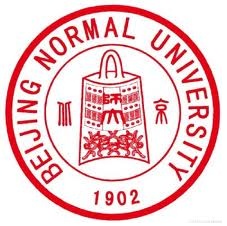 |
Prof. Ortwin Renn, president of the EU-VRi (European Virtual Institute for Integrated Risk Management), participated to an very important event which took place at the Beijing Normal University in the period August 01 - 12, 2011
2011 Summer Institute for Advanced Study of Disaster and Risk,
Disaster, Risk, and Integrated Governance
Prof. Ortwin Renn, president of the EU-VRi (European Virtual Institute for Integrated Risk Management), has participatedto an very important event which took place at the Beijing Normal University in the period August 01 - 12, 2011
2011 Summer Institute for Advanced Study of Disaster and Risk,
Disaster, Risk, and Integrated Governance
(http://www.espre.cn/111/newsview.asp?id=6)
The 2011 Summer Institute is the third of the summer institute series, organized by the State Key Laboratory of Earth Surface Processes and Resource Ecology at Beijing Normal University, the Academy of Disaster Reduction and Emergency Management of the Ministry of Civil Affairs and the Ministry of Education, and the Key Laboratory of Environmental Change and Natural Disaster of the Ministry of Education of China.
|
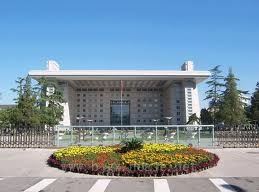
|
The Summer Institute series is implemented in collaboration between the 111 Project/HRSB at Beijing Normal University and the IHDP/IRG-Project. Starting summer 2009, three consecutive summer institutes are to be organized (2009-2011), covering a different thematic focus each year in addition to the essentials in the filed of hazard and risk study. The primary goal is to attract and train young scholars who have both background and strong interest in the field of hazard and risk study, and through which, to improve and strengthen education, research, as well as international communication and cooperation capacity in China in the field of disaster and risk sciences. In the long-term, the summer institutes seek contribution to laying a solid foundation for a state-of-the-art hazard and risk science base in China.
Core faculties Invited
-
David Alexander, University of Florence, Italia
-
Carlo Jaeger, Potsdam Institute for Climate Impact Research, German
-
Roger Kasperson, Clark University, USA
-
Nick Pigeon, Cardiff University, UK
-
Otwin Renn, University of Stuttgart, Germany
-
Peijun Shi, Beijing Normal University, China
|
|
|
|
|
|
20 Jul
2011 |
European Commission launches the call for proposals in the thematic priority NMP of FP7 |
 |
EC has launched the current call for proposals under the 2011 and 2012 Cooperation work programme of Seventh Framework Programme (FP7) for Research, Technological Development and Demonstration Activities (2007 to 2013) and amongst them is the Work Programme 2012 - Theme 4: Nanosciences, Nanotechnologies, Materials and new Production Technologies (NMP). Download the relevant published paper here.
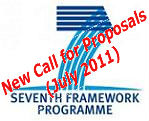 |
With the unveiling of multiple calls for proposals for all FP7 programmes, this new call invites applicants to present their interesting proposals.
All current call publications as well as related information can be found here. |
|
|
|
|
|
|
14 Jul
2011 |
Extensive media coverage on the report of OECD's "Future Global Shocks" (FGS) project |
 |
Extensive coverage in the international press was given to the report of OECD's FGS project which has come to a fruitful conclusion as the organisation presented the project findings on June 27, 2011.
Click here to watch the news broadcast (Reuters).
 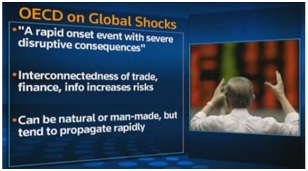
Source: Reuters news broadcast
|
List of FGS media coverage
- Dolan, M., & Pitchford, R. (2011, June 29) Analysis: Serial shocks forcing world to "think long". Thomson Reuters.
- OECD says globalisation increases risks. (2011, June 27) Agence France Presse/ Yahoo! Inc.
- Yang, L. (2011, June 27) OECD predicts more frequent shocks to world economy. Xinhua News Agency.
- Para la OCDE, la economía mundial sufrirá crisis más frecuentes y graves. (2011, June 27) (iEco) Clarín.com.
- Recomienda OCDE anticiparse a mayores efectos de impactos globales. (2011, June 27) Notimex/ SDPnoticias.com.
- Les 5 menaces qui planent sur l’économie mondiale. (2011, June 27) Trends.be.
- L'OCDE pointe les menaces qui planent sur l'économie mondiale. (2011, June 27) LaTribune.fr.
- O'Grady, S. (2011, June 28) World economy set to face more frequent shocks. independent.co.uk.
- Foucart, F. (2011, July 1) L’OCDE met en garde contre les effets d’une éruption solaire sur l’économie. Le Monde.
- Aldrick, P. (2011, June 28) Risk of global 'shocks' has increased, says OECD. Telegraph Media Group Limited.
- Gefahr globaler Schocks wird zunehmen. (2011, June 28) Lëtzebuerger Journal S.A.
- Jackson, G. (2011, June 27) Crises likely to get more frequent, OECD says. Fundweb/ Centaur Media Plc.
- "Le monde va connaître des chocs plus fréquents !", selon l'OCDE. (2011, June 27) Boursier.com.
- Mitchell, R. (2011, June 28) OECD Says Preparation Needed Ahead of Coming Shocks to Global Economy. Daily Report for Executives.
|
|
|
|
|
|
|
14 Jul
2011 |
EU-VRi, together with University of Stuttgart (ZIRN) and Steinbeis R-Tech, made exemplary contribution to the OECD project “Future Global Shocks” (FGS) |
 |
OECD's FGS project came to a fruitful conclusion whereby EU-VRi, together with University of Stuttgart (ZIRN) and Steinbeis R-Tech, contributed notably to the project with their work on one of the selected case studies (Social Unrest). Click to download FGS project report: 1. Executive Summary; or 2. Full report (preliminary version).
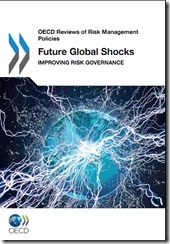 |
|
OECD proudly presented the findings of its two-year "Future Global Shocks" (FGS) project on June 27, 2011.
While discussing a wide range of future shock scenarios, much of the project's focus was set on five highly disruptive future shock events, namely:
- Systemic Financial Risk;
- Pandemics;
- Cyber Risks;
- Geomagnetic Storms; and
- Social Unrest.
Steinbeis will also be publishing the reports of these five case studies. |
|
|
|
|
|
|
21 Jun
2011 |
Horizon 2020 - the Framework Programme for Research and Innovation |
 |
Máire Geoghegan-Quinn, European Commissioner for Research, Innovation and Science, has announced the new name of the future EU funding programme for research and innovation: "Horizon 2020 - the Framework Programme for Research and Innovation", which will enter into force on 1 January 2014, after the end of FP7 on 31 Dec 2013. Click here to read this statement.
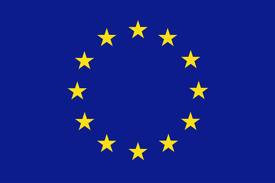 |
|
The new name, "Horizon 2020 - the Framework Programme for Research and Innovation", is an important symbol of a new departure and a new adventure whereby the cutting-edge, integrated funding system will cover all research and innovation funding currently provided through the Framework Programme for Research and Technical Development, the Competitiveness and Innovation Framework Programme (CIP) as well as the European Institute of Innovation and Technology (EIT). With this system, redundant red tape will be eliminated and access to the programs as well as participation will be made easier and simpler.
Moreover, in an effort to further boost excellence as well as ensure that good ideas reach the market and generate sustainable economic growth and new jobs, the different types of the aforementioned funding will be brought together in a coherent and flexible manner so as to support researchers and innovators in Europe. These research and innovation funding will focus clearly on addressing global challenges. |
|
|
|
|
|
|
15 Jun
2011 |
3rd iNTeg-Risk Conference 2011 - Presentations available! |
 |
The 3rd iNTeg-Risk Conference 2011 took place in Stuttgart, Germany on June 6-10, 2011, in conjunction with the SRA-Europe 2011 Annual Meeting. The presentations are available for download. Further information have been sent to all participants via e-mail.
 |
Early Recognition, Monitoring and Integrated Management
of Emerging, New Technology Related, Risks
www.integrisk.eu-vri.eu |
3rd iNTeg-Risk Conference 2011
"Risk vs. Risk: Managing Emerging Risk-Benefit Tradeoffs in Complex Systems"
took place in
Stuttgart, Germany on June 6-10, 2011
in conjunction with
SRA-Europe 2011 Annual Meeting (June 5-8, 2011) www.sraeurope.org,
iNTeg-Risk workshops/courses and iNTeg-Risk ES Seminar

|
Venue:
Haus der Wirtschaft
Willi-Bleicher-Strasse 19
70174 Stuttgart, Germany
http://www.hausderwirtschaft.de
(25 mins by metro to the airport,
10 mins walk to the main railway station) |
The conference was an excellent opportunity for project partners to communicate their results to the “outside world” and an opportunity for interested professionals, not participating in the iNTeg-Risk project, to learn about the project (www.integrisk.eu-vri.eu, budget approx. 20 million €, 80+ companies involved).
The detailed program can be seen following the link.
The presentations are available for download. Further information have been sent to all participants via e-mail.
|
|
|
|
|
|
31 May
2011 |
News release in the Materials Blog of the European Commission about the successful “LCA/Risk workshop in Brussels” |
 |
News release about the workshop that brought together over 60 experts on “Life cycle Assessment (LCA) and Risk Analysis in Nanomaterials-related NMP projects” (Brussels, March 2, 2011) have been published in the Material Blog of the European Commission.
Please click on the following link to go to the EC Material Blog.
News release about the workshop that brought together over 60 experts on “Life cycle Assessment (LCA) and Risk Analysis in Nanomaterials-related NMP projects” (Brussels, March 2, 2011) have been published in the Material Blog of the European Commission.
Please click on the following link to go to the EC Material Blog.
 |
|
|
|
|
|
12 Apr
2011 |
Steinbeis Engineering Forum |
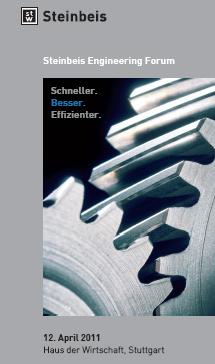 |
Steinbeis Engineering Forum took place on April 12, 2011 in Haus der Wirtschaft, Stuttgart.
Dipl.-Ing. Theo Hack (EADS) and Prof. Aleksandar Jovanovic (Steinbeis R-Tech) gave a speech with the title:
Produktrisiko - Sicherheit und Nachhaltigkeit von Neuen Technologien
Beispiel: Automobil- und Flugzeugtechnik
Further information can be found on the flyer and the website.
 |
Steinbeis Engineering Forum took place on April 12, 2011 in Haus der Wirtschaft, Stuttgart.
Dipl.-Ing. Theo Hack (EADS) and Prof. Aleksandar Jovanovic (Steinbeis R-Tech) gave a speech with the title:
Produktrisiko - Sicherheit und Nachhaltigkeit von Neuen Technologien
Beispiel: Automobil- und Flugzeugtechnik
The complete program and further information about the event can be found on the
flyer and the website. |
|
|
|
|
|
|
21 Mar
2011 |
Steinbeis EnvironNIS project finished – the results praised as "one of the best and the most comprehensive studies, ever performed in Serbia" |
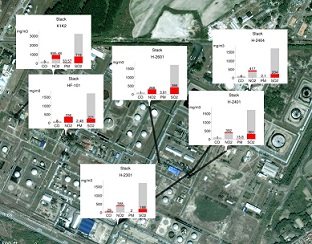 |
Steinbeis Advanced Risk Technologies GmbH and D’Appolonia S.p.A have finished the project Complex ecological examination of Naftna industrija Srbije (NIS) production facilities (EnvironNIS), whereby assessment done in 2010 had covered main environmental issues (air, soil, groundwater and waste water) on 12 selected facilities. The project results were presented at a press conference on March 17, 2011 and according to the words of Minister of Environment, Mining and Spatial Planning, Oliver Dulić, EnvironNIS is "one of the best and the most comprehensive studies, ever performed in Serbia".
Steinbeis Advanced Risk Technologies GmbH and D’Appolonia S.p.A have finished the project Complex ecological examination of Naftna industrija Srbije (NIS) production facilities (EnvironNIS) and submitted the final reports. This comprehensive study was undertaken in 2010 as defined by the Agreement on purchase and sale of NIS shares and in accordance with the Technical assignment approved by Serbian ministries in charge.
|
Final reports were submitted in two languages (English and Serbian) for each of the facility, what makes 24 reports with about 2500 pages. The reports contain description of actual environmental status (soil, groundwater, waste water and air), evaluation of EHS management, as well as assessment of potential environmental risks and proposals for corrective measures.
30+ experts from Steinbeis Advanced Risk Technologies GmbH and D'Appolonia were participating in assessment and reporting work.
|

|
The results of the study were presented at the press conference that took place on March 17, 2011 in the Serbian government’s press room, Nemanjina 11 in Belgrade. Minister of Environment, Mining and Spatial Planning, Oliver Dulić, CEO of Naftna industrija Srbije (NIS) Kirill Kravchenko and the head of the NIS Directorate for Industrial and Environmental Safety, Occupational Safety and Health Stanislav Dedovec pointed out the importance of this study and answered a number of questions.
According to the Minister Dulic's words EnvironNIS project is "one of the best and the most comprehensive studies, ever performed in Serbia".
NIS has already invested 90 million € in environmental projects (60 million € financed by Gazprom Neft) but, based on the results and proposals of the EnvironNIS study, 9.6 million € will be additionally invested.
|
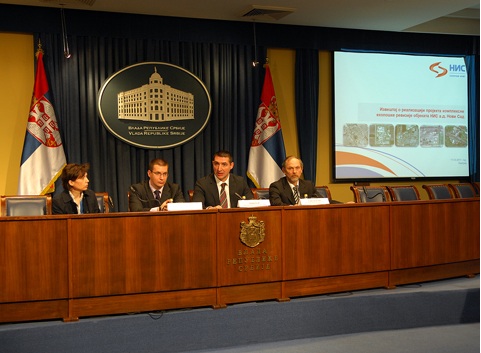 |
|
|
|
|
|
|
13 Mar
2011 |
Japanese multiple catastrophe |
 |
EU-VRi President, Prof. O. Renn, speaks at German television about the Japanese multiple catastrophe (earthquake, tsunami, nuclear accidents). Need to understand the concept of societal/political decision about "the acceptable remaining risk", relationship between alternatives (multiple risks and risk-risk tradeoffs!), inclusion of time into the considerations... Just as the disaster itself, the debate show that the topics dealt/tackled by the EU-VRi and its members (Steinbeis R-Tech, INERIS, Univ. of Stuttgart ZIRN, ... ) , and in particular iNTeg-Risk project (e.g. NaTech – Nature-technology risks) and this year's iNTeg-Risk Conference (Multiple risks, risk-risk-tradeoffs...) timely and important are.
The whole broadcast is to be seen using the link.
 |

|
EU-VRi President, Prof. O. Renn, speaks at German television about the Japanese multiple catastrophe (earthquake, tsunami, nuclear accidents). Need to understand the concept of societal/political decision about "the acceptable remaining risk", relationship between alternatives (multiple risks and risk-risk tradeoffs!), inclusion of time into the considerations... Just as the disaster itself, the debate show that the topics dealt/tackled by the EU-VRi and its members (Steinbeis R-Tech, INERIS, Univ. of Stuttgart ZIRN, ... ) , and in particular iNTeg-Risk project (e.g. NaTech – Nature-technology risks) and this year's iNTeg-Risk Conference (Multiple risks, risk-risk-tradeoffs...) timely and important are.
The whole broadcast is to be seen using the
link.
|
|
|
|
|
|
|
26 Jan
2011 |
IRGC has published the report ‘The Emergence of Risks: Contributing Factors’ |
 |
The publication of this report marks the conclusion of the first phase of IRGC’s ongoing project on emerging risks. With this report, IRGC aims to raise awareness among professionals about the fact that risks emerge from a common ‘fertile ground’ cultivated by twelve generic factors which are described and illustrated in detail within the report. Click here to download this report.
IRGC and Emerging Risks
The International Risk Governance Council ( IRGC) is an independent foundation, which aims to improve the understanding and management of global risks that impact on human health and safety, the environment, the economy and society at large.
The project on emerging risks is part of IRGC’s work on core concepts of risk governance, and follows on from its work on risk governance deficits. IRGC defines as “emerging” a risk that is new, or a familiar risk in a new or unfamiliar context or under new context conditions (re-emerging). Emerging risks are issues that are perceived to be potentially significant but which may not be fully understood and assessed, thus not allowing risk management options to be developed with confidence.
 |
The Emerging Risks Report
The publication of this report marks the conclusion of the first phase of IRGC’s ongoing project on emerging risks. The objective of this first phase was to focus on the origins of emerging risks. With this report, IRGC aims to raise awareness among professionals about the fact that risks emerge from a common ‘fertile ground’ that is cultivated by twelve generic factors. The report describes and illustrates these twelve factors, which have the potential to amplify or attenuate the likelihood of a new risk emerging or the severity of its consequences. Some of these factors may provide ripe targets for risk management measures.
Phase 2 of the emerging risks project, currently underway, will explore the major obstacles that risk practitioners must overcome in order to improve their own capabilities for understanding, anticipating and responding to emerging risks. IRGC is working towards developing practical guidance for both the public and private sectors on how such obstacles can be overcome.
For downloading the report please use the following link: http://irgc.org/IMG/pdf/irgc_ER_final_07jan_web.pdf
|
|
|
|
|
|
|
13 Oct
2010 |
ESIG Award Winner Event in Nurmberg |
 |
The ESIG Award Winner Event was held in Nuremberg on 13 October, 2010. Prof. Jovanovic was invited as one of ETPIS´ senior representatives to give a keynote speech on this occasion.

|
The ESIG Product Stewardship Award is launched every two years and recognizes companies - especially SMEs - which show outstanding health, safety and environmental improvements in the handling, storage, use or transportation of solvents. In 2009 the winner was 120 people, family-owned distributor CSC Jaeklechemie, based in Nuremberg/Southern Germany. The corresponding local event was held in Nuremberg on 13 October, 2010. Prof. Jovanovic was invited as one of ETPIS´ senior representatives to give a keynote speech on this occasion.
For downloading the whole article in the ESIG Newsletter please use the Link.
|
|
|
|
|
|
|
01 Sep
2010 |
Collaboration with STATISTA |
 |
Steinbeis Institute Advanced Risk Technologies (Steinbeis Hochschule Berlin) has registered as user of STATISTA site on Sept. 1, 2010.
|
|
|
|
|
|
30 Jun
2010 |
EU-VRi is now a partner of the HWC 2010-2011 |
 |
EU-VRi has become a partner of the Healthy Workplaces Campaign 2010-2011 on Safe Maintenance, which is organised by EU-OSHA.
 |
EU-VRi: partner of the Healthy Workplaces Campaign 2010-2011
|
 |
The main theme of the campaign, which is organised by the European Agency for Safety and Health at Work (EU-OSHA), is the Safe Maintenance.
EU-VRi has fill in the registration in order to a partner and recently the application has been accepted. --> the letter
EU-VRi will be working closely together to promote their common goal that is to keep workplaces functioning safely and efficiently.
The Campaign was officially launched on 28 April 2010 by László Andor, EU Commissioner for Employment, Social Affairs and Inclusion.
The main actions of the campaign are:
- events organised around the theme of safe maintenance, especially during the annual European Week for Safety and Health at Work in October 2010 and 2011,
- dissemination of information sheets, DVDs and other pieces of Campaign material.
Soon, you will see on the website of EU-OSHA, the profile of EU-VRi as a partner.
More information:
--> The Healthy Workplaces Campaign 2010-2011 (HWC 2010-2011)
--> The European Agency for Safety and Health at Work (EU-OSHA)
|
|
|
|
|
|
24 Jun
2010 |
EU-VRi in the annual report of the INERIS |
 |
The INERIS which is one of the founding members of EU-VRi has published in its annual report of 2009 a presentation of EU-VRi with an interview of the Prof. Dr. Aleksandar Jovanovic, its CEO.
EU-VRi in the annual report of the INERIS 2009
“No innovation without control of the risks”
In its annual report 2009 of INERIS which has been recently published, the INERIS presents EU-VRi with in addition an interview of the Prof. Dr. Aleksandar Jovanovic, CEO of EU-VRi.
You can find the report here. (in French)
|
The presentation
The Institut National de l’Environnement industriel et des RISques (INERIS), a founding member of EU-VRi, presents the European Economic Interest Grouping and its different projects with some key figures. Indeed, the presentation gives information about INTeg-Risk and Alpha-bird and insists on the fact that EU-VRi approaches its projects in a multidisciplinary way what allows it to work effectively on the emerging risks.
|
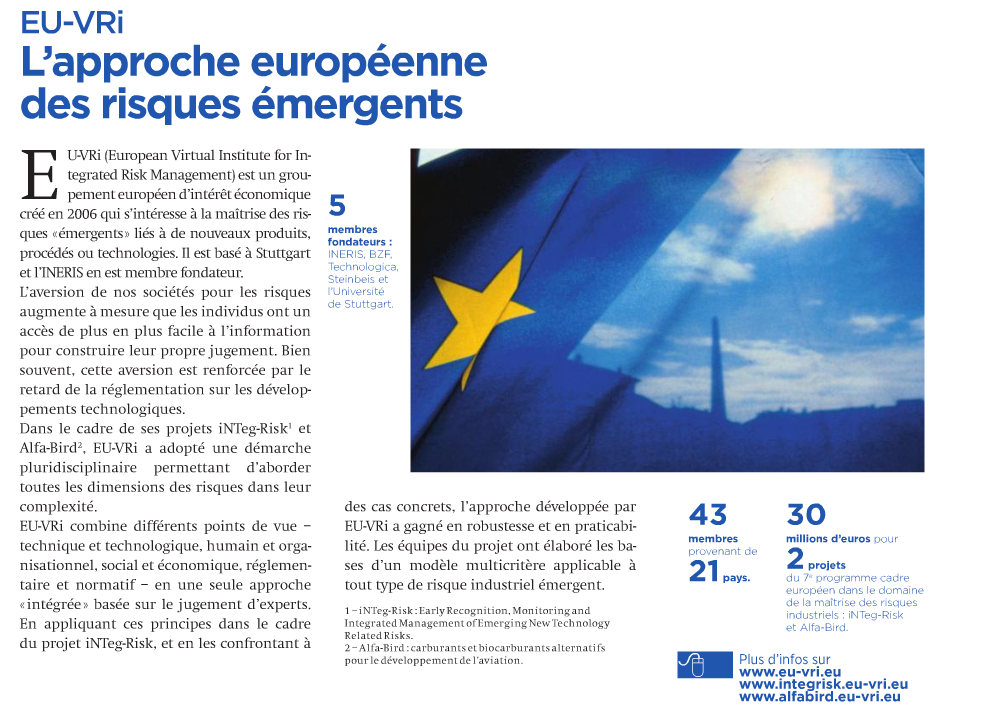
|
|
|
|
The Interview
In the interview which includes a presentation of the Prof. Dr. Aleksandar Jovanovic, the CEO of EU-VRi explains what INTeg-Risk is and what its goals are.
|
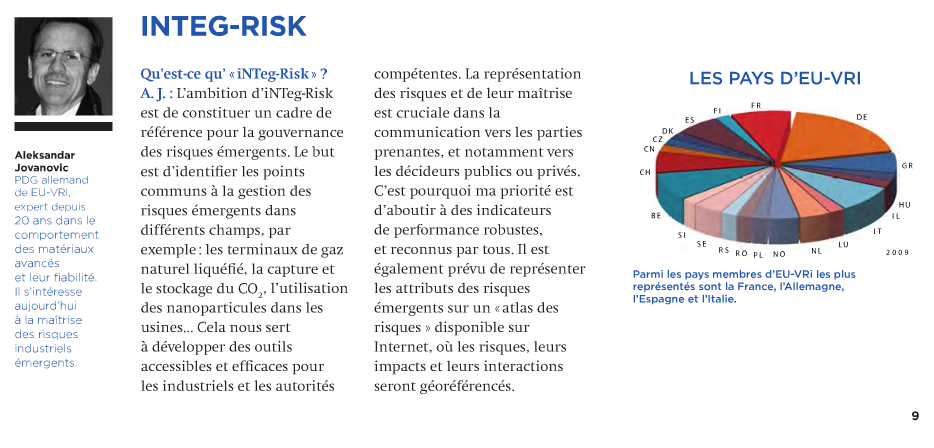
|
For more information about the INERIS:
http://www.ineris.fr/
|
|
|
|
|
|
|
|
23 Jun
2010 |
iNTeg-Risk in the Corporate Responsibility Report of the world’s second-largest reinsurer |
 |
Swiss Re has recently published its Corporate Responsibility Report of 2009, in which we can find information related to the partnership between Swiss Re and iNTeg-Risk.
iNTeg-Risk in the “2009 Corporate Responsibility Report Committed to sustainable value creation” of Swiss Re
In its report, Swiss Re, which is the world’s second-largest reinsurer, explains that its partnership with iNTeg-Risk is one of its strategic initiatives.
|
In cooperation with its external partners, Swiss Re actively contributes to four strategic initiatives dealing with emerging risks. In this way they want to raise awareness of selected emerging risks and support the business community in prioritizing, communicating and managing them.
- WEF - Global Risk Network
- Chief Risk Officer Emerging Risk Initiative
- International Risk Governance Council
For more information about Swiss Re, you can visit its website here
|
|
|
|
|
|
|
|
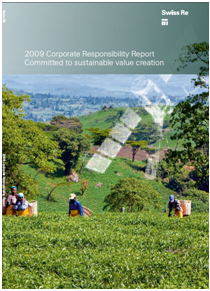
You can find the pdf of this report just above
|
|
|
|
|
|
|
27 Nov
2009 |
Steinbeis Advanced Risk Technologies and EU-VRi certified according to ISO 9001:2008 |
 |
The ZDH-ZERT audit on November 2, 2009 has proved that the Quality System of R-Tech / EU-VRi meets all requirements of the standard DIN EN ISO 9001:2008 – Quality management systems.
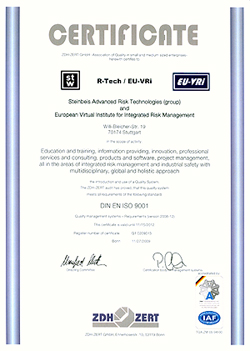
|
The ZDH-ZERT audit on November 2, 2009 has proved that the Quality System of R-Tech / EU-VRi meets all requirements of the standard DIN EN ISO 9001:2008 – Quality management systems.
The scope of activity: Education and training, information providing, innovation, professional services and consulting, products and software, project management, all in the areas of integrated risk management and industrial safety with multidisciplinary, global and holistic approach.
 |
|
|
|
|
|
|
|
|